-
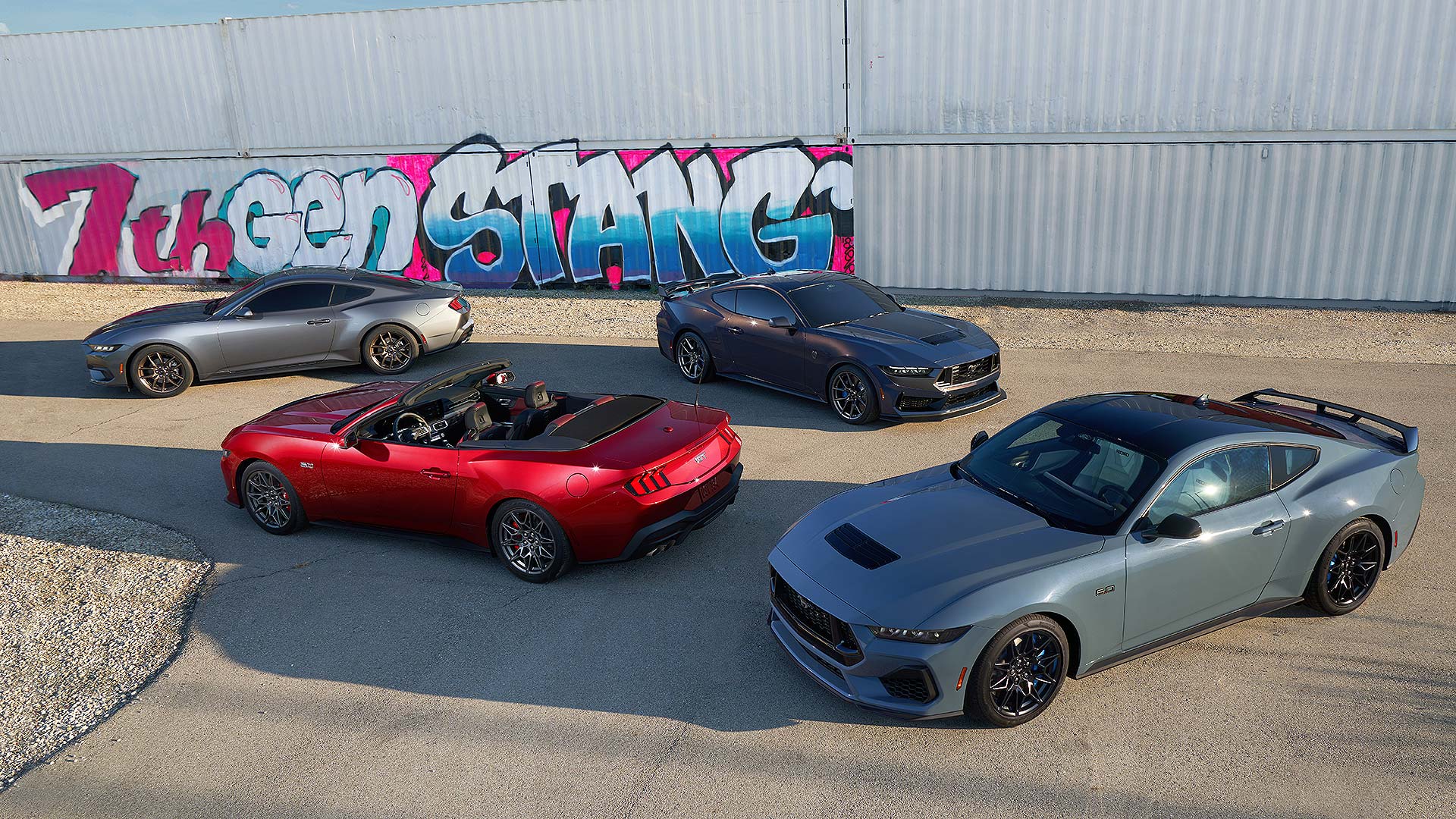
New Ford Mustang Dark Horse
© FordThe new Ford Mustang Dark Horse has hit the highway for the first time, with launch drives of the new track-only ‘Stang now hitting the headlines.
The Dark Horse builds upon the huge performance promised by the latest Ford Mustang, along with its fresh styling and updated technology beneath the skin.
It marks the latest chapter for a much-loved vehicle that has become the world’s best-selling sports car. Join us for a look at how the Mustang became a global icon.
-
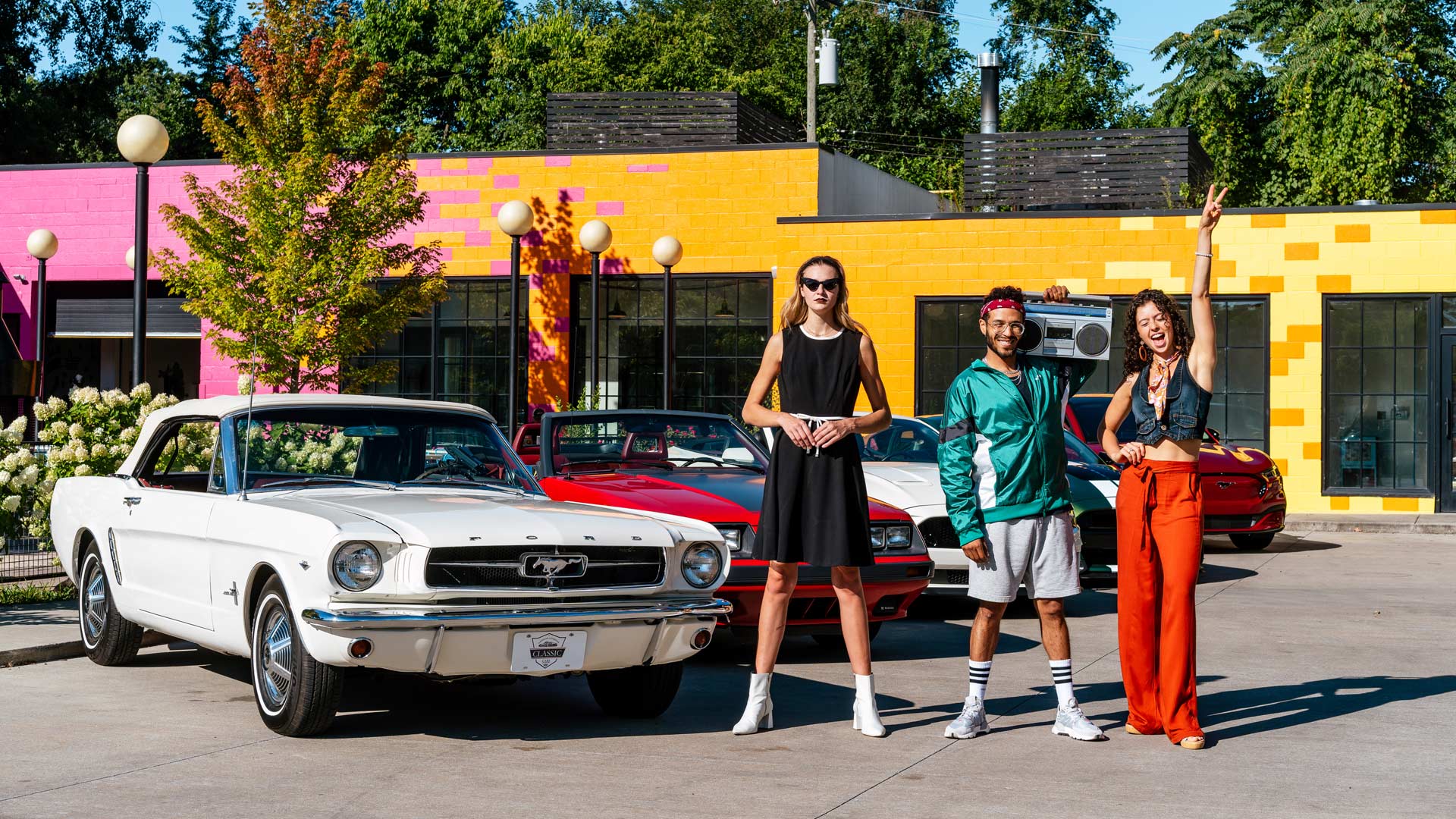
Seven generations and decades of history
© FordThe significance of the new Mustang is not lost on Ford. “Investing in another generation of Mustang is a big statement at a time when many of our competitors are exiting the business of internal combustion vehicles,” said Jim Farley, CEO of Ford Motor Company.
With millions of Mustangs built since 1964, and countless fans around the world, getting this new model right matters to the Blue Oval.
Let us take a look at what has inspired and motivated Ford when producing the new Mustang.
-
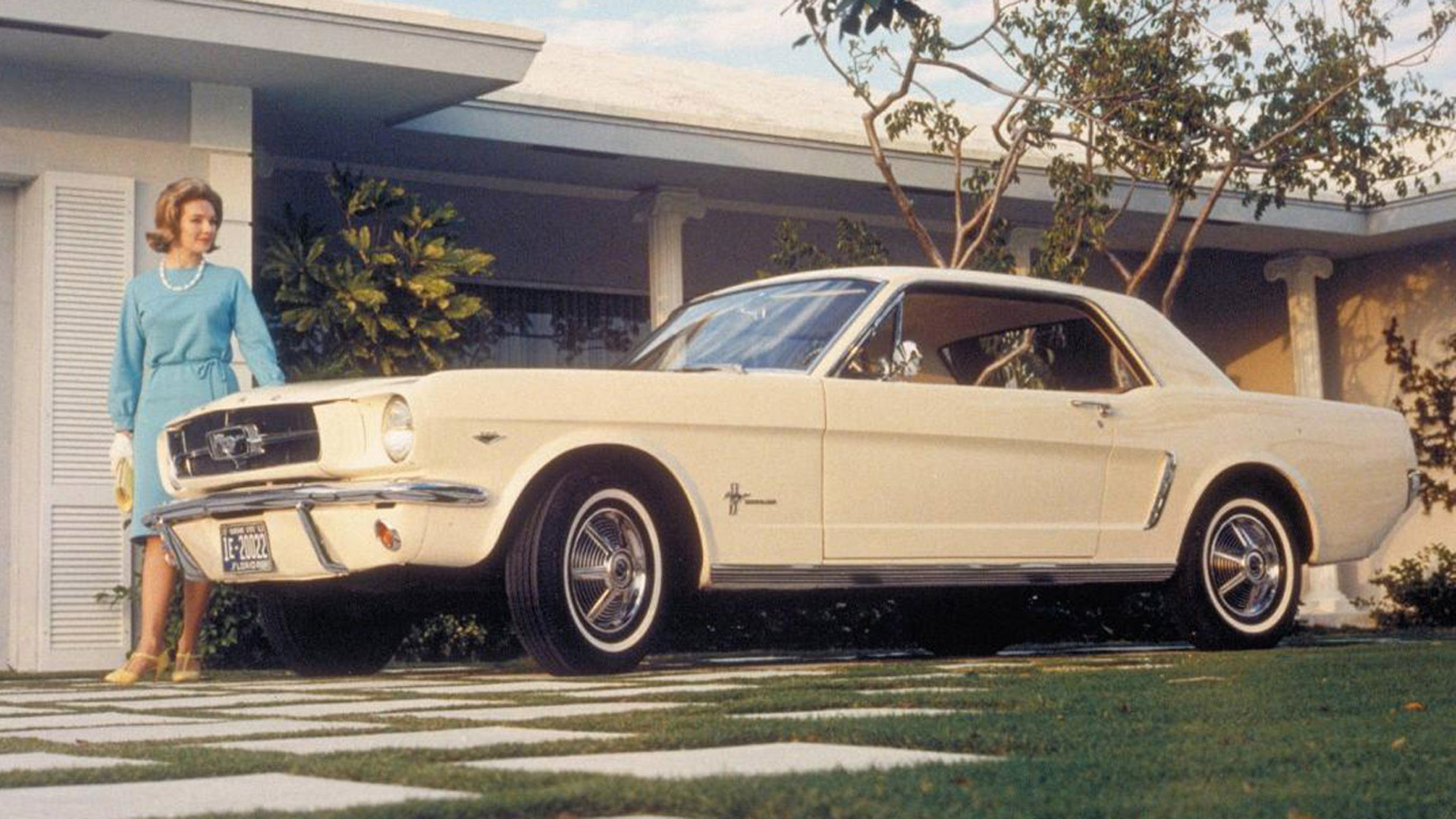
Ford Mustang: a vision
© FordWithout Lee lacocca and Hal Sperlich, it’s debatable whether we’d have seen the Ford Mustang at all. As Iacocca, Ford’s former vice president and general manager, told Automotive News, he had “a vision of an American-made four-seat sporty car”. At the time, no such thing was being built, so lacocca was working on a hunch. He felt there was a market driven by baby boomers. The year was 1960.
-
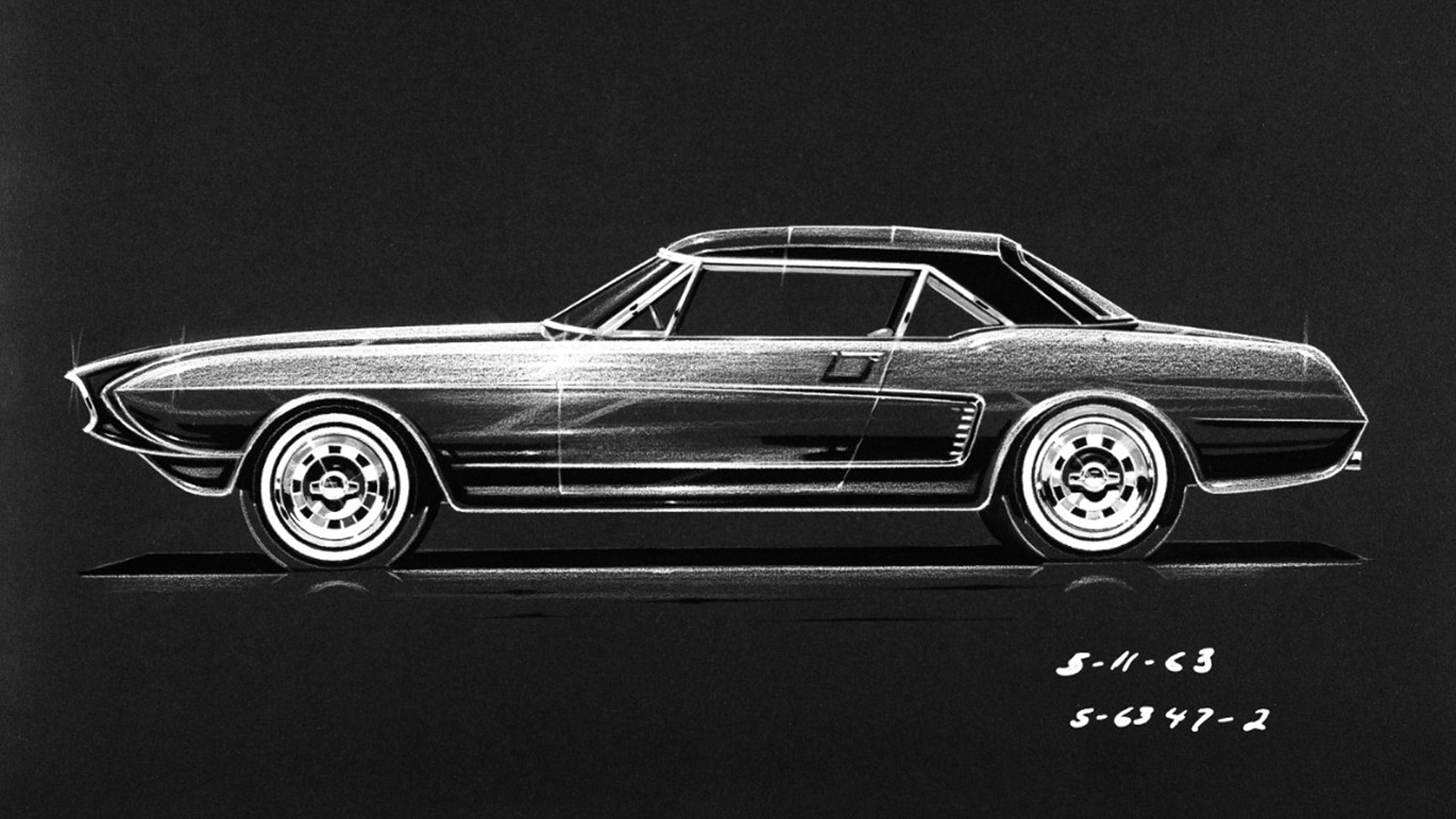
New car to cost less than $2,500
© FordLee lacocca’s vision was very descriptive. As well as seating four people, the newly-installed vice president wanted the car to have bucket seats, a floor-mounted shifter, be no more than 180 inches in length and weigh less than 2,500 lbs. Crucially, the car would retail for less than $2,500. Remember, lacocca and his team were working without market data, forecasts or any kind of precedent.
-
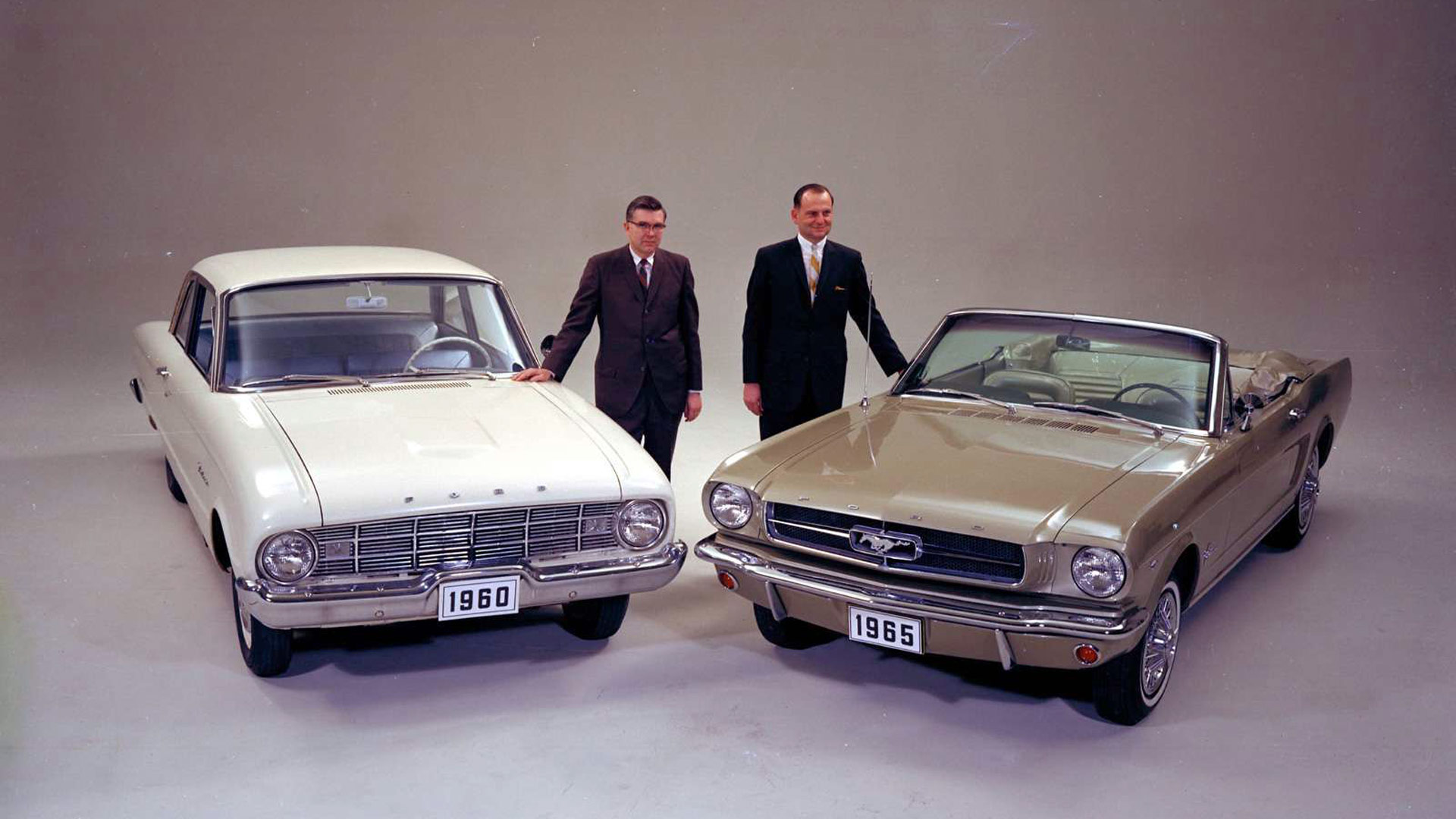
Based on the Ford Falcon
© FordIn much the same way that the European version of the Mustang, the Ford Capri, was based on a more humble platform, the original pony car was based on the second-generation Ford Falcon. This hugely successful car was also launched in 1964 and provided Ford with the ideal building blocks to deliver lacocca’s vision.
-
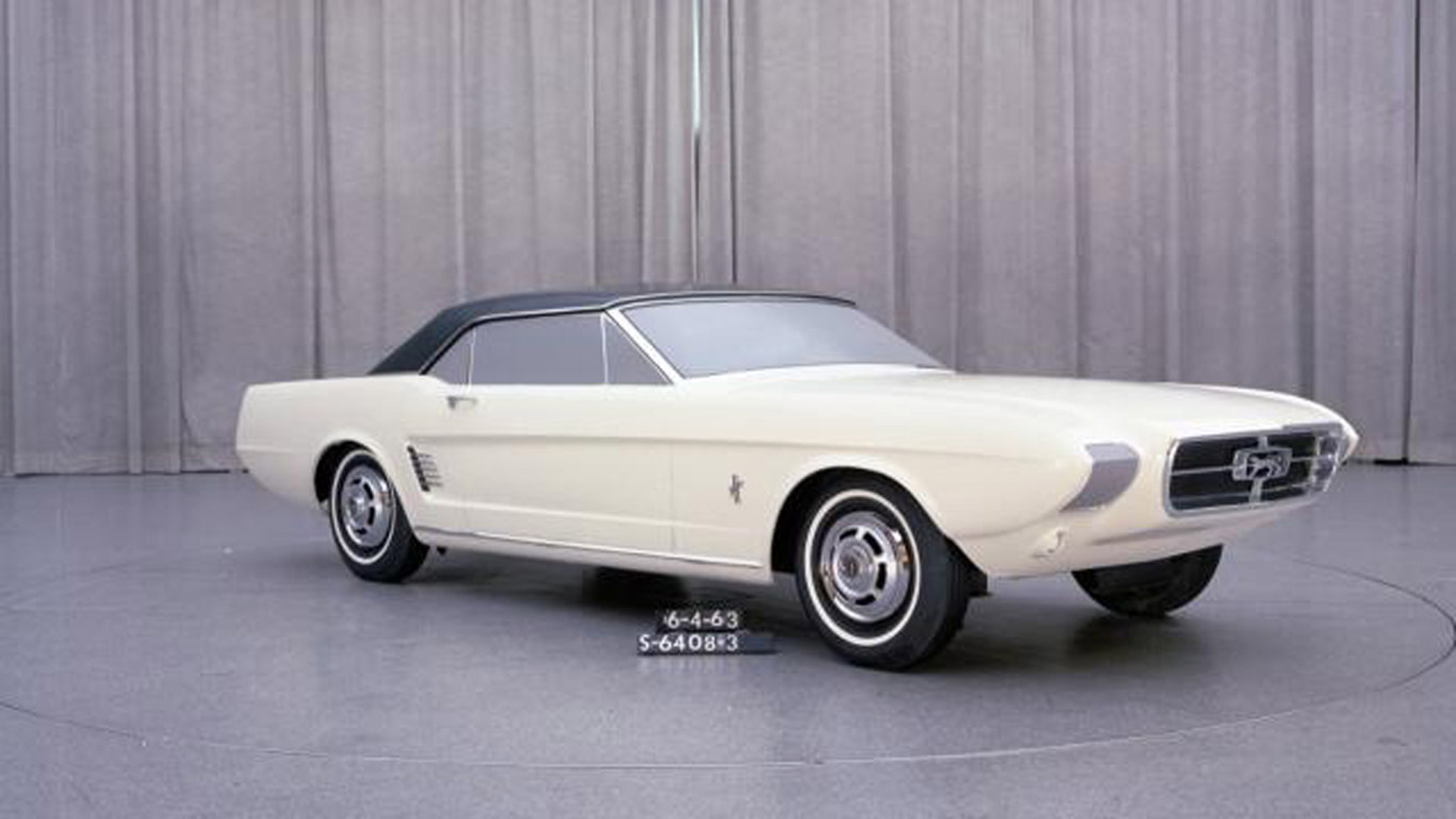
Original design by Gale Halderman
© FordThe economic benefits associated with using an existing platform are obvious, but it did provide Ford with a huge springboard with which to take the project forward. The company launched an internal competition to design the new car and it was a sketch penned by Gale Halderman that ticked the most boxes.
From the outset, lacocca wanted a long hood and short rear-end, mimicking the design found on European cars of the period. This picture shows a 1963 clay model of one of the shapes considered.
-
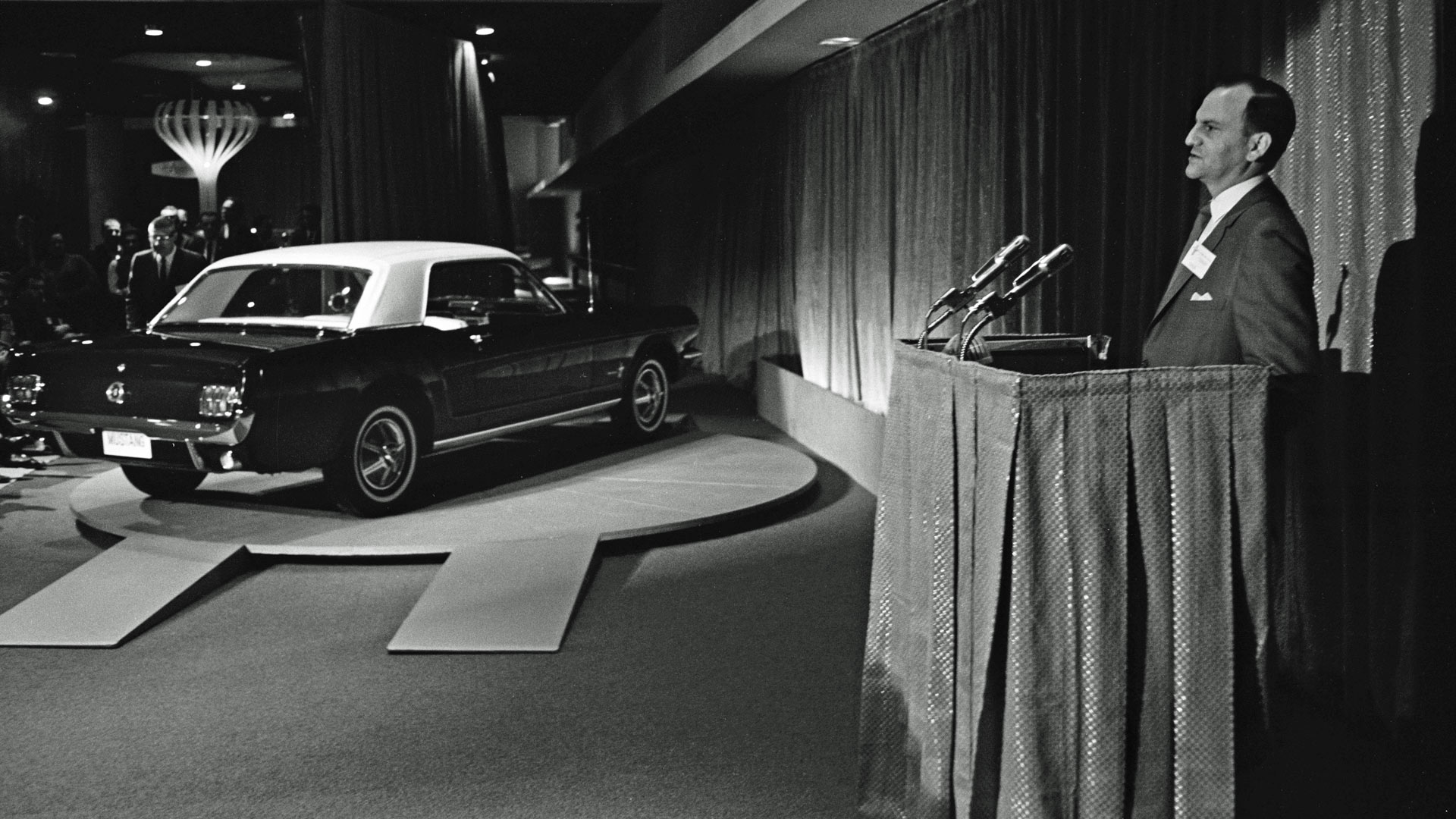
Iacocca’s job was on the line
© FordLee lacocca was under huge pressure to deliver with the Ford Mustang. As Automotive News outlined, Ford had just suffered one of the biggest losses in its history, with the much-maligned Edsel killed off at a loss of $250 million.
-
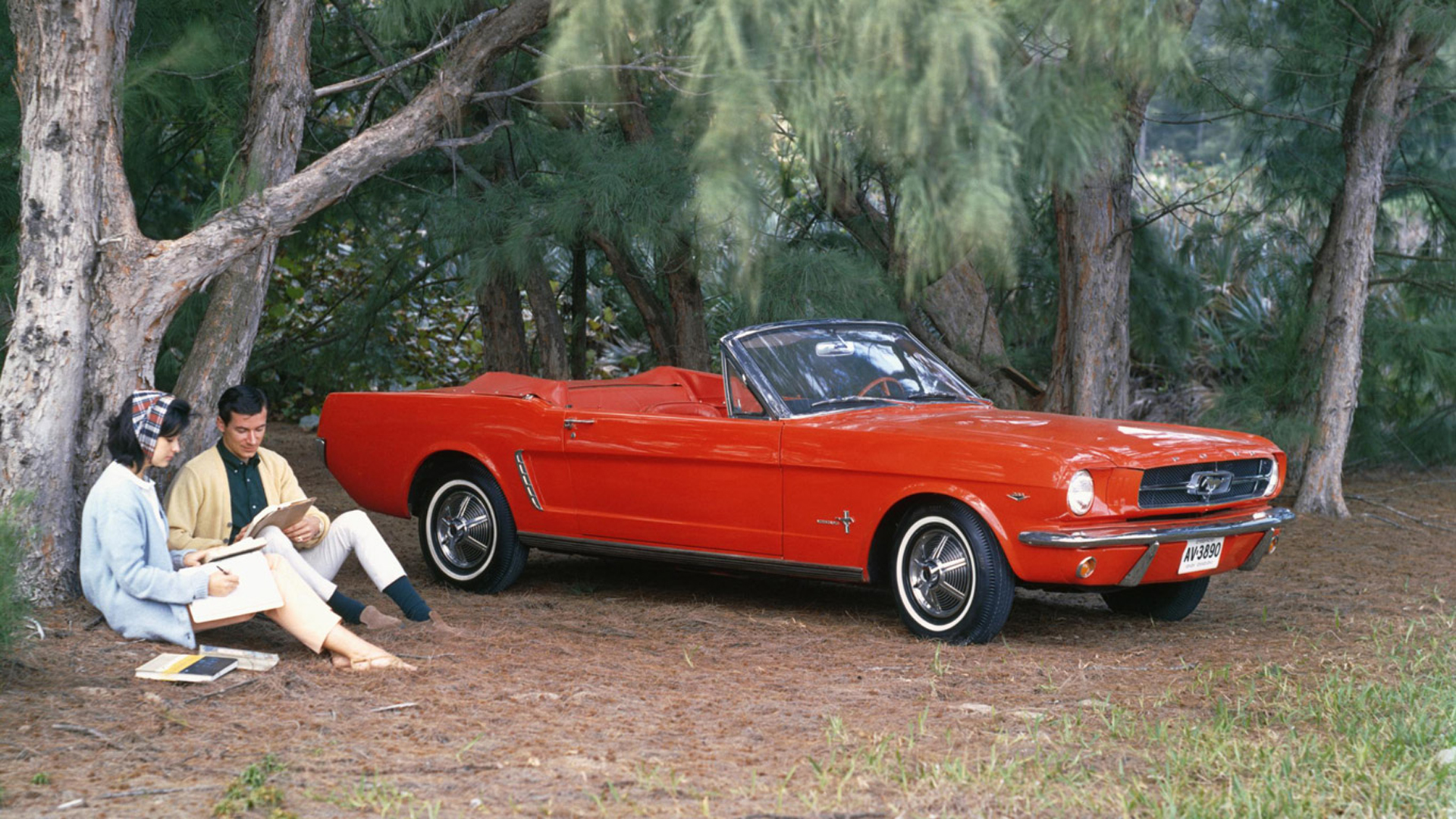
The other father of the Ford Mustang
© FordBut if lacocca’s job was on the line, so too was Hal Sperlich’s. He was the Special Studies man who had seemed intent on progressing with a four-seat version of the Ford Thunderbird. It was Sperlich who decided to base it on the dull-but-worthy Ford Falcon. That something so beautiful and iconic could emerge from the Falcon was nothing short of a miracle, not least because of the limited budget the team had at their disposal.
-
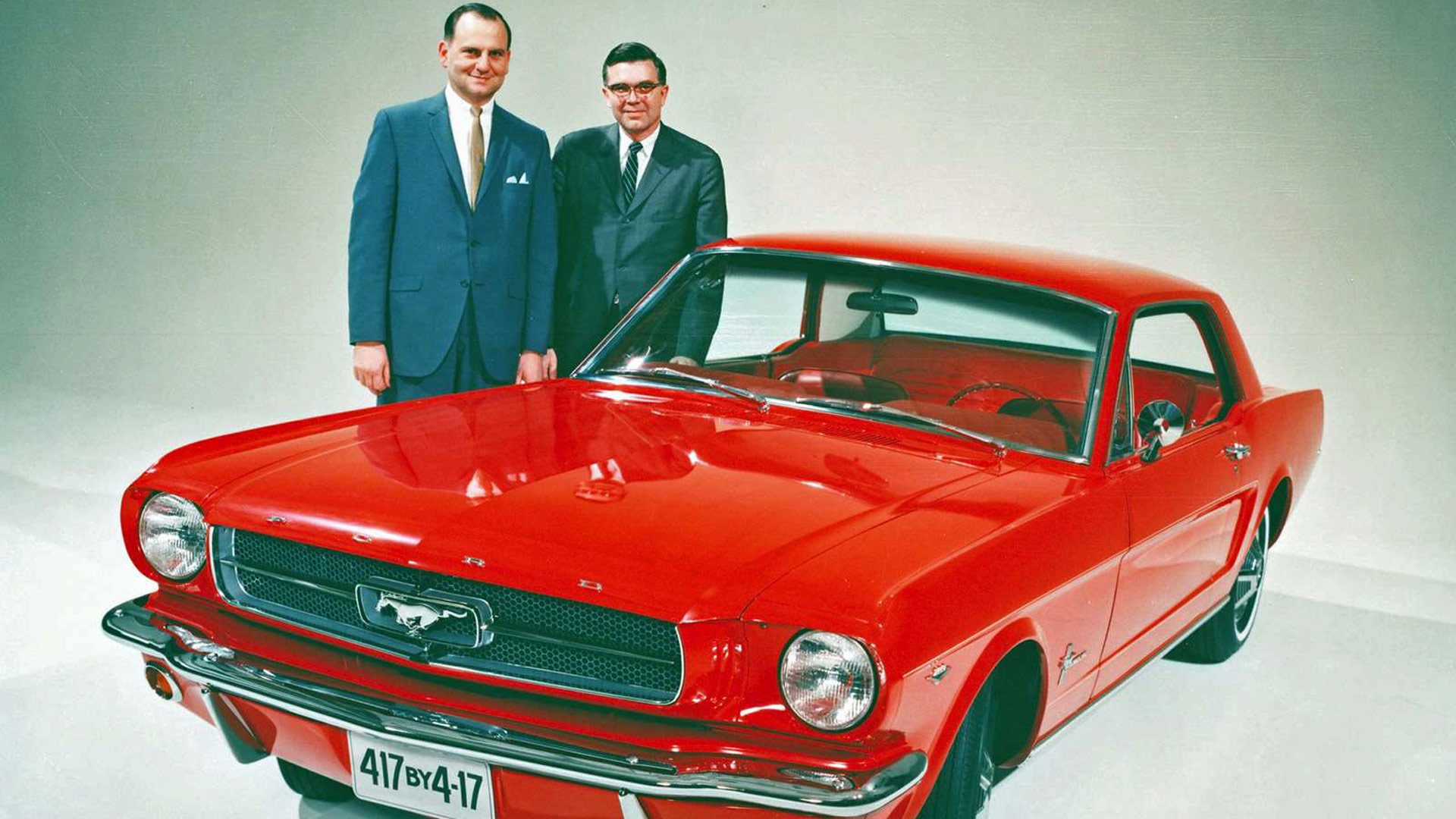
Ford Mustang: completed for just $75 million
© FordYou need to remember that back in 1960 there was no such thing as an affordable, small and sporty car. The Ford Mustang was a genuine game-changer. Sperlich said he spent three days solid in the engineering department, stretching the front-end and squashing the back, all on a Ford Falcon platform. The project was completed for a mere $75 million. Compare that with the losses experienced with the Edsel.
-
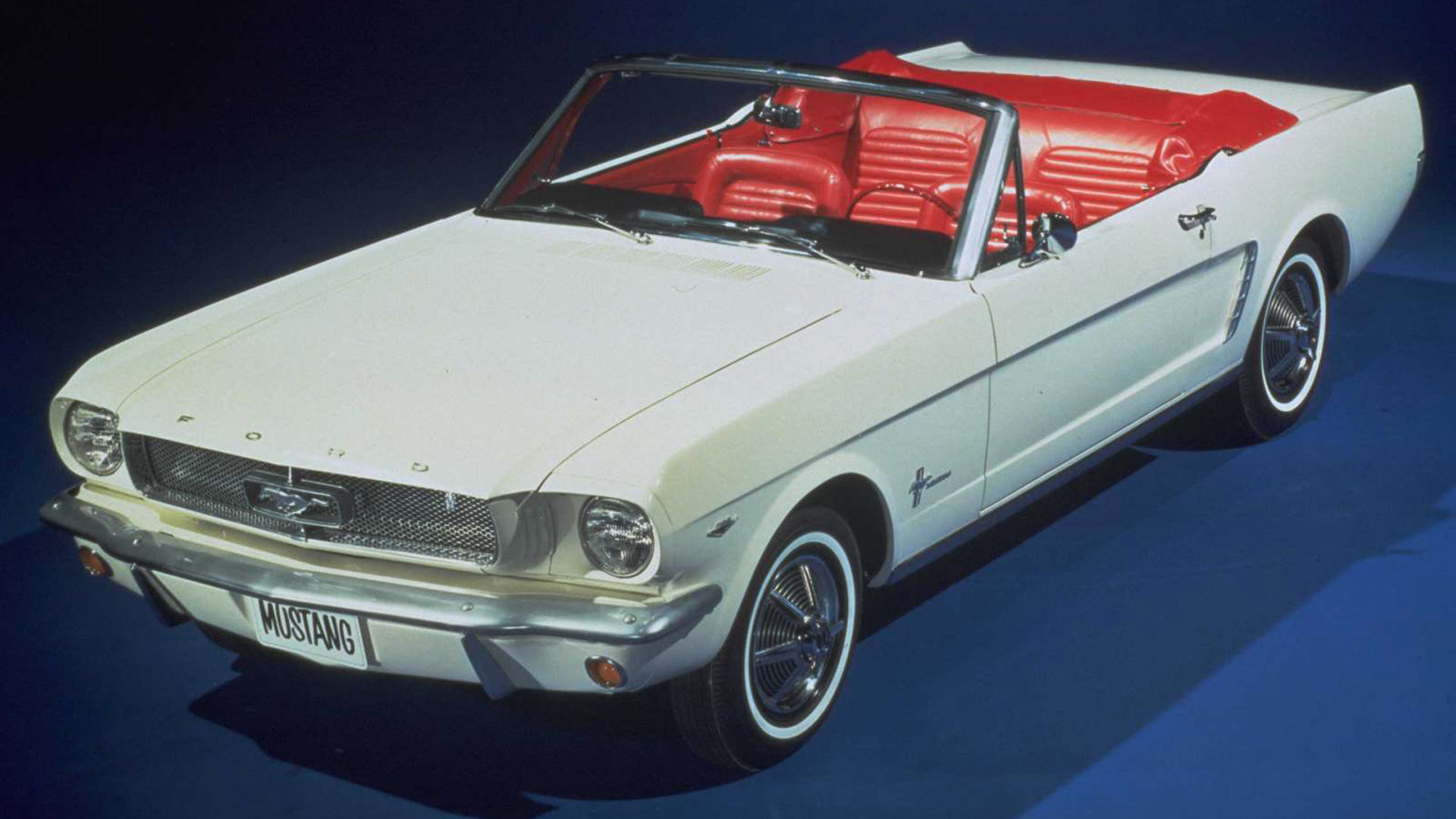
Mustang: swept along on a wave of optimism
© FordClearly, Ford got it right the first time with the Mustang. But there was a sense that they had chanced upon a perfect concept at just the right time. This was the early 1960s, a decade filled with optimism and – prior to the Mustang’s launch – the good vibe delivered by President John F. Kennedy. But there was something else that helped the Mustang along…
-
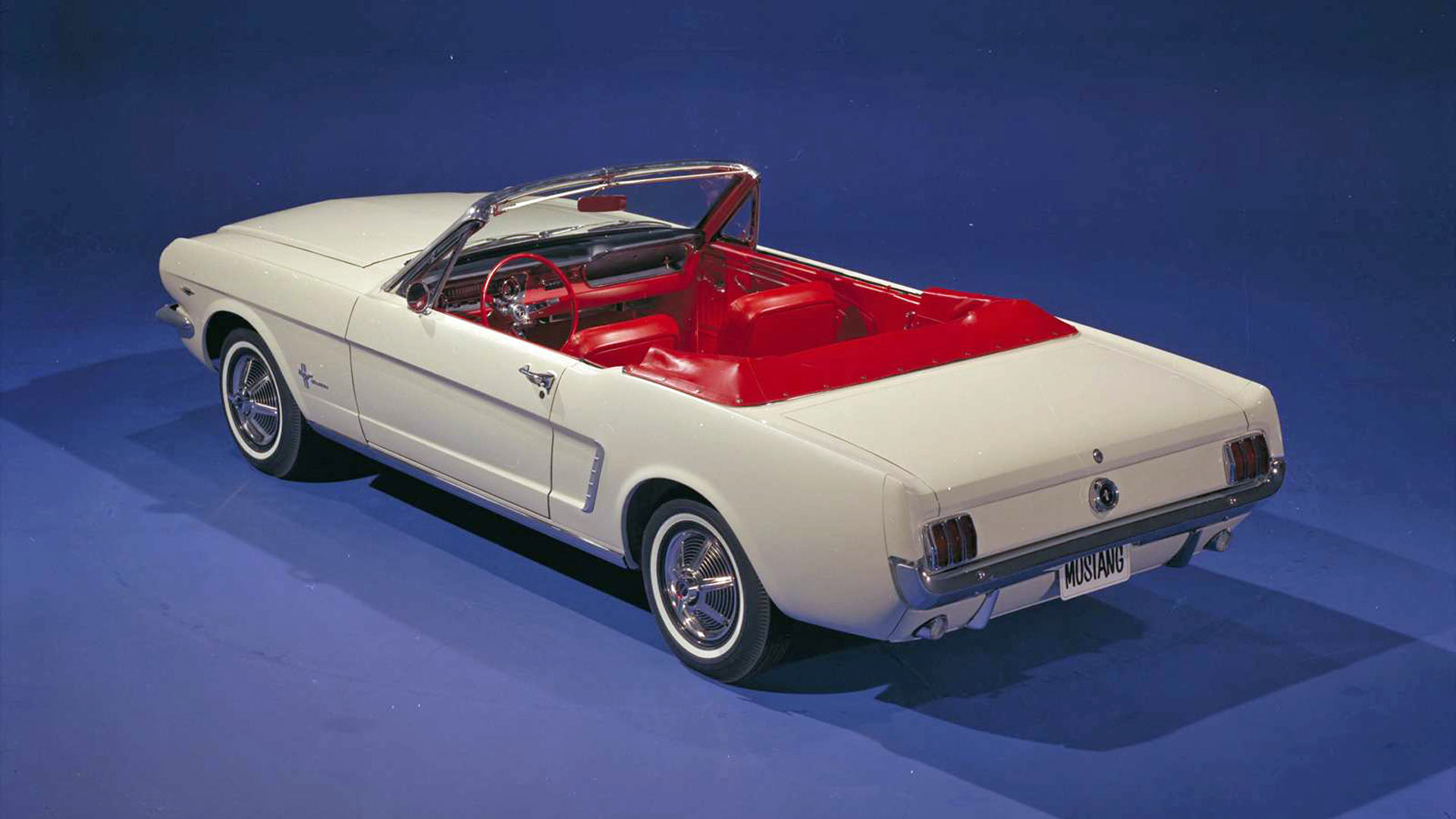
Ford Mustang: the car designed by you
© FordFord delivered on its promise to offer the Mustang for $2,500, but that was merely the start of it. Customers could personalize their new pony car with any number of options, from colors and wheels through to the interior trim. Mustang customers could quite literally make the car their own. It was marketed as “the car to be designed by you”.
-
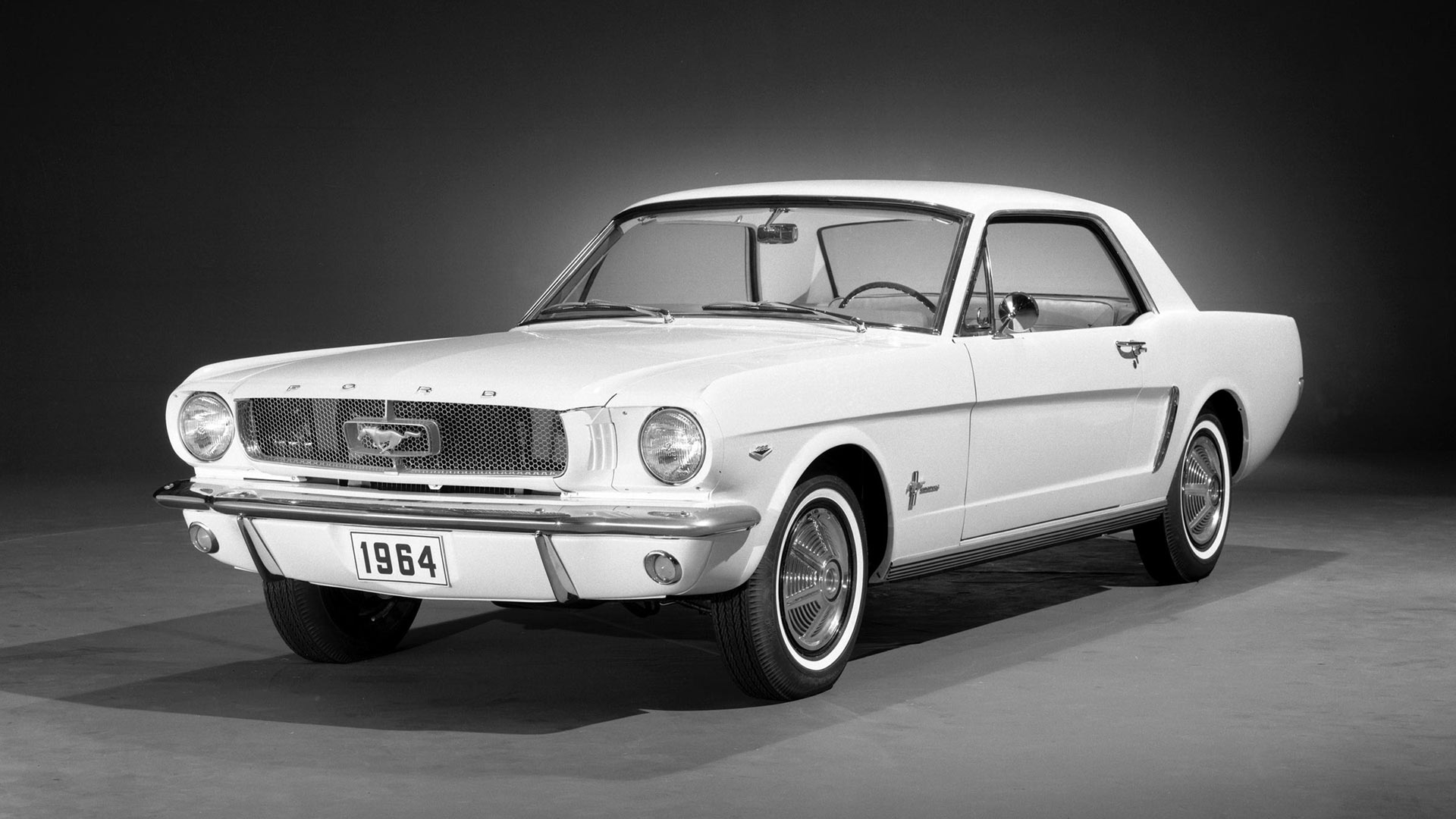
First Mustang produced in March 1964
© FordOn 9 March 1964, the first Ford Mustang rolled off the production line. This was a mere 18 months since the car had been approved for production – a monumental achievement by the project team. Ford knew it had found a winning recipe here and was keen to ensure none of its competitors stole a march and created a ‘Mustang’ of their own.
-
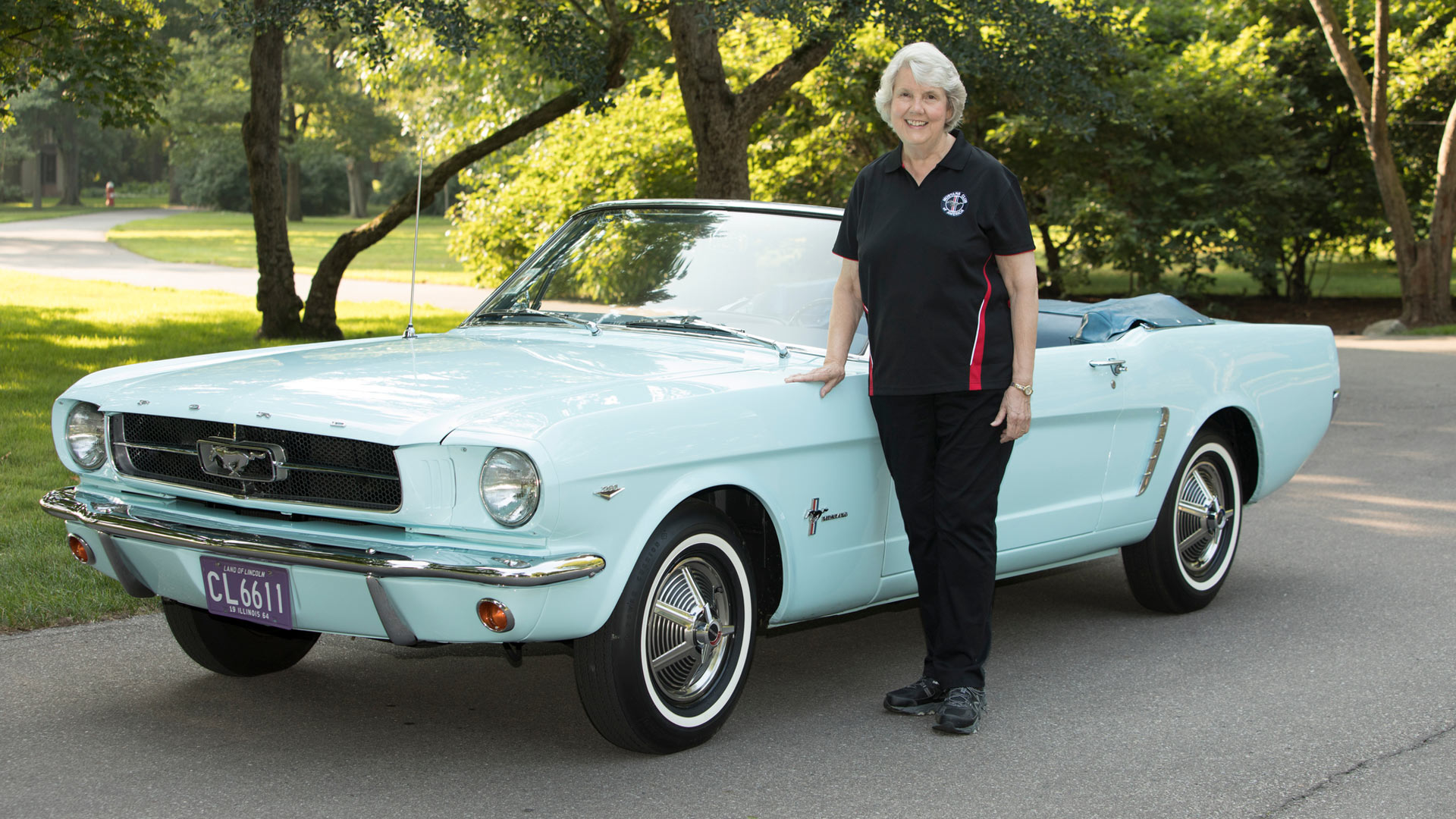
First Mustang sold in April 1964
© FordThe very first Ford Mustang was sold two days before its official launch to the world. Gail Wise became the first owner of a Mustang on April 15 1964.
-
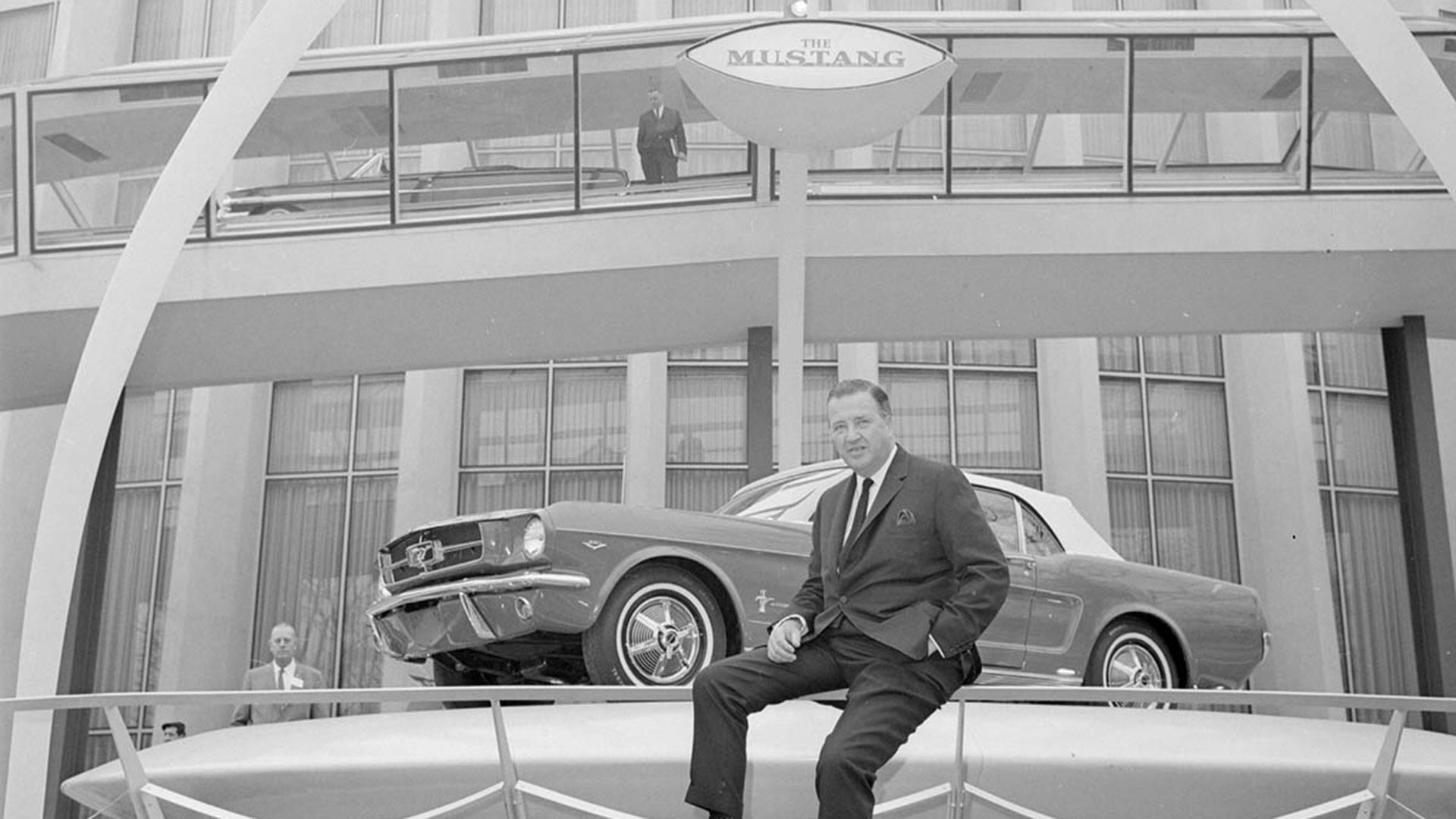
22,000 cars sold on day one
© FordThe Ford Mustang was a sales phenomenon. On the first day alone, Ford sold 22,000 units. By the end of the year, that figure had risen to 263,434. By the time its first anniversary had come around, Ford had sold 418,812 Mustangs. The one-million mark was achieved in just 18 months, making it the best-selling Ford since the Model T.
-
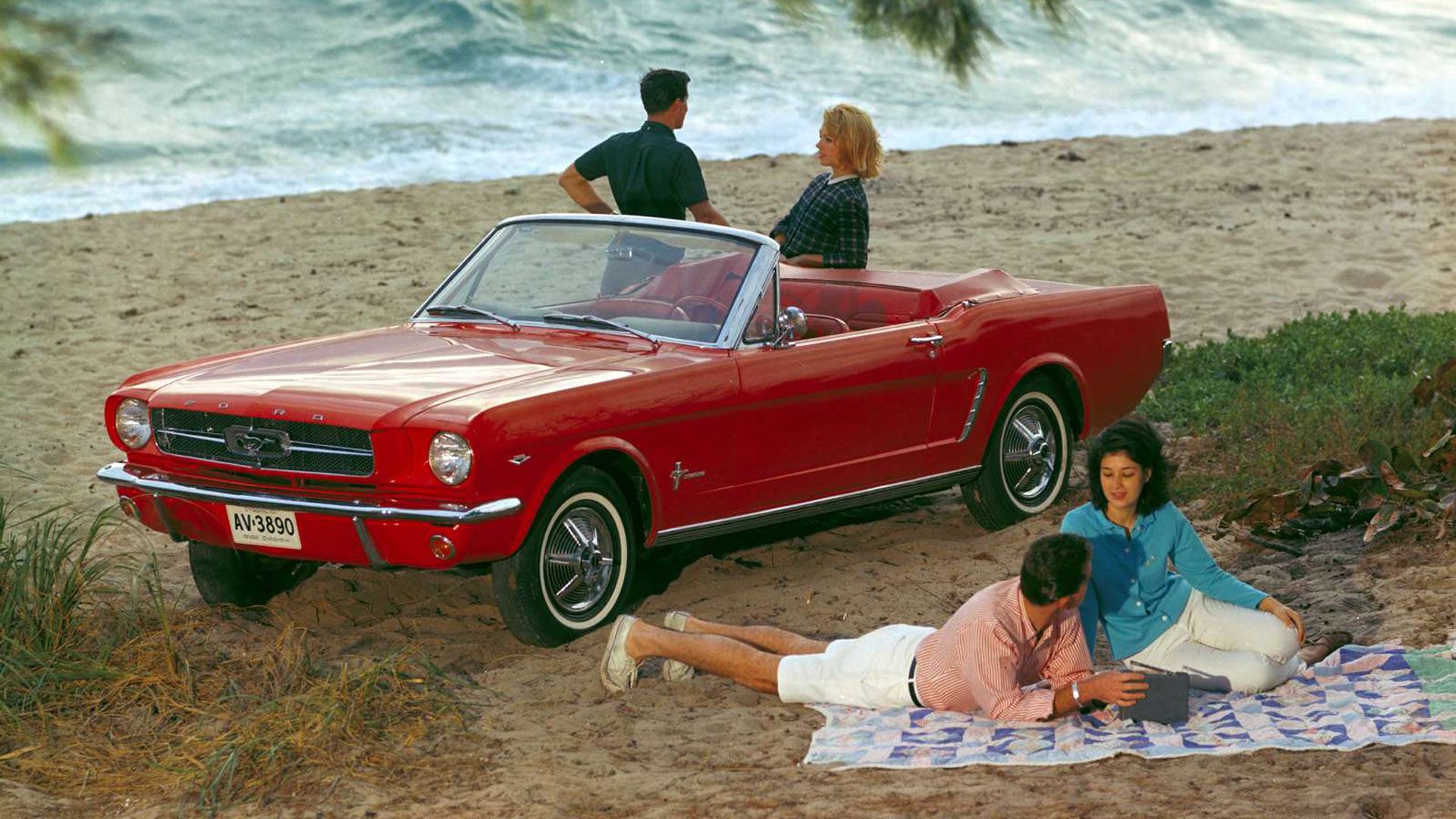
Ford Mustang 1964.5
© FordThe first car was known as the Ford Mustang 1964½, or early 1965 Mustang. All of the VIN numbers began with a 5, indicating model year 1965. Two variants were available: a convertible for $2,557 and a coupe for $2,320. Three engines were available at launch – a 101 hp 6-cylinder or a pair of V-8s – one developing 164 hp and the other a more potent 210 hp.
-
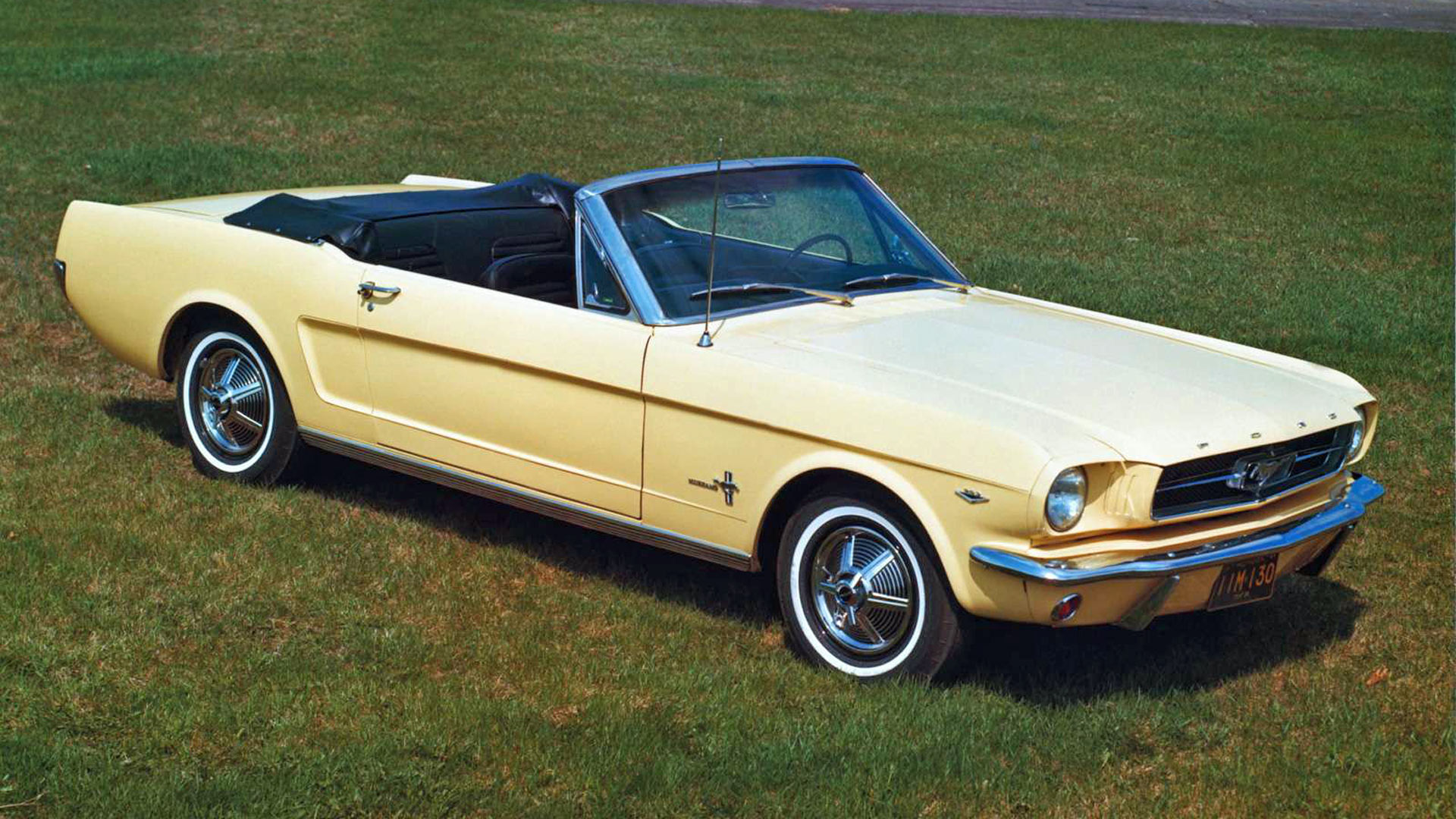
Production totaled 121,538
© FordIn total, 121,538 1964½ Mustangs would be built, 92,705 of them coupes, the remaining 28,833 convertibles. A total of 17 colors were available, including Poppy Red, Twilight Yellow, Skylight Blue, Phoenician Yellow and Wimbledon White. How very 1960s do these color names sound?
-
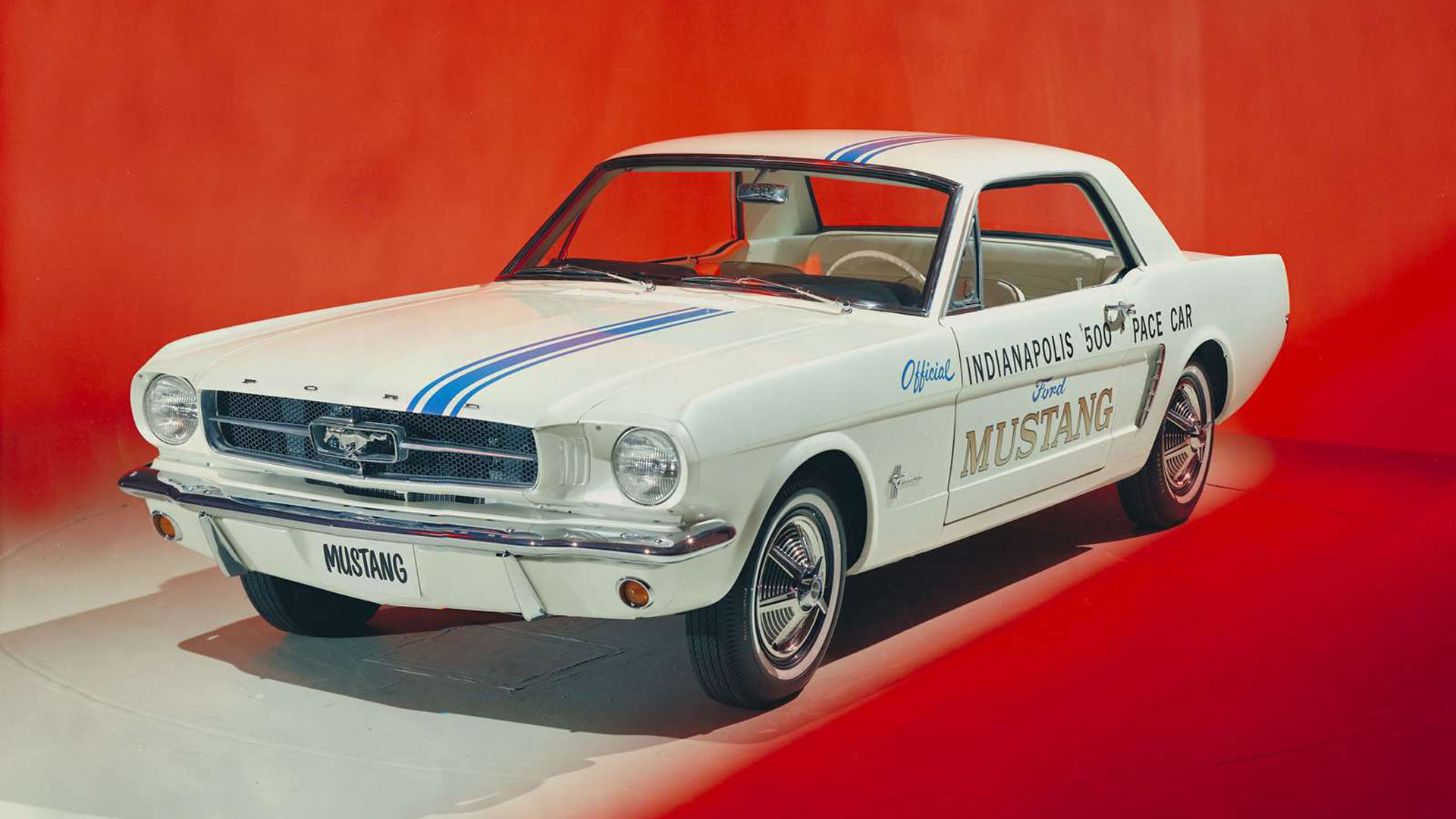
Indianapolis 500 pace car
© FordIn 1964, a Ford Mustang was selected as the official Indianapolis 500 pace car – not that Ford needed any more publicity. Advertisements had appeared in more than 2,500 newspapers, building on the exposure generated by the television ads. In total, more than four million people visited Ford showrooms.
-
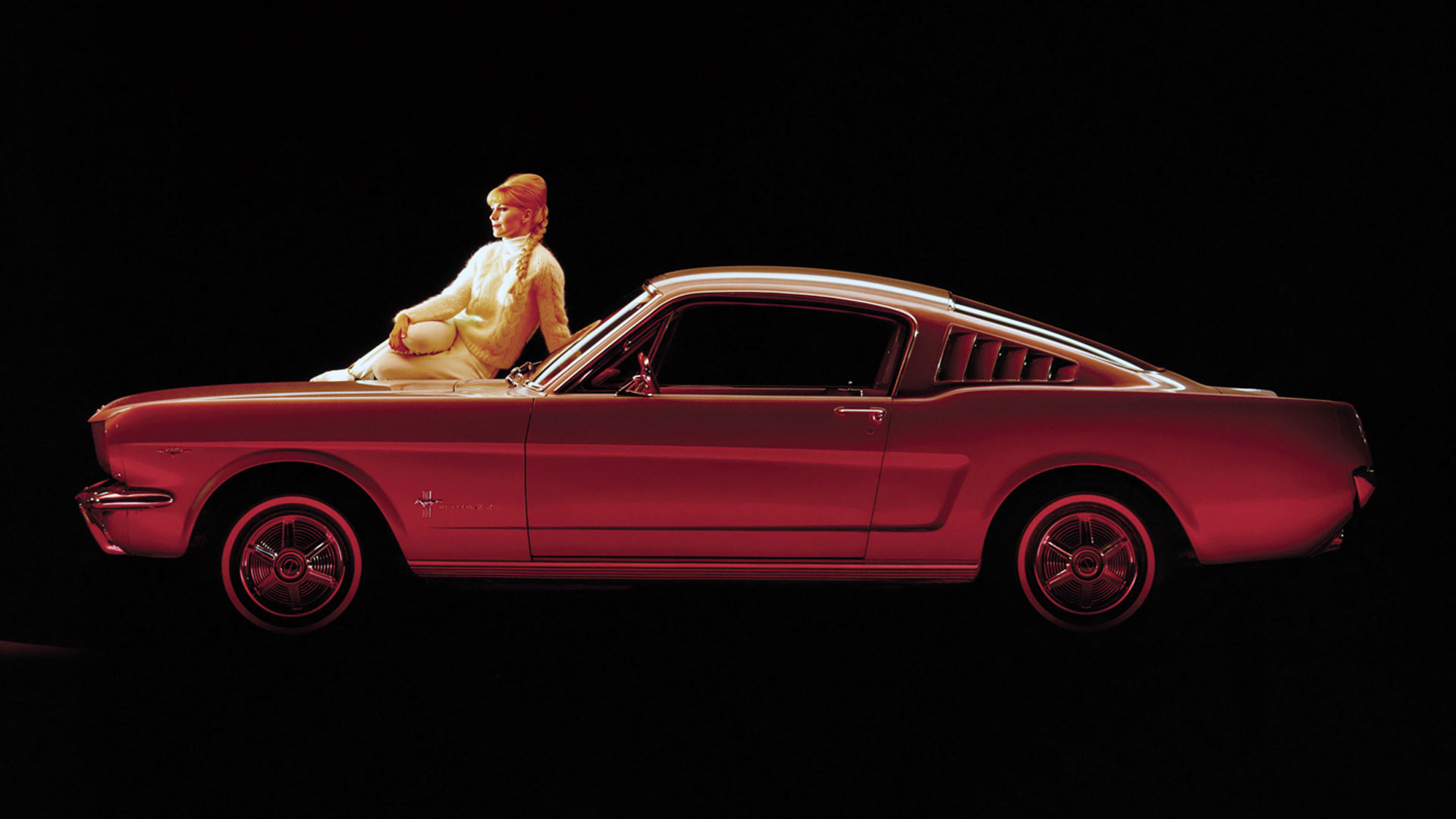
1965 Ford Mustang
© FordThe most significant change in 1965 was the addition of a fastback to the Mustang line-up, which would later form the basis for the Shelby GT350. The coupe remained the best-selling Mustang, accounting for nearly 75 percent of sales. The Mustang also received a number of mechanical and interior upgrades, as well as an increased number of engine options. Four V-8s were now available, in 200 hp, 225 hp, 271 hp and 306 hp flavors.
-
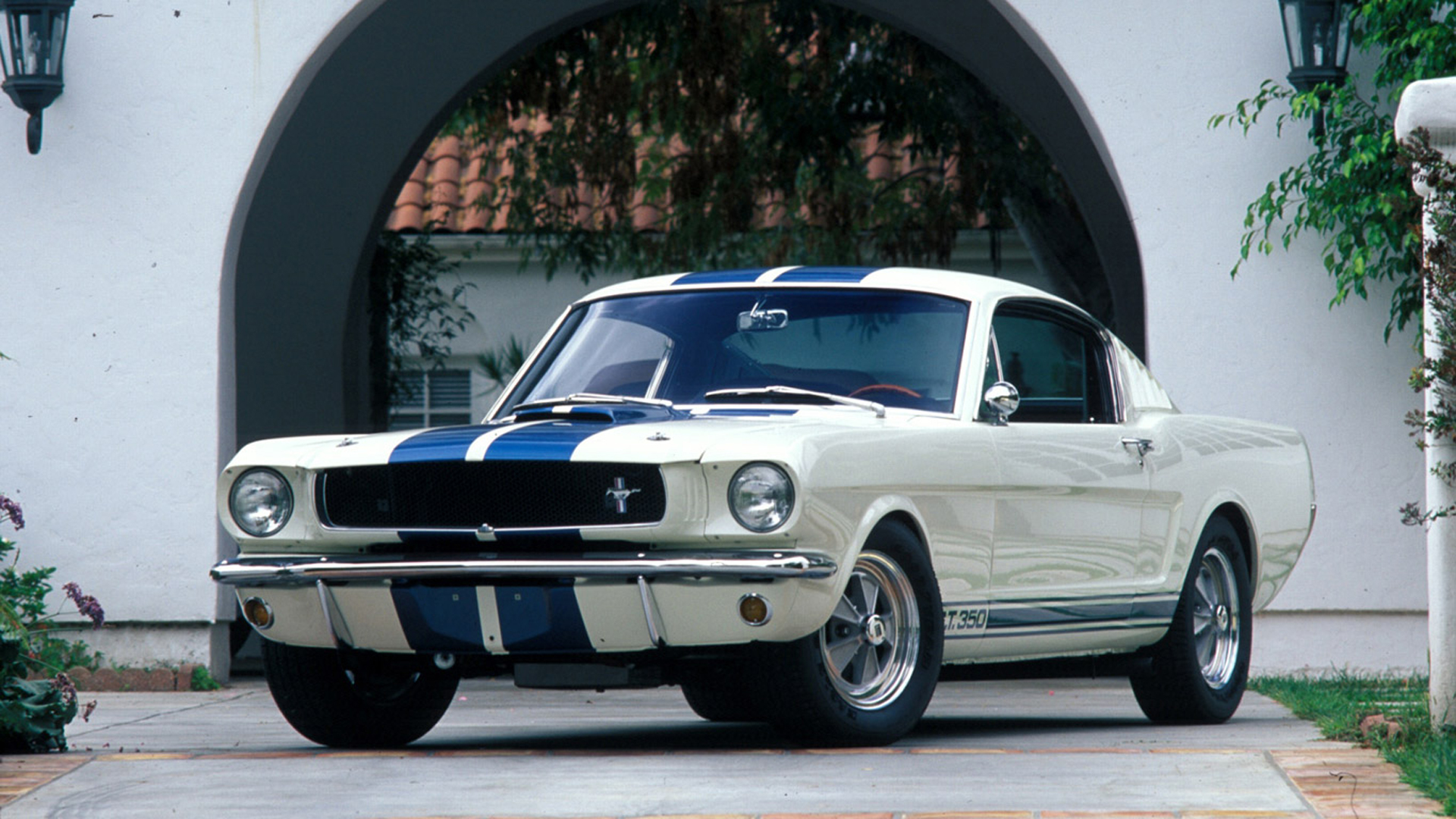
1965 Shelby Mustang GT350
© FordThis 306 hp model was in fact the legendary Shelby Mustang. These cars utilized the fastback body, but there were no rear seats. All cars were painted in Wimbledon White with Guardsman Blue stripes and a black interior. In all, a total of 559,451 Mustangs were produced in the 1965 model year.
-
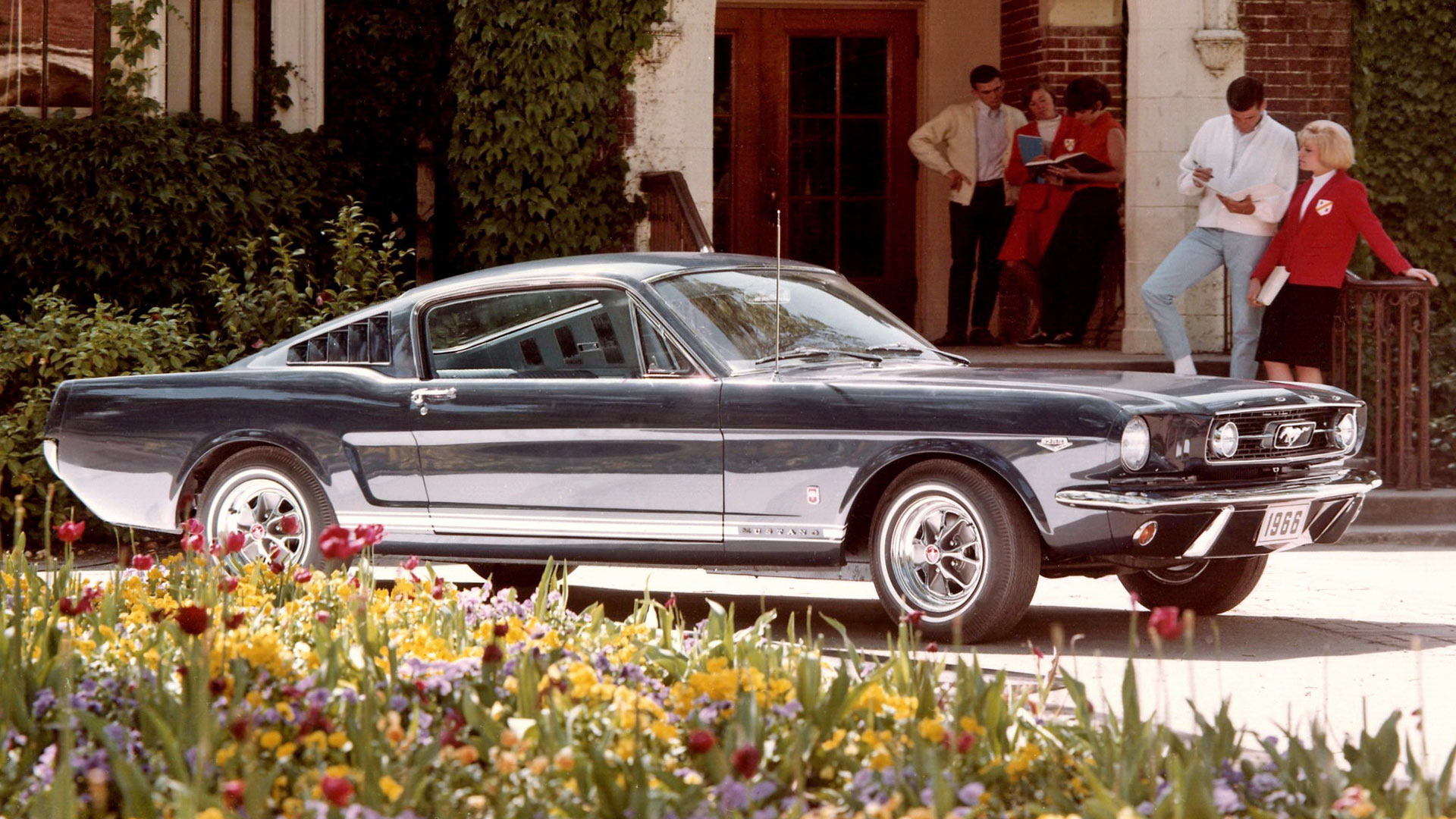
1966 Ford Mustang
© FordThere were fewer changes made to the 1966 Ford Mustang, but Ford did increase the number of personalisation options, as well as tweaking the cosmetics. A new chrome grille with horizontal inserts replaced the honeycomb grille of the earlier cars and the car received five-gauge instrumentation as standard. A total of 607,568 cars were made in the 1966 model year.
-
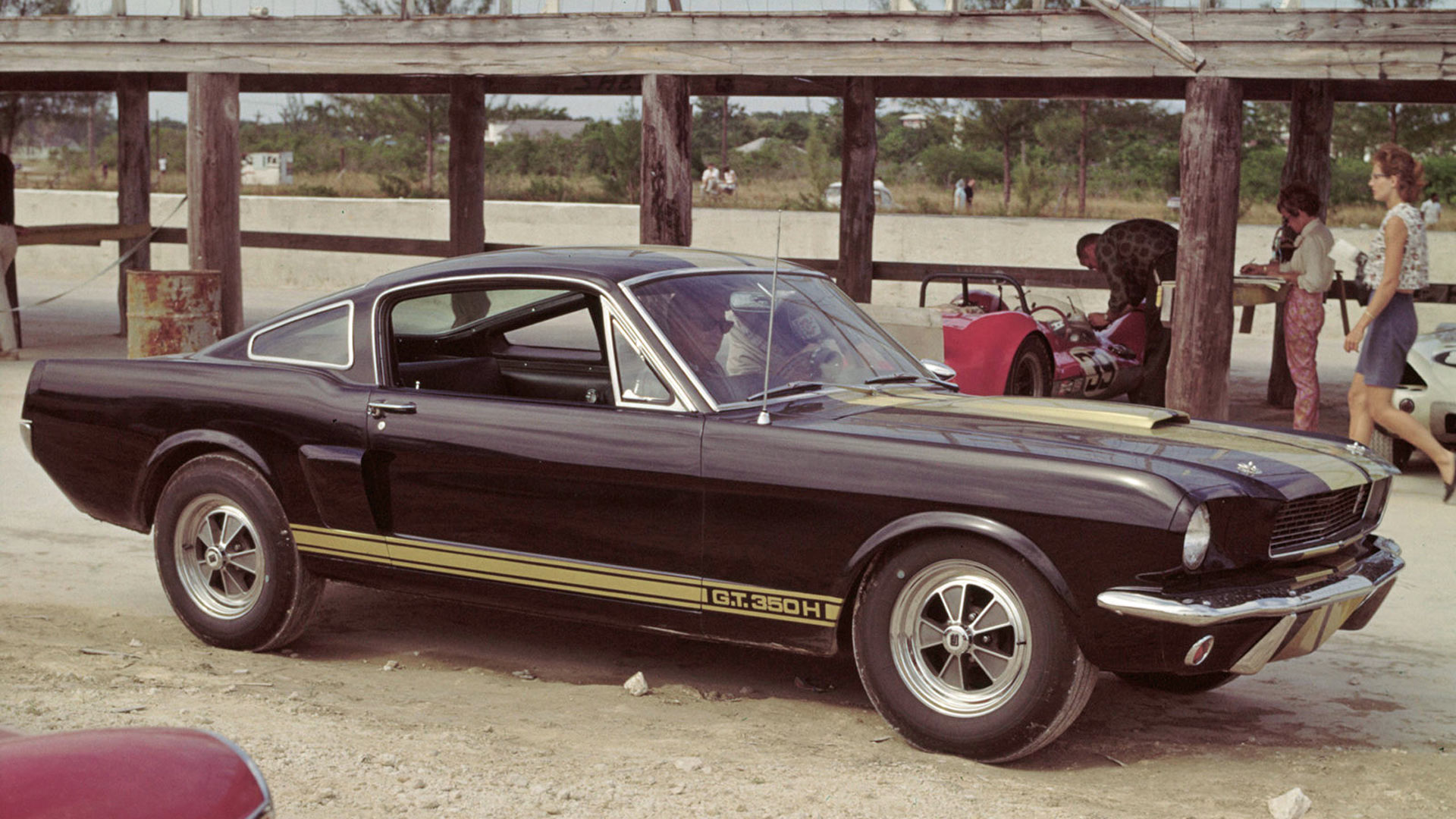
Hertz Rent-a-Racer Mustangs
© FordIn 1966, Shelby struck a deal with rental firm, Hertz, to produce a line of GT350s for hire. They were advertised as ‘Rent-a-Racer’ cars and some are rumored to have taken part in motorsport events. When they were returned to Ford, they were put on sale as GT350-H models.
-
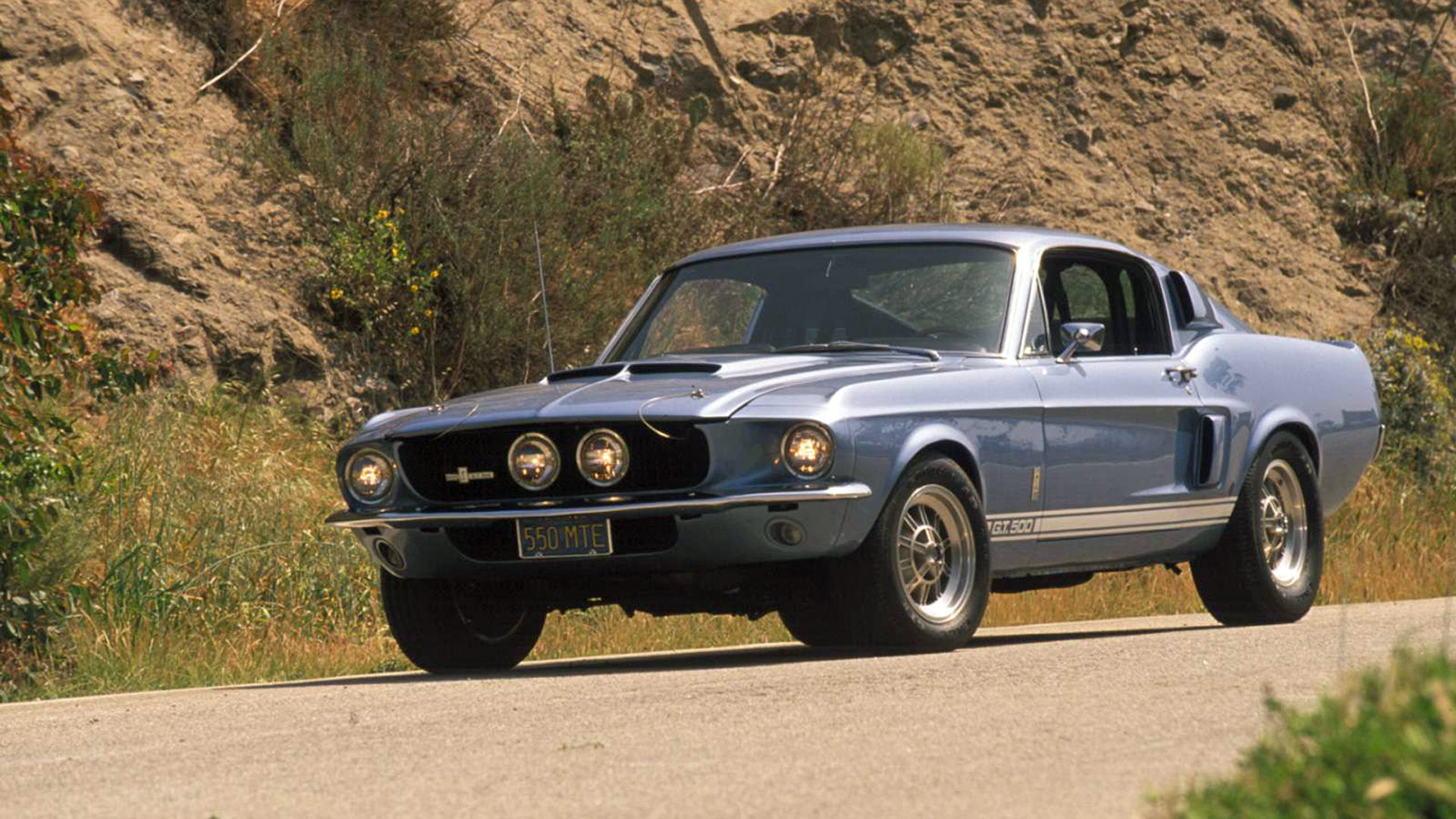
1967 Ford Mustang
© FordThis was a big year for the Ford Mustang, in more ways than one. The 1967 car was longer, taller and wider than before, with the extra width used to allow for the 320 hp big-block V-8 engine, the first of its kind in the Mustang. The new car also offered new options, such as a tilt-away steering wheel, but the number of interior trim options was reduced. Sales also declined, although 472,000 units is hardly an economic disaster.
The year would also mark the arrival of the iconic Shelby Mustang GT500.
-
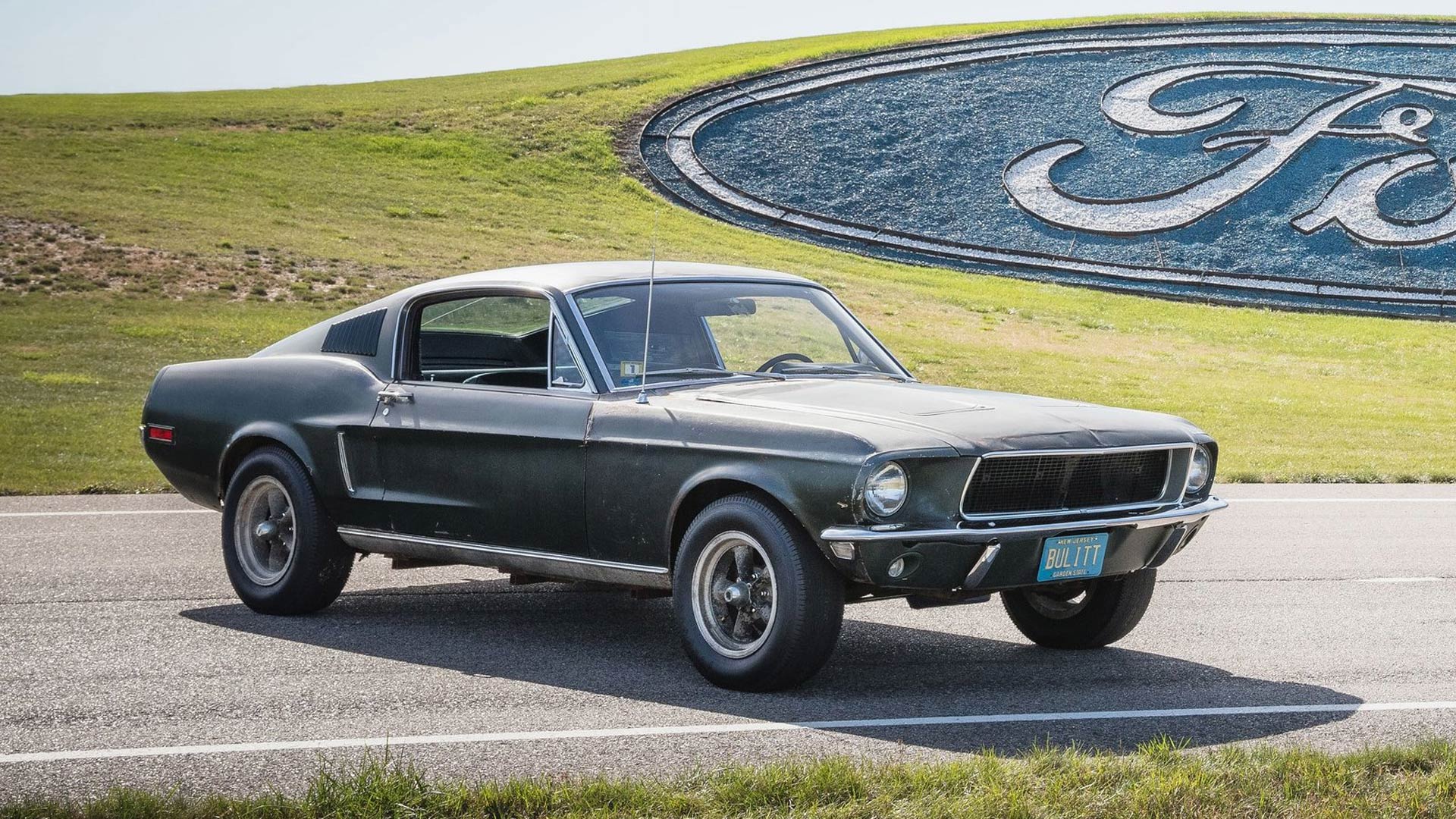
1968 Ford Mustang
© FordIn 1968, sales decreased even further, this time to 317,404. There were very few changes made for the 1968 model year car, but it did give us one of the most famous Mustangs in history. The GT 390 fastback was driven by Steve McQueen in the movie, Bullitt.
-
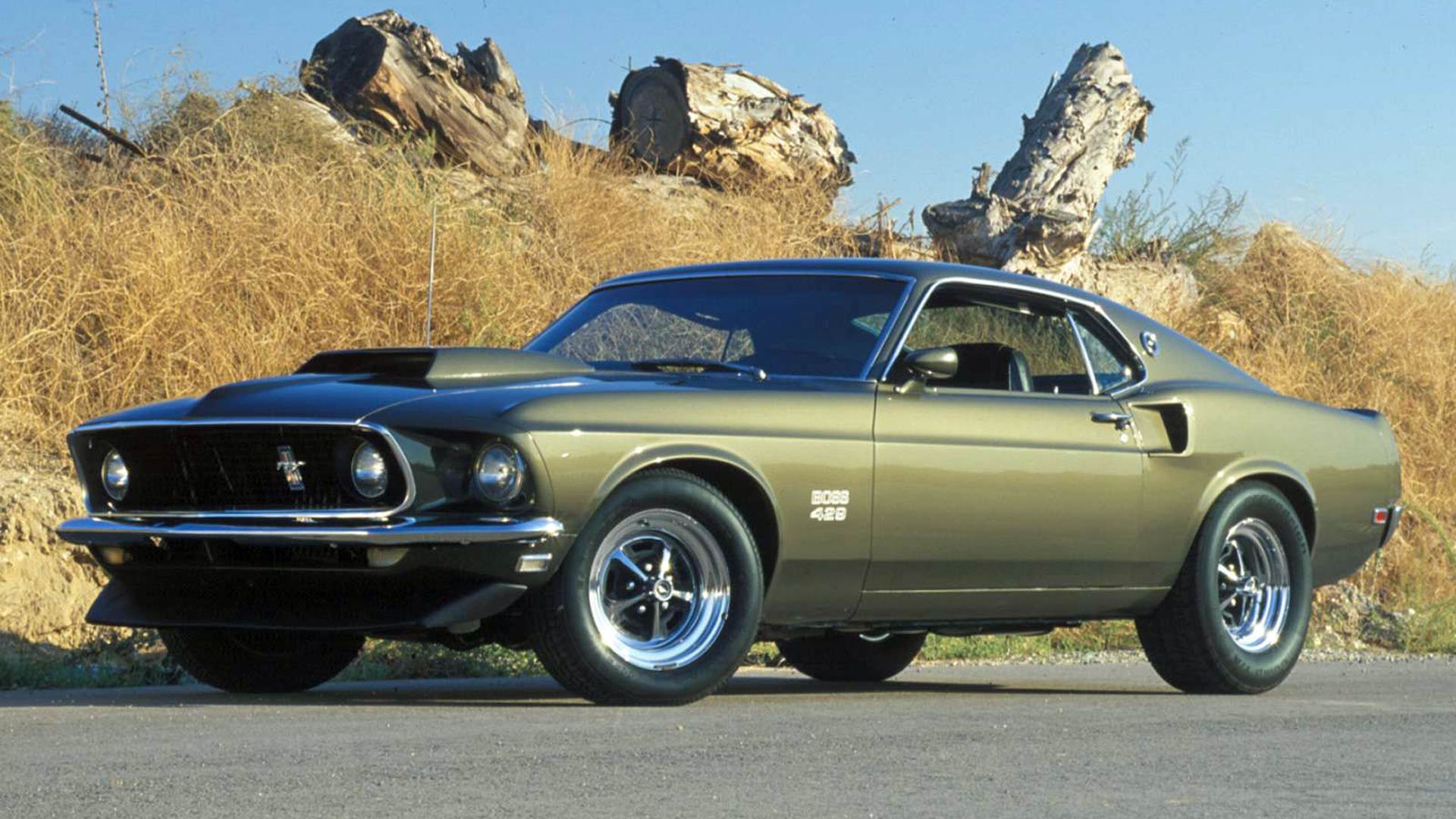
1969 Ford Mustang
© FordThe 1969 Ford Mustang was restyled again, with the most notable change being the new SportsRoof model, which replaced the fastback 2+2. Ford also introduced a so-called Mustang E, an economy-led SportsRoof model with an automatic transmission and no air conditioning. The Mach 1 was also available, with a choice of five V-8 engines and a host of styling and mechanical upgrades.
A special mention must also be given to the legendary Boss models, introduced for racing purposes.
-
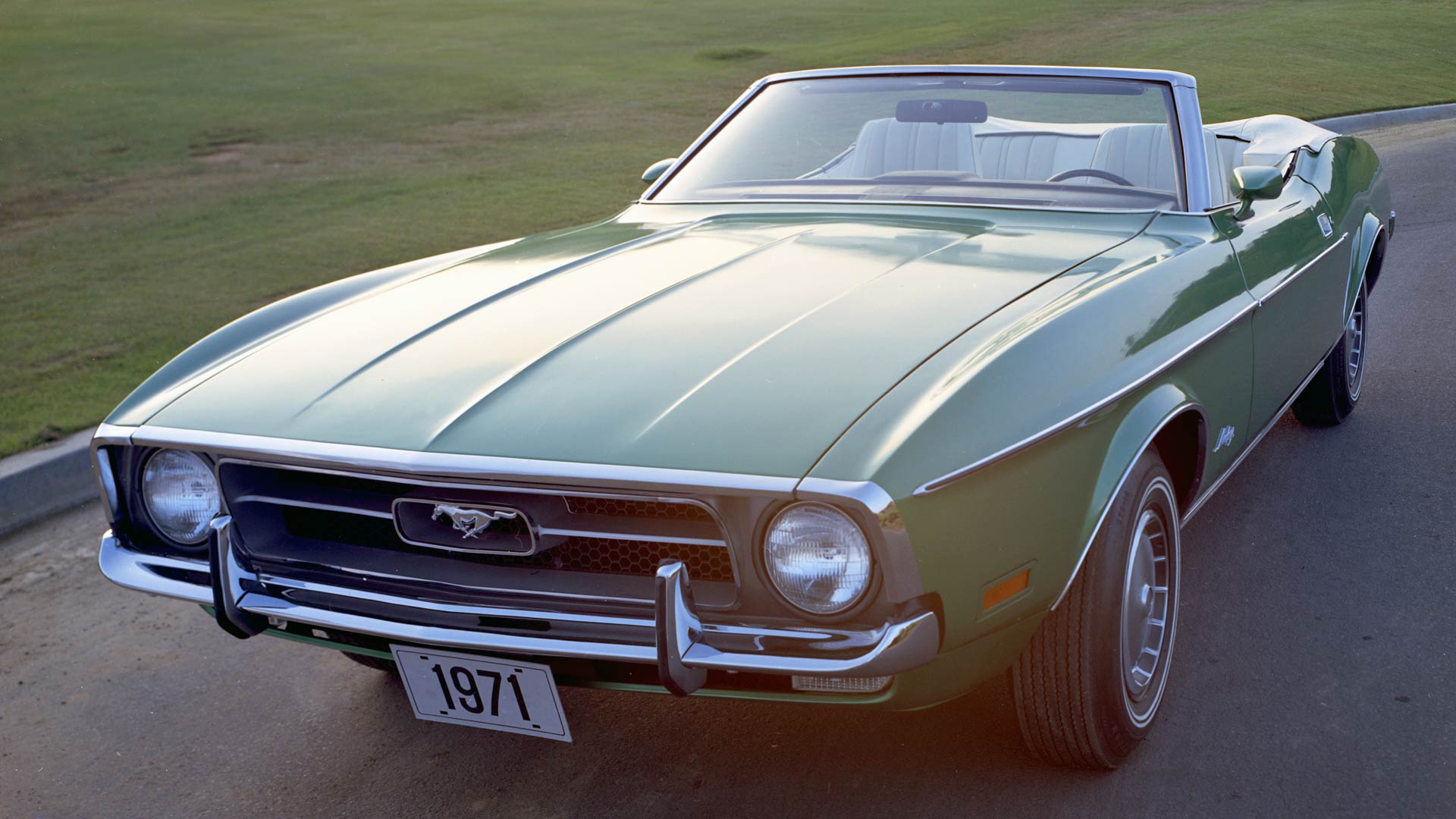
1971 Ford Mustang
© FordThe 1971 Ford Mustang represented the final major restyling job based on the first-generation car. The 1971 model year car, introduced in late 1970, was two inches longer and more than two and a half inches wider than before. The wheelbase was also increased to 109 inches. A total of 151,484 Mustangs were produced in 1971, including the red Mach 1 featured in the James Bond film, Diamonds Are Forever.
-
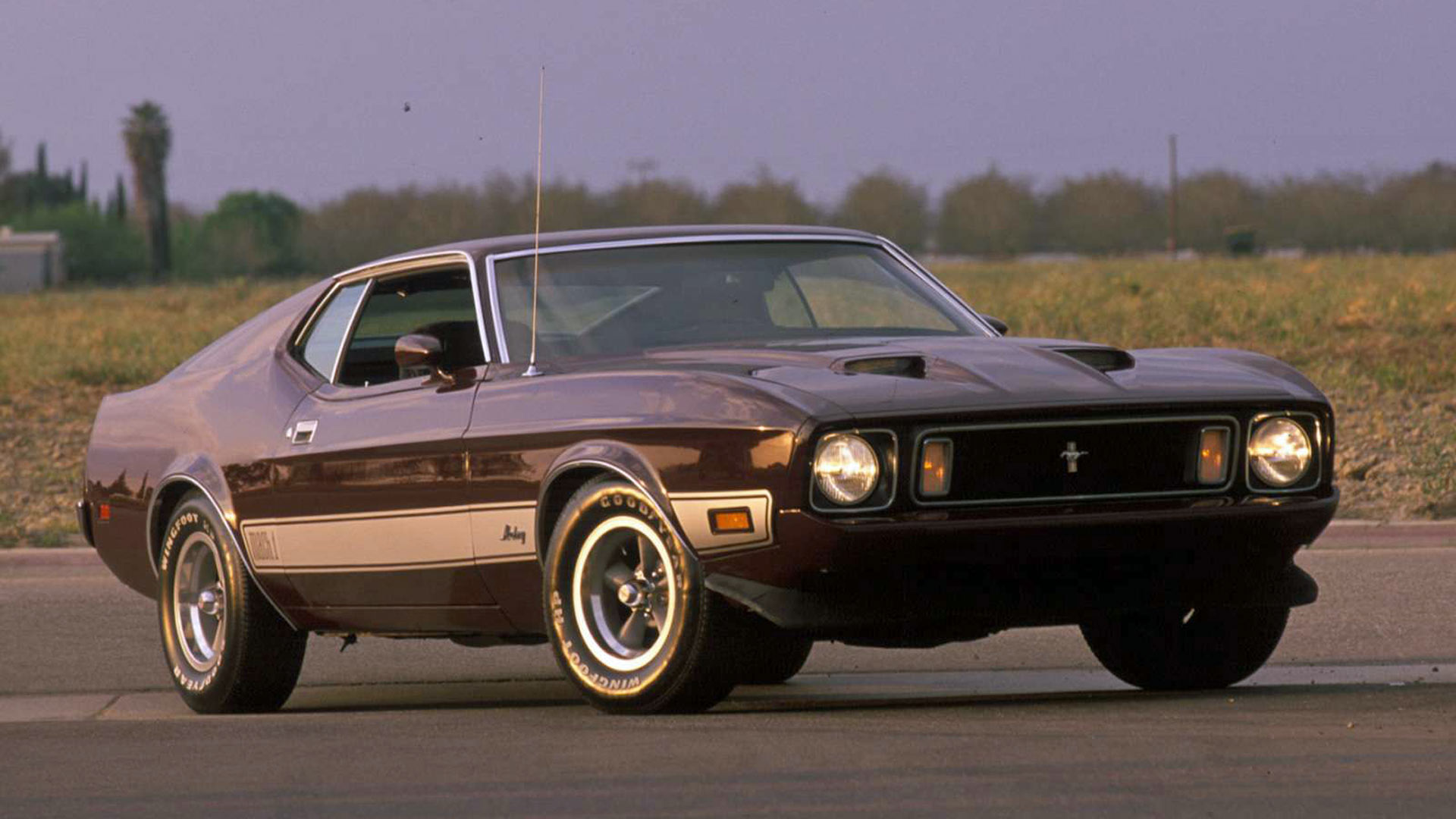
1973 Ford Mustang
© FordThis was the end for the first-generation Mustang. The fuel crisis had seen American buyers switch to smaller, more fuel-efficient cars and the Mustang was beginning to look like a dinosaur. This was highlighted by the sales figures for that year, which had dropped to just over 134,000. This was also the last time we’d see a convertible Mustang until the mid-1980s.
-
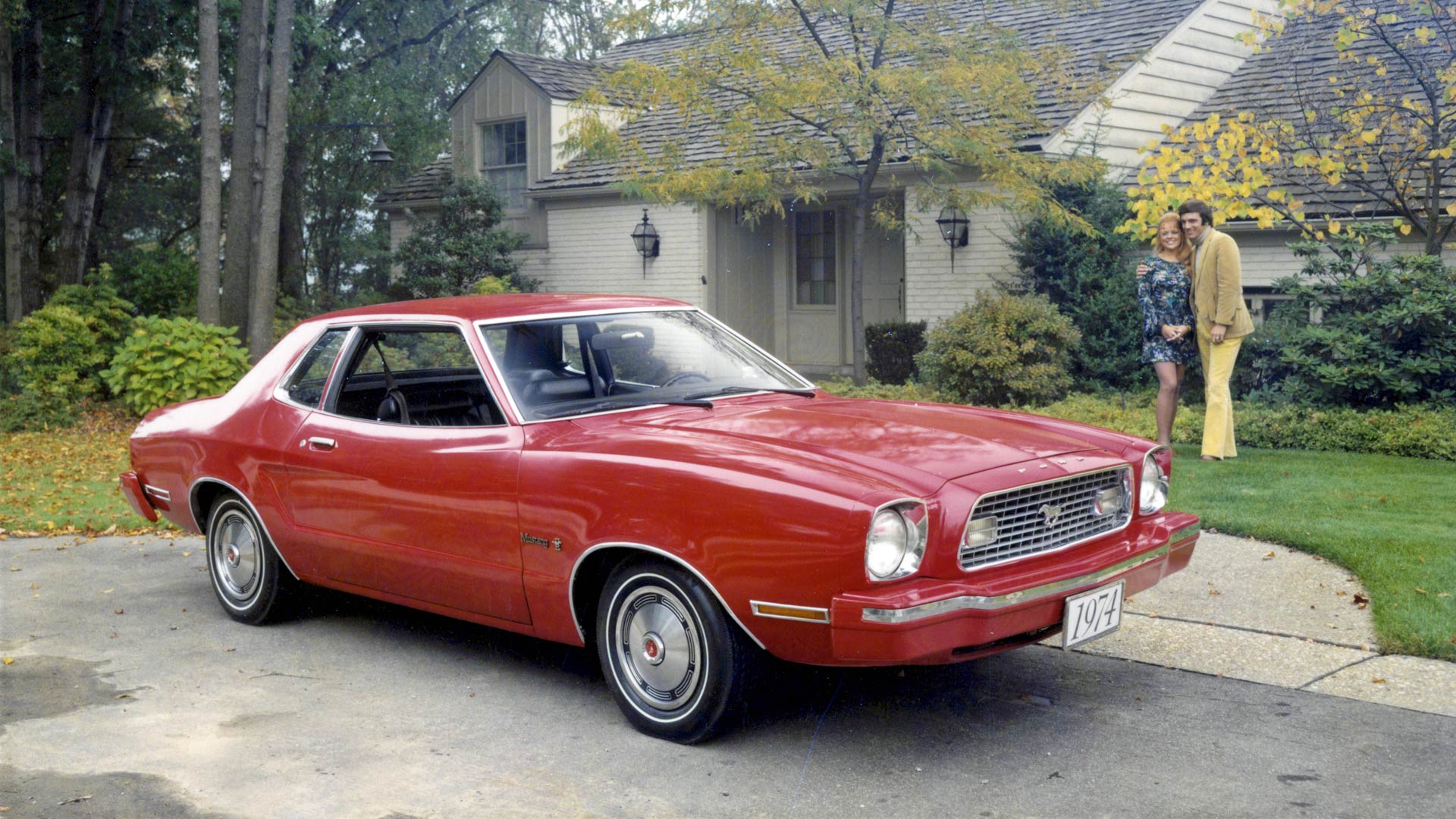
1974 Ford Mustang II
© FordSo this was it, Ford’s idea of a follow-up to a hugely successful icon. In terms of sales figures, it was a case of job very much done, with the number of units almost trebling to near 390,000. But somehow it just didn’t feel like a Mustang anymore. It was all too 1970s and not enough 1960s.
-
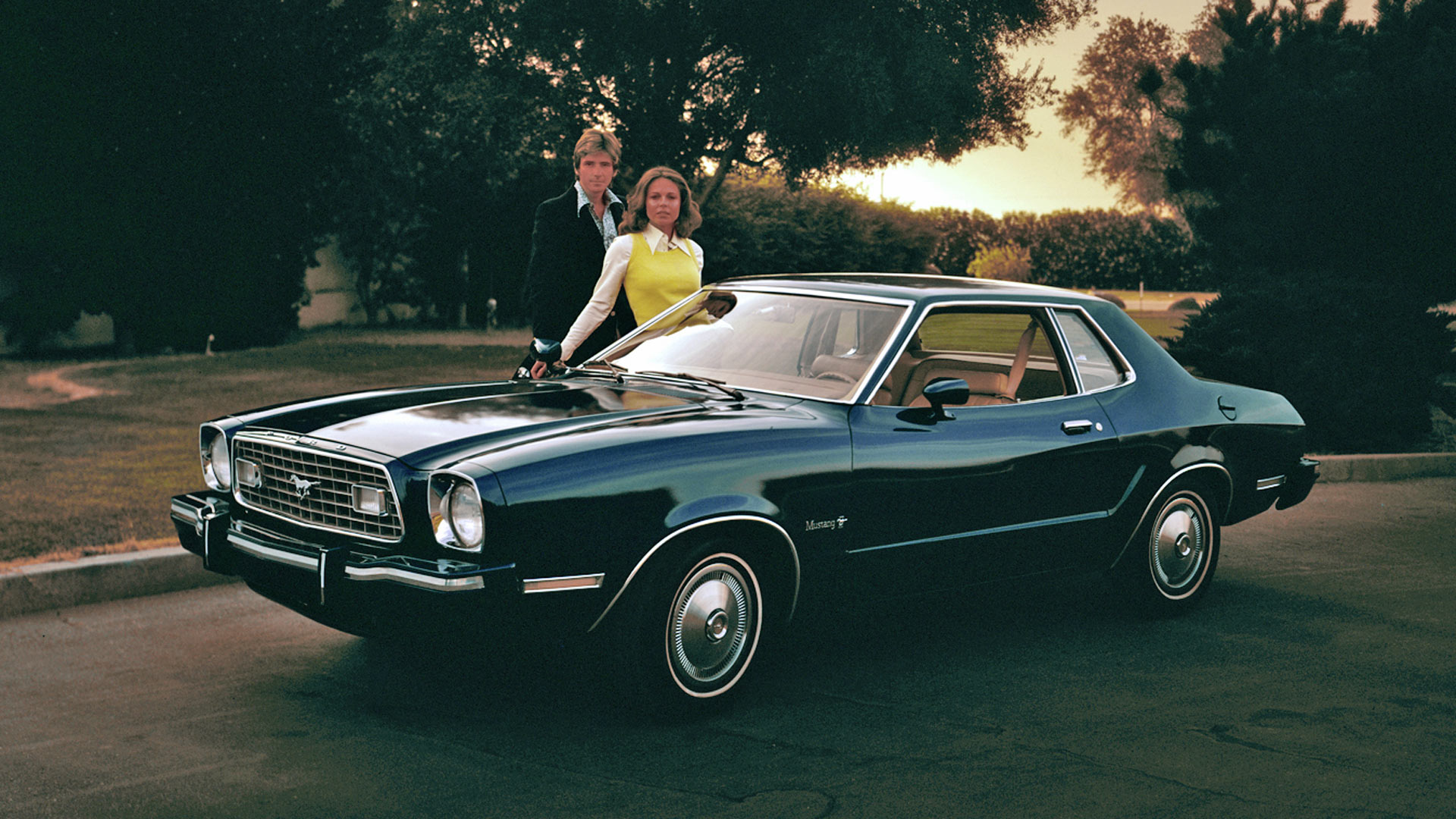
1974 Ford Mustang II
© FordYes, the Ford Mustang was smaller than before and yes, it offered a new range of fuel-efficient engines. But an engine line-up not featuring a V-8? Come on! Worse still, the Mustang was now offered with a weedy 88 hp four-cylinder 2.3-liter engine.
-
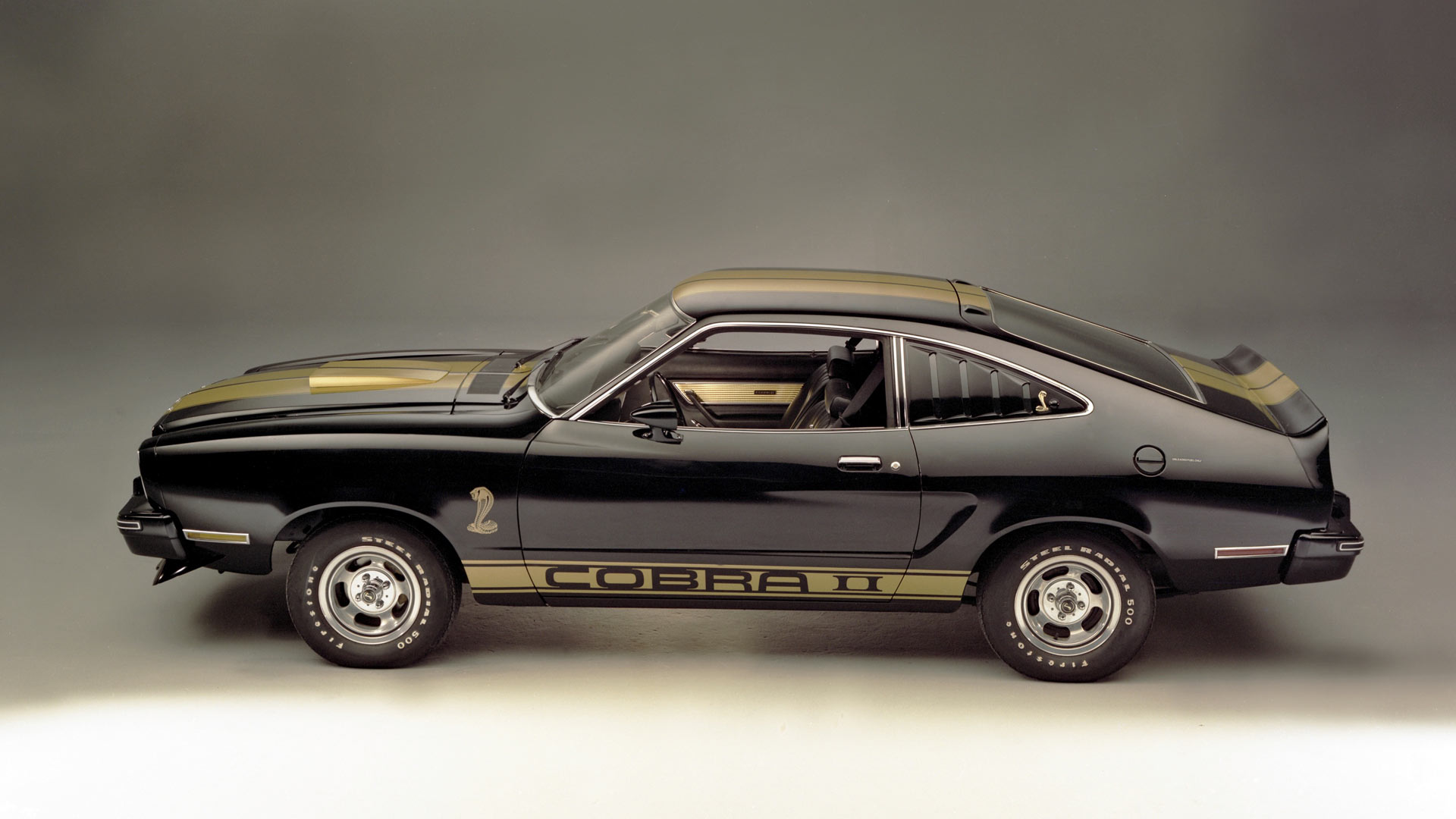
The V-8 returns in 1975
© FordDue to customer demand, the 5.0-liter V-8 engine returned to the Mustang line-up in 1975, but it only developed between 122 and 139 hp, and was only offered with a three-speed automatic transmission. This engine formed the heart of the loud and proud Cobra of 1978, but even that was offered with the four-cylinder engine.
-
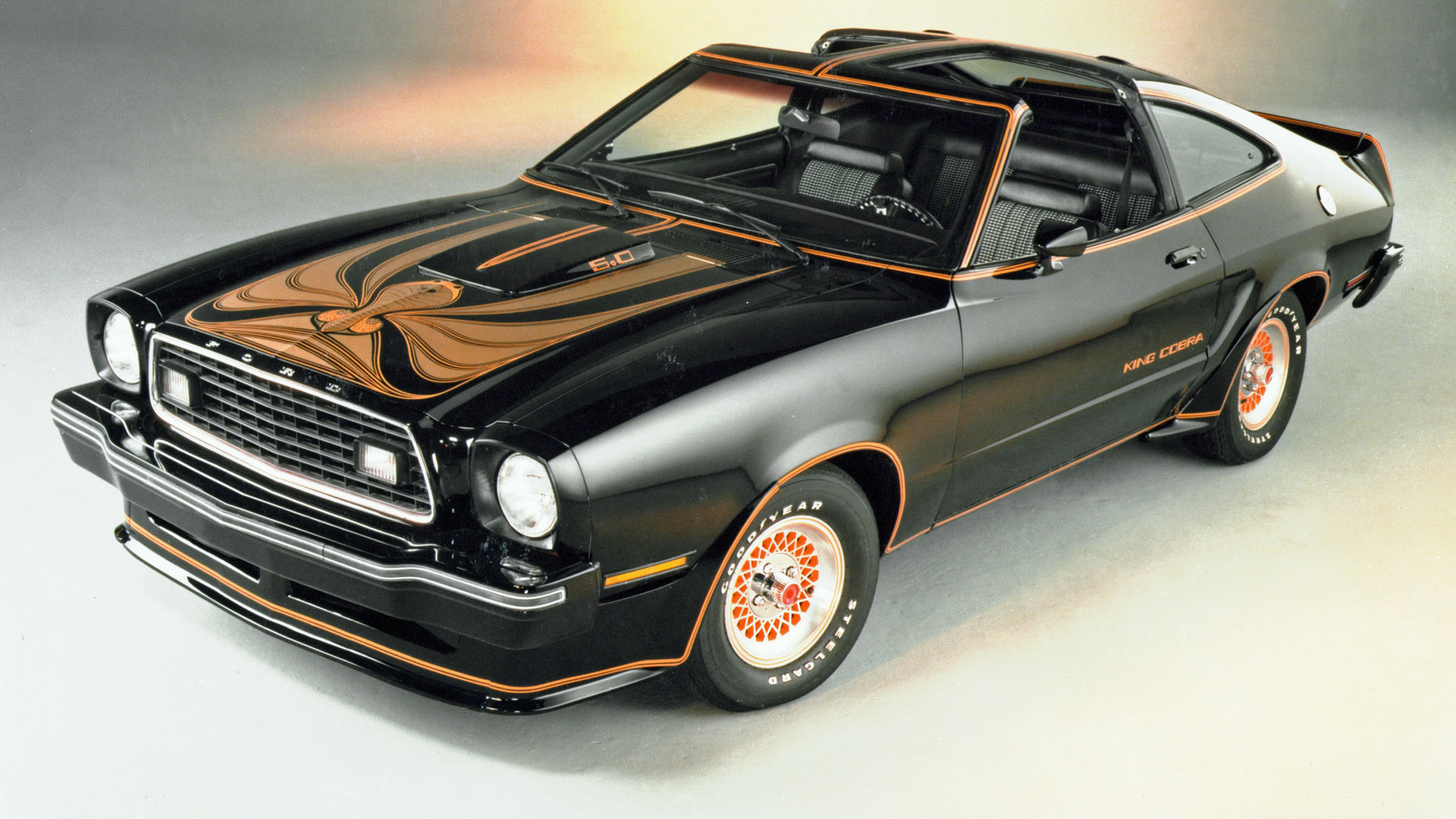
Mustang II: a sales success
© FordIn fairness to the Mustang II, it was hugely successful for Ford, halting the falling sales figures of the first-generation car. The Mustang II couldn’t quite return to the massive numbers of 1974, but 1975 and 1976 did see totals in excess of 180,000 and in its final year of 1978, sales nearly reached 200,000. And it did give us the brilliantly named King Cobra, complete with the delightfully 1970s hood decal and stripes.
-
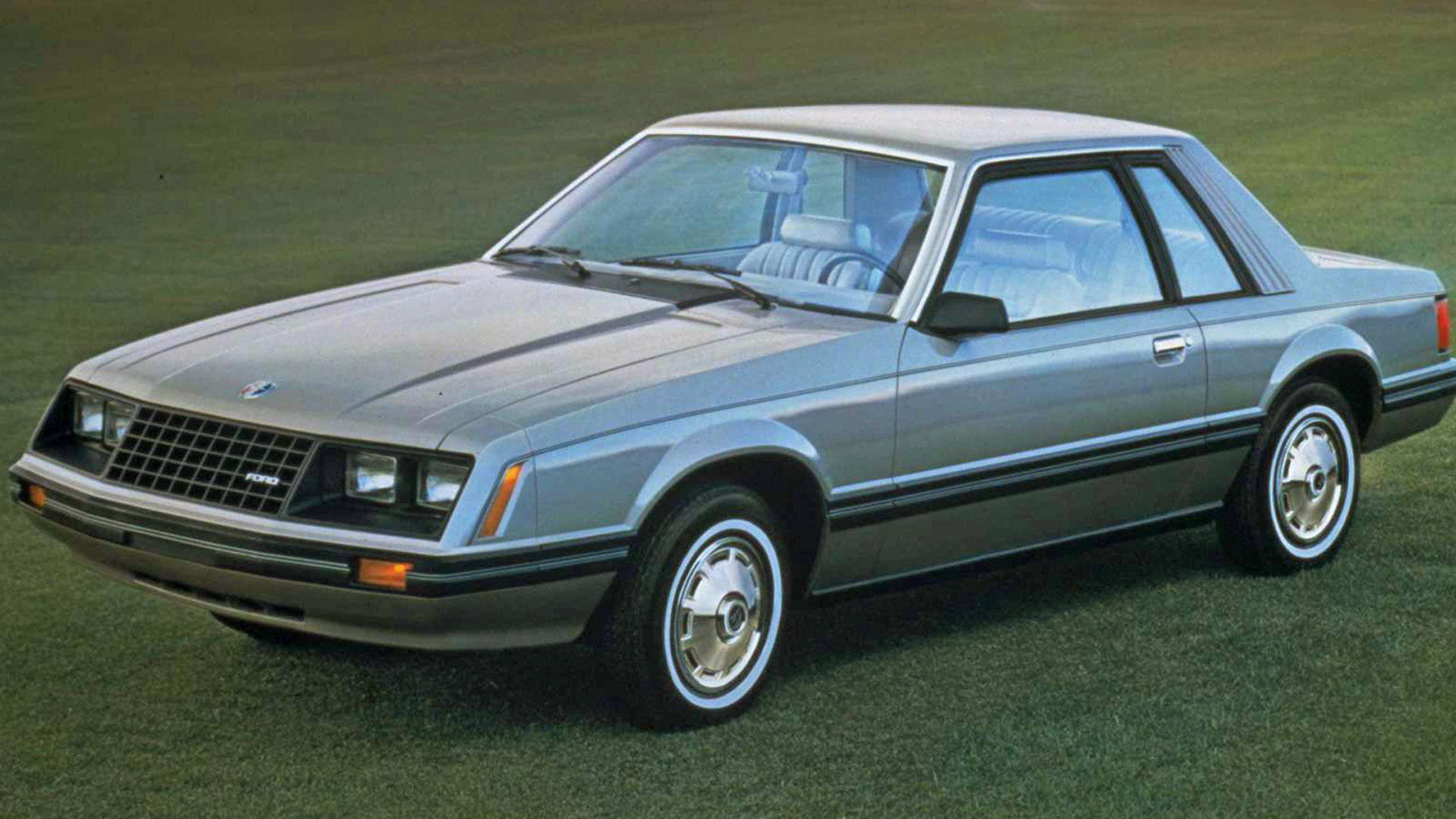
Third-generation Ford Mustang
© FordThe Ford Mustang said goodbye to the 1970s and hello to the 1980s with the third generation pony car, now based on the Fox platform. This rear-wheel-drive setup was used for various Ford Motor Company cars from 1978 to 1993, before having its life extended by the Ford Mustang in 1994. It would therefore live on until 2004.
-
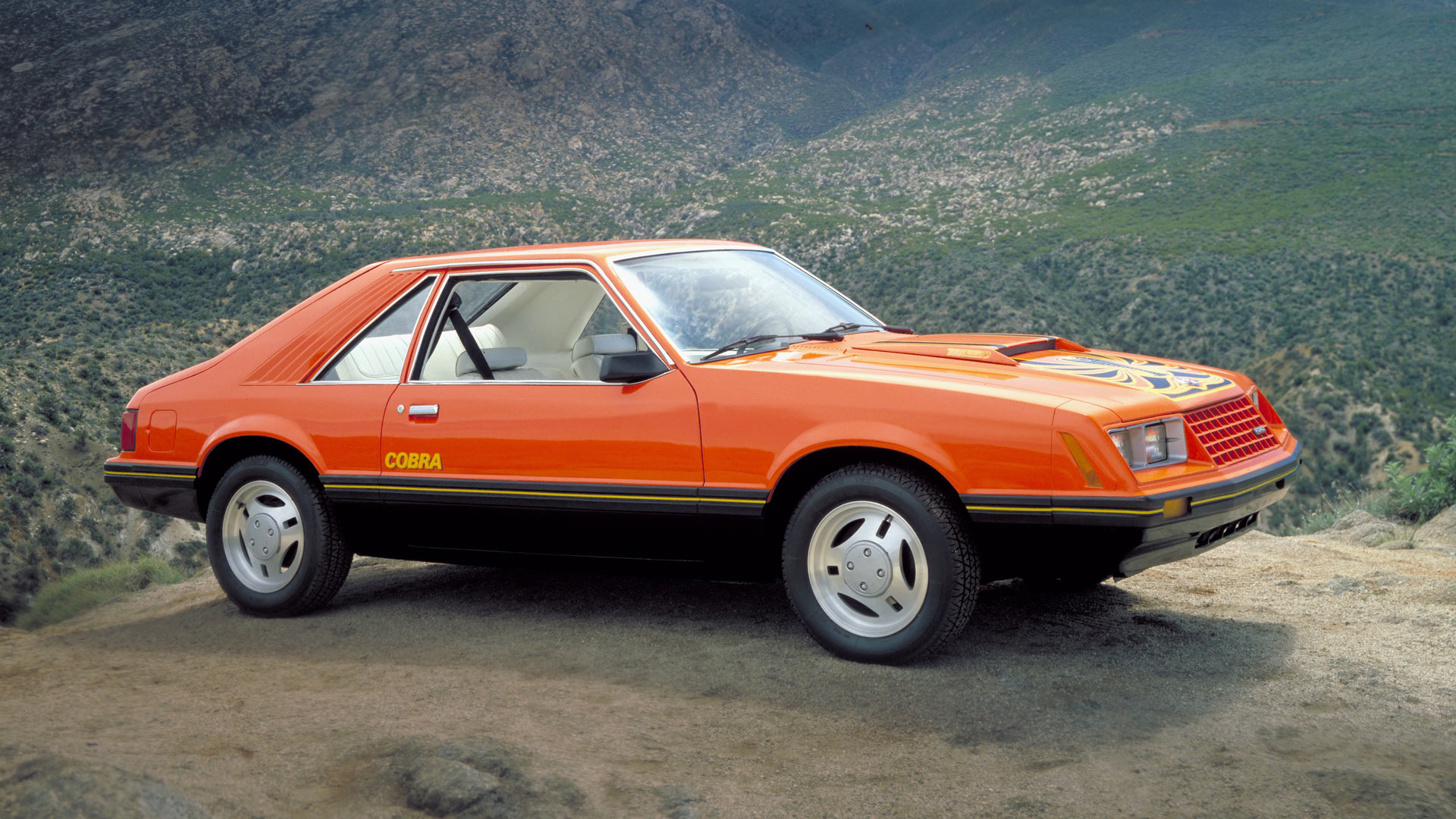
1979 Ford Mustang
© FordLike previous generations of the Mustang, the Mustang III would provide an instant shot in the arm in terms of sales, with the 1979 model year car amassing a total of 369,936 units. Five engines were available: a pair of 2.3-liter four-cylinder units, a V6, a six-cylinder and the 5.0-liter V-8. In top hatchback Ghia trim, the Mustang cost $5,216. For the second time in its history, the Ford Mustang was used as the official pace car of the Indianapolis 500.
-
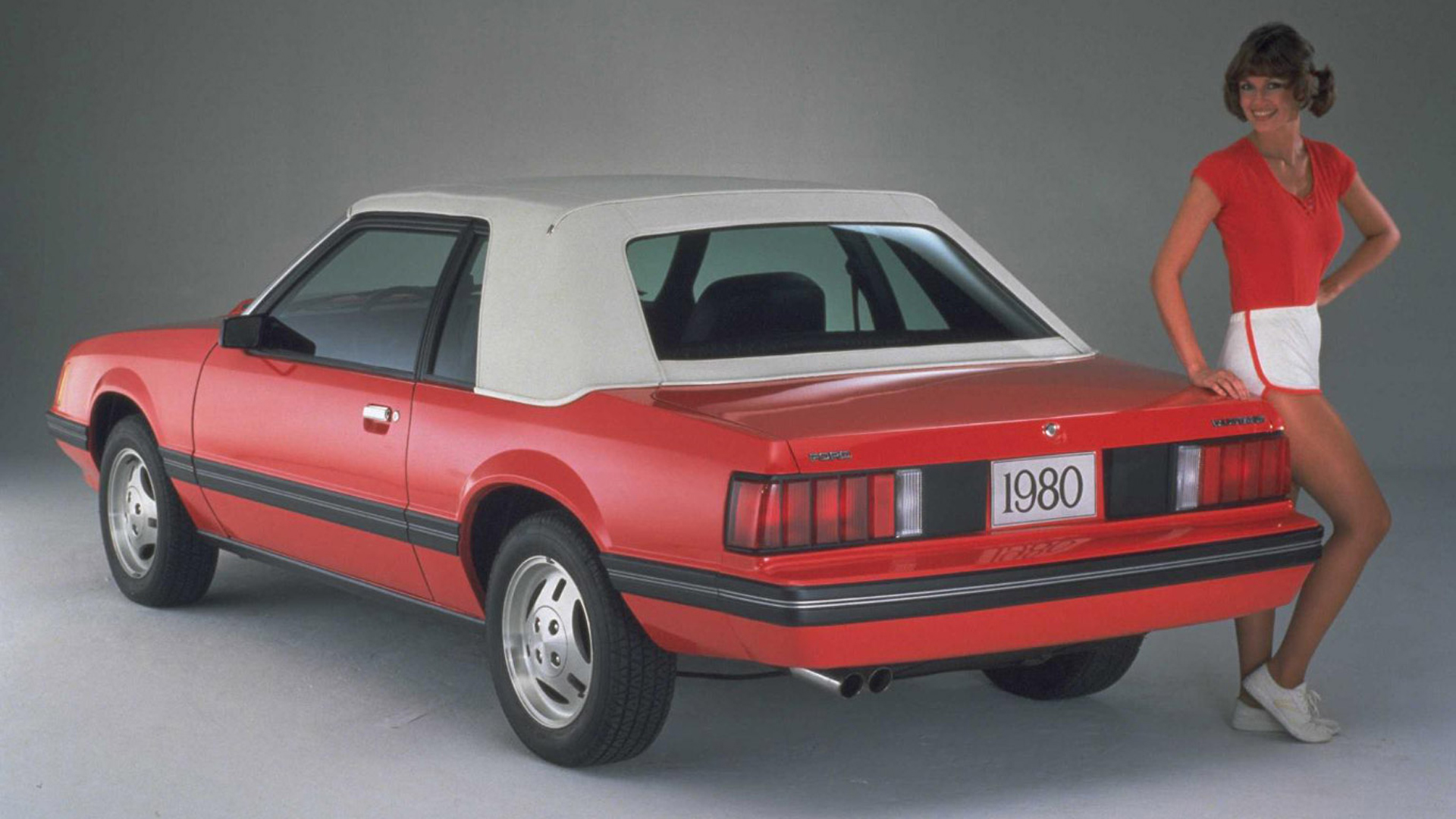
1980 Ford Mustang
© FordLittle changed in 1980, although the 5.0-liter V-8 was replaced by a 4.2-liter engine. In 1981, the hatchback outsold the coupe for the first time, a reflection of changing customer demands at the early part of the decade. In 1983, the Mustang convertible made a welcome return, along with the option of a 5.0-liter V-8, this time with 175 hp.
-
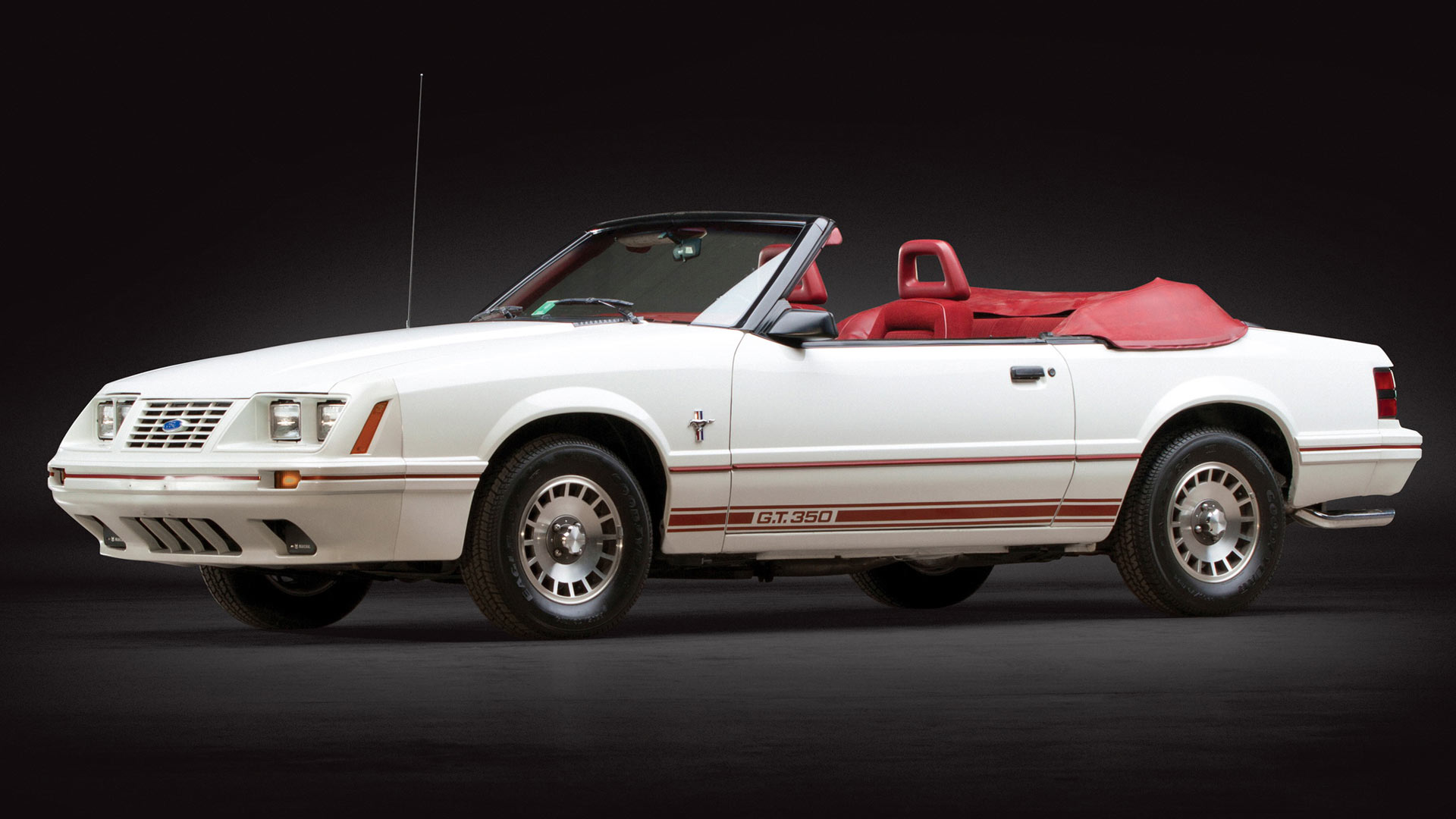
Ford Mustang turns 20
© FordIn 1984, Ford celebrated the 20th anniversary of the birth of the Mustang with the GT350. This model was available in hatchback or convertible form, with the choice of either a turbocharged four-cylinder engine or the 5.0-liter V-8. The GT350 name caused a rift between Ford and Carroll Shelby, as Ford didn’t have the rights to use it. The name was later dropped.
-
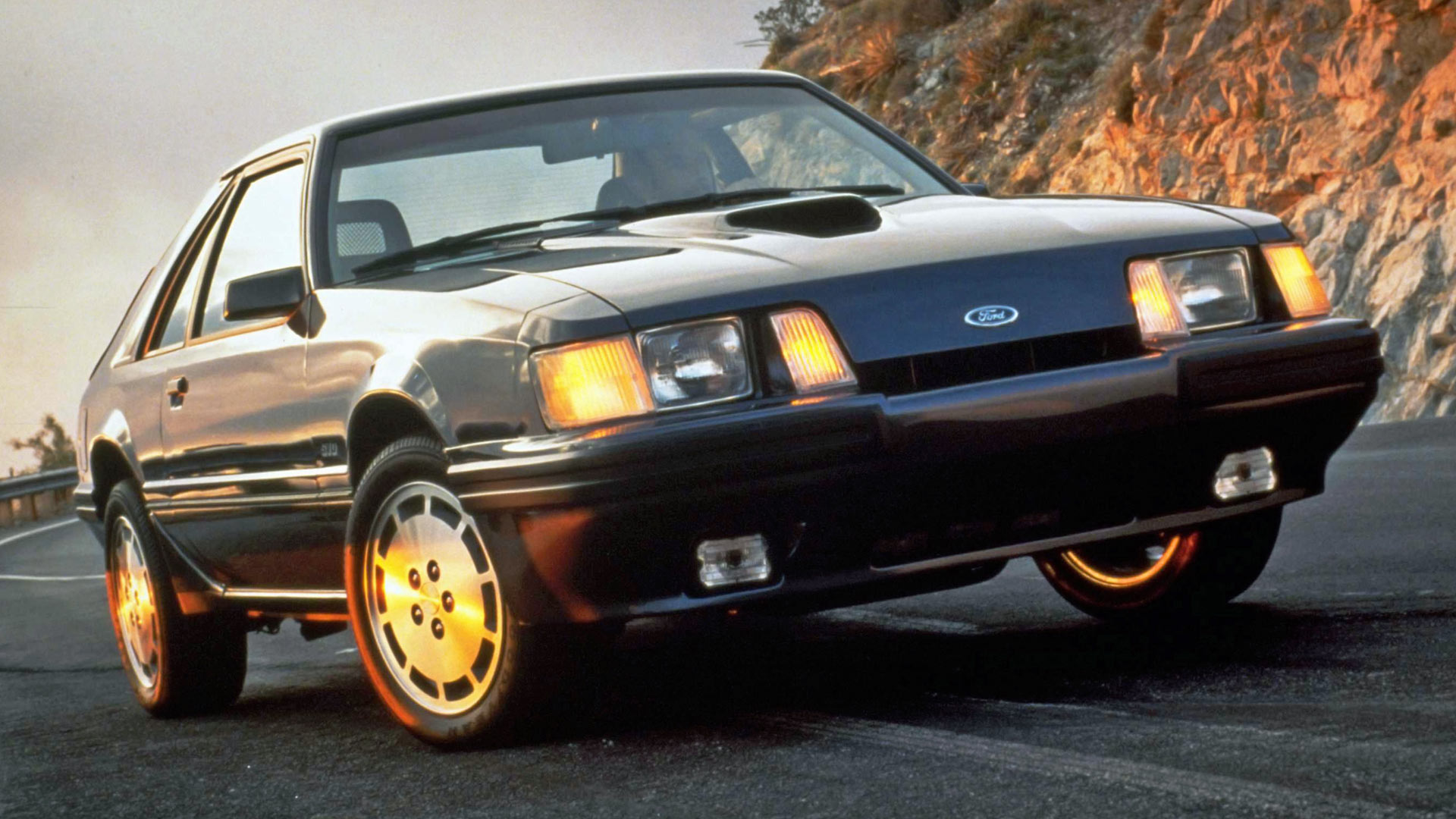
1984 Ford Mustang SVO
© Ford‘SVO’ stood for Special Vehicle Operations and it signified a range of more powerful Ford Mustangs. According to Ford, they could handle and perform as well as many European cars. Initial power was rated at 170 hp, but this later rose to 200 hp. The cars had special pedals to aid heel-and-toe shifts, together with a limited-slip differential.
-
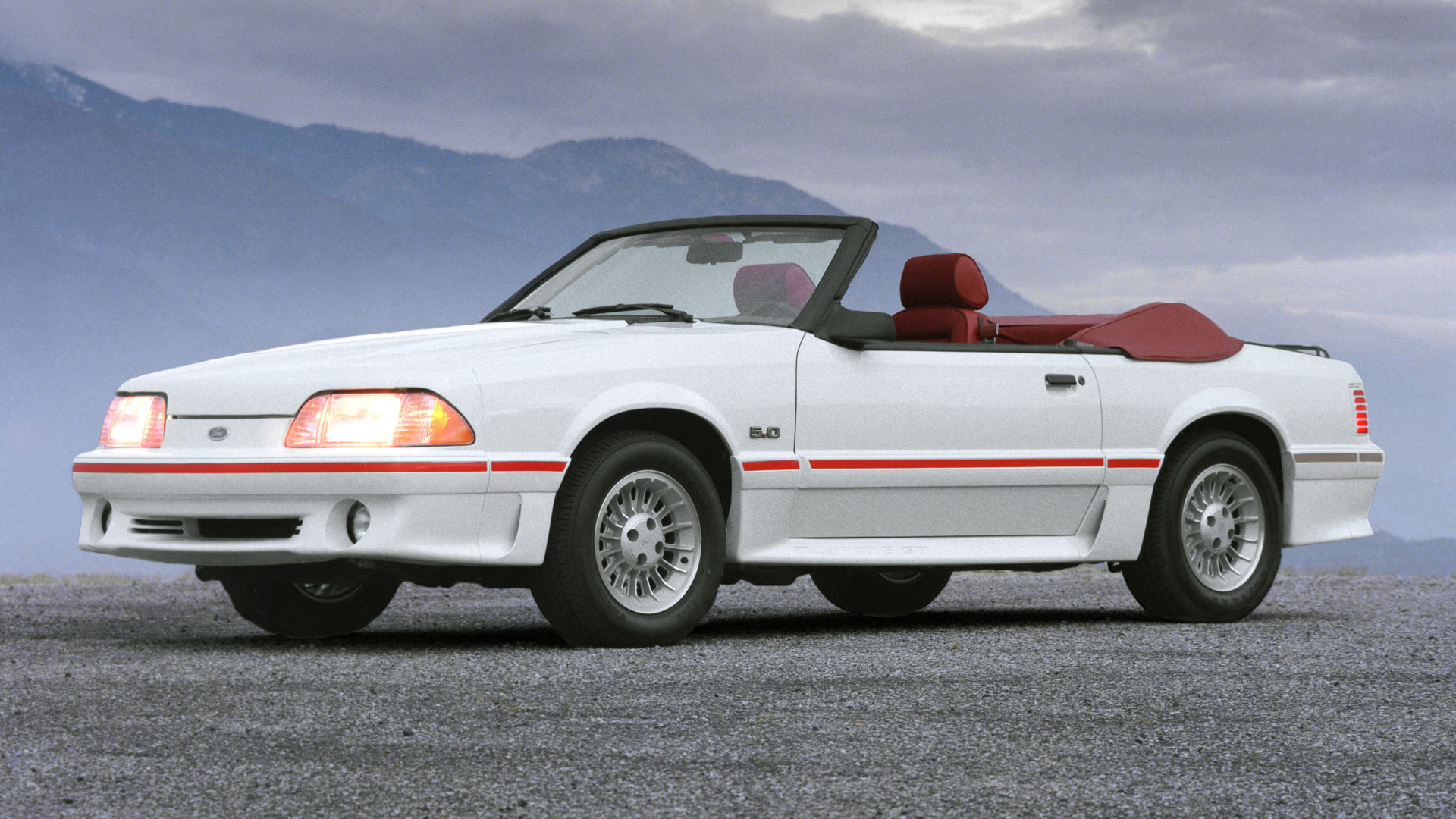
1987 Ford Mustang
© FordIn 1987, the styling of the entire Mustang range was revised to mimic that of the SVO cars. The new aerodynamic headlights and shovel-faced front-end were the major clues to a 1987 Mustang. Sales for 1987 stood at 169,772, the vast majority of which were hatchbacks.
-
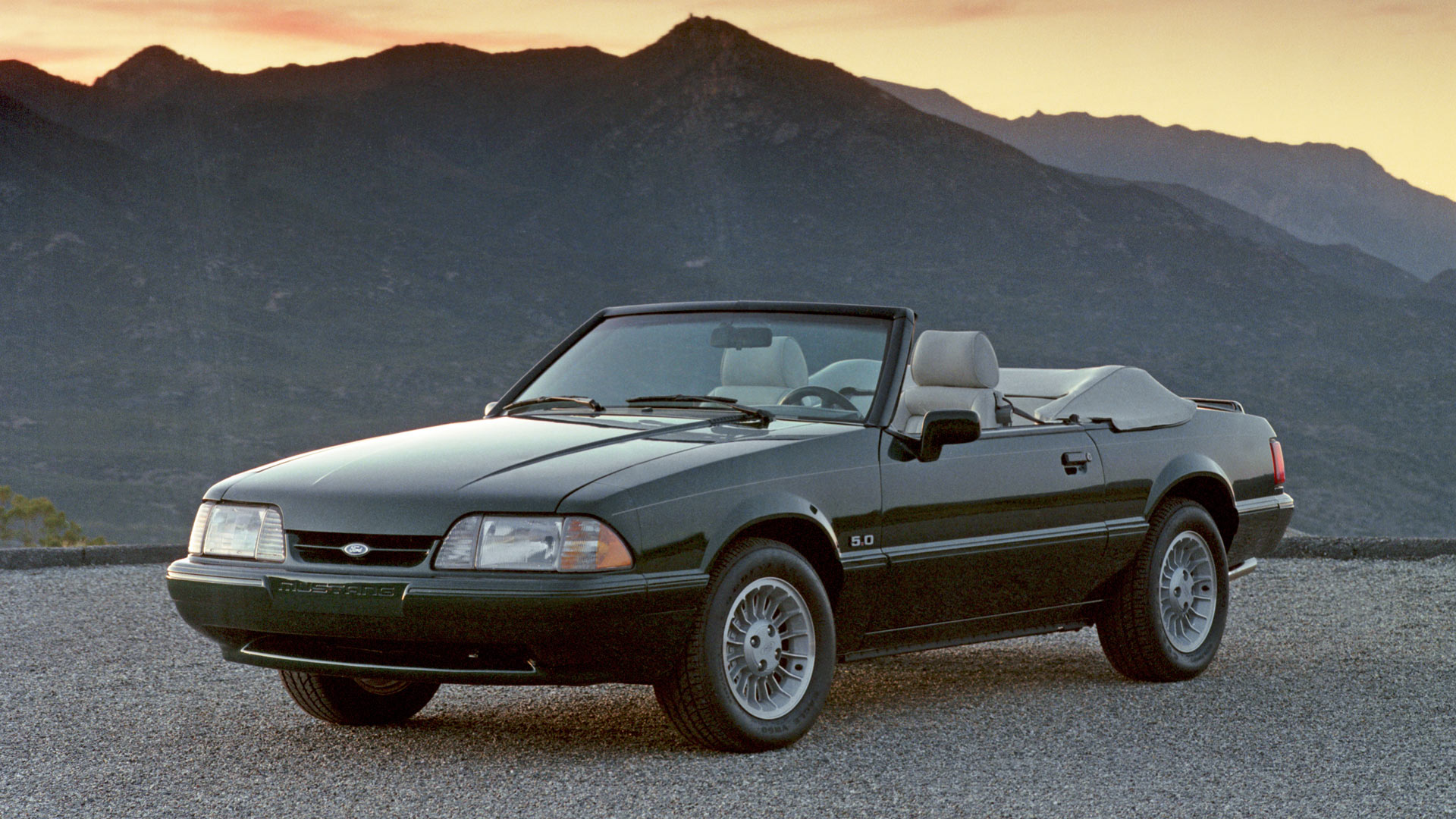
25th anniversary of the Ford Mustang
© FordFord celebrated the 25th anniversary of the Mustang in 1989, although just to confuse matters, the model year of the limited edition car was 1990.
Ford also produced a special-edition car with soda brand 7Up, for an NCAA competition. The partnership collapsed before the special cars could be launched, leaving Ford to filter through into the dealer network regardless.
-
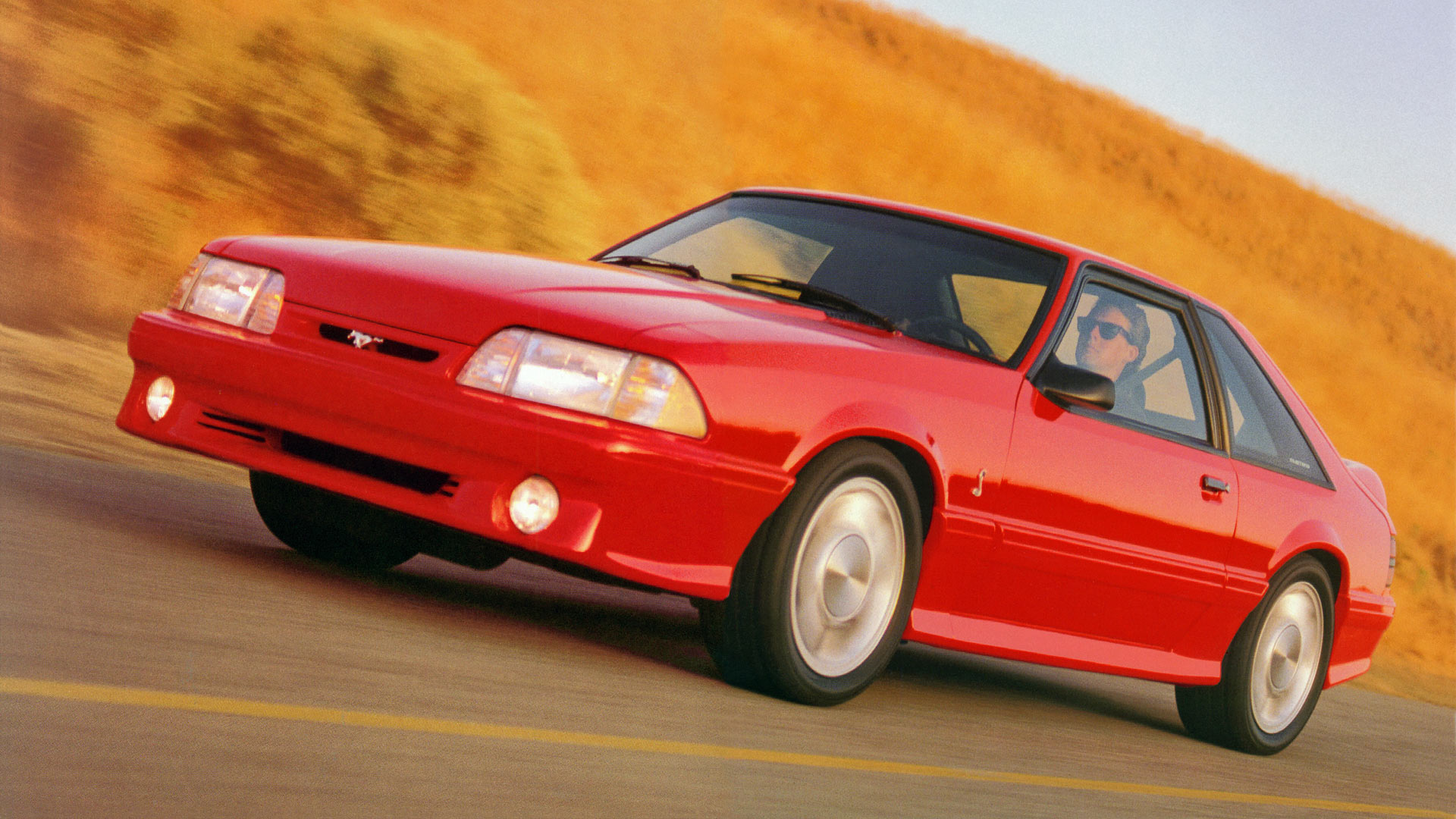
1993 Ford Mustang SVT Cobra
© FordIn 1991, Ford launched a new Special Vehicle Team (SVT) division, with the aim of creating high-performance versions of its standard models. The first SVT was the 1993 Ford Mustang SVT Cobra, which offered more horsepower and improved handling. A Cobra R – with no rear seats, air conditioning or sound-deadening material – was later added to the range.
-
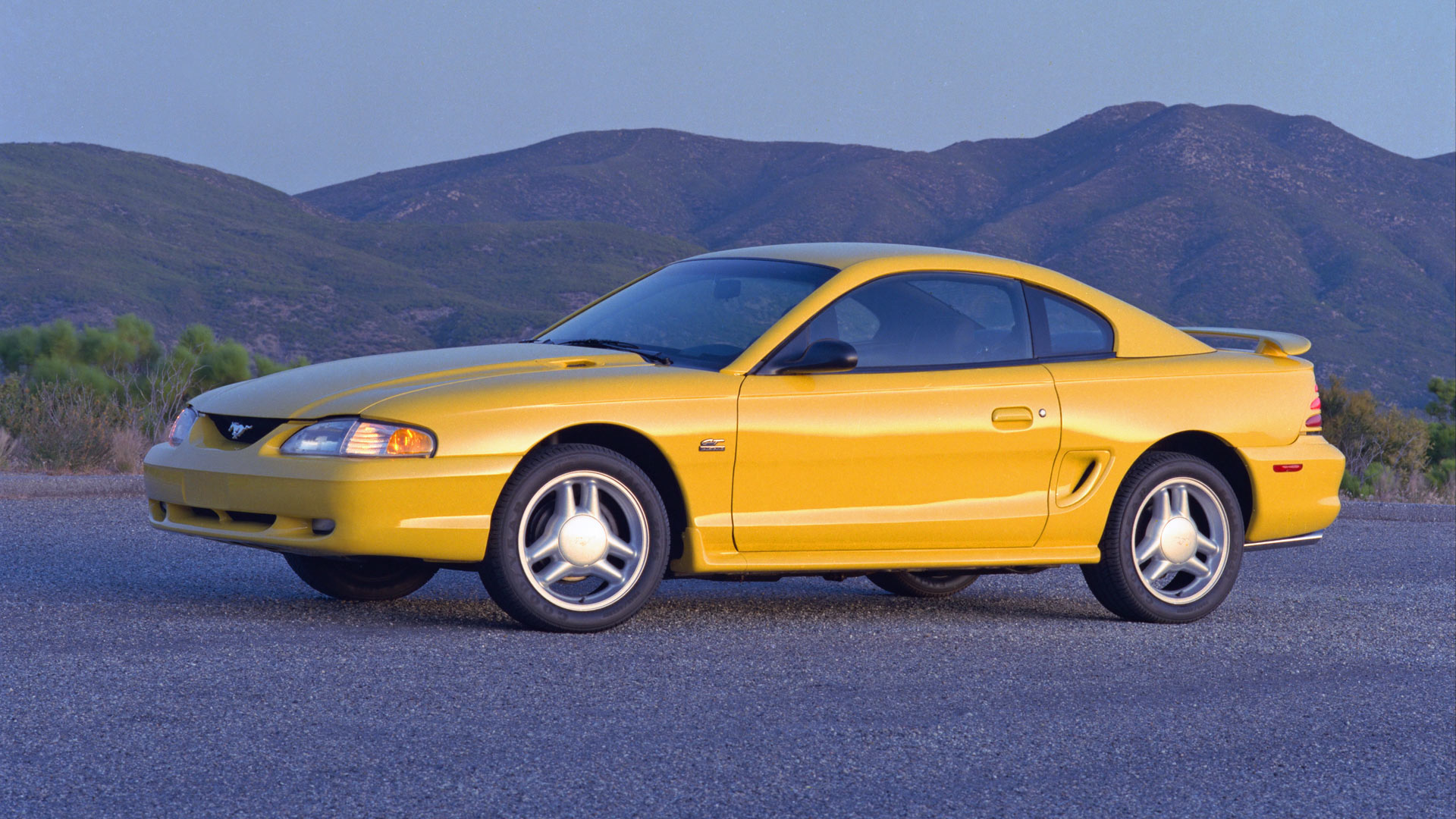
Fourth-generation Ford Mustang
© FordAnd so to 1994, and the launch of the fourth generation Mustang – or SN-95. Here was a car that seemed to come of age, a car comfortable in its heritage and what it had achieved. The new car showcased elements of the original 1964 car, such as the pony on the grille, but didn’t come across as overly retro.
-
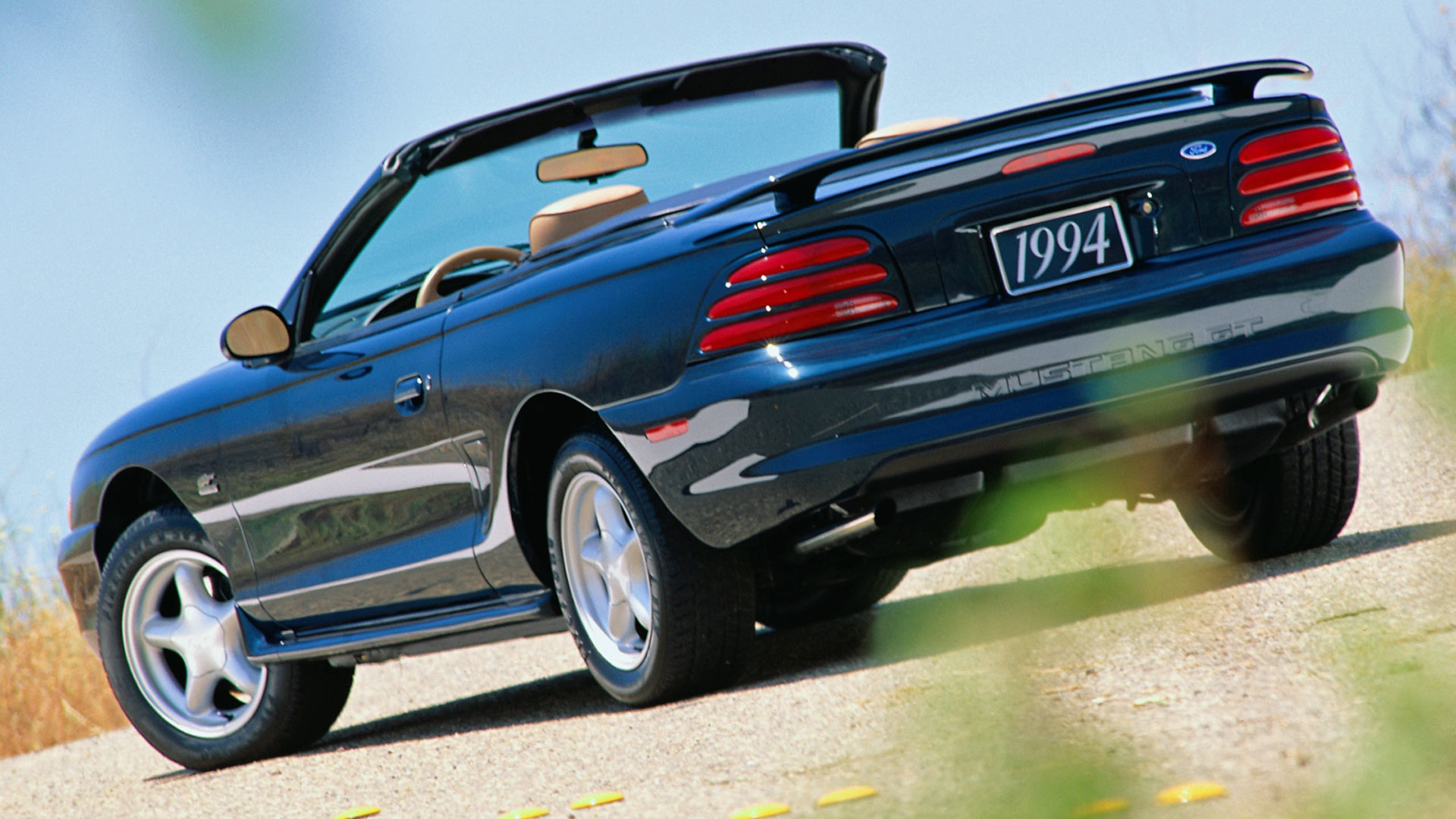
1994 Ford Mustang
© FordTwo engines were offered: a 3.8-liter V6 and a 5.0-liter V-8 developing 215 hp. A 1994 convertible was selected as the official Indy 500 pace car and Ford sold 123,198 examples in the first year.
-
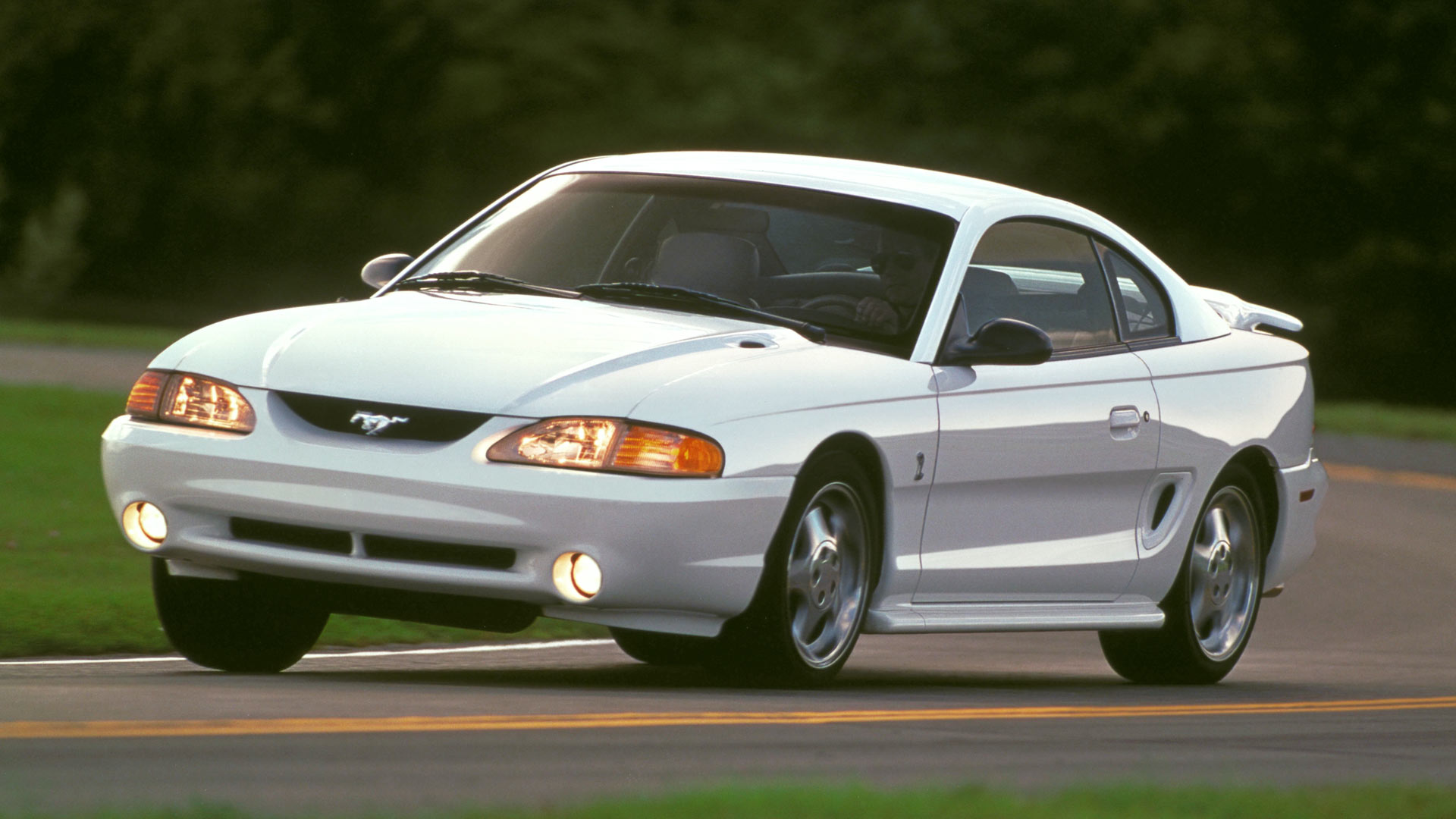
1995 Ford Mustang SVT Cobra
© FordFor both 1994 and 1995, Ford produced a high-performance SVT Cobra version of the new SN-95 Mustang. The 5.0-liter V-8 received additional upgrades, taking its total output to 240 hp.
For 1995, Ford made a limited-edition SVT Cobra R, with power boosted to 300 hp. Removing the rear seats, fog lights, air conditioning,] and radio all contributed to saving weight.
-
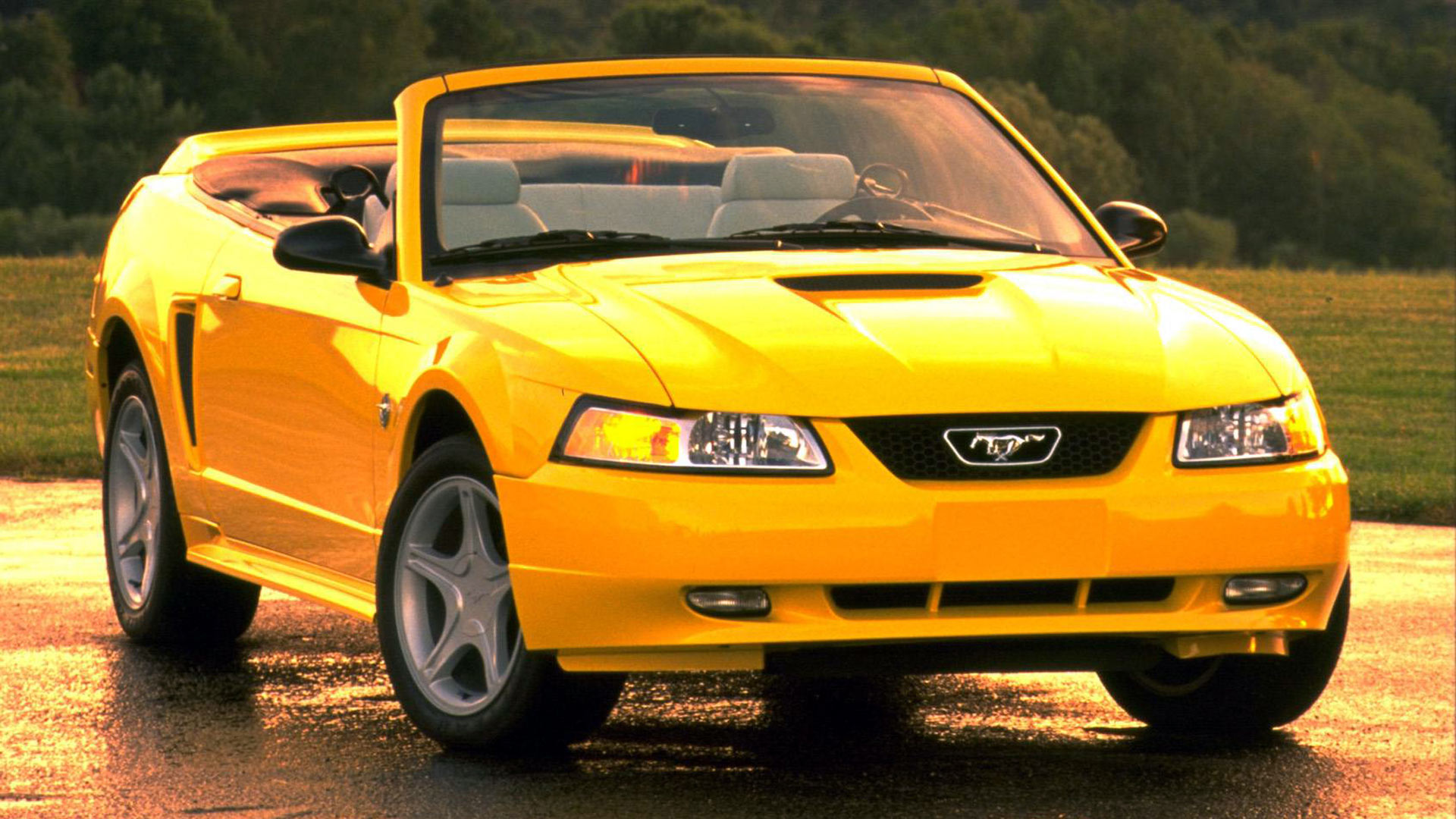
35th anniversary of the Ford Mustang
© FordThe final year of the last millennium marked the 35th anniversary of the Ford Mustang. Ford chose to mark the occasion by giving the car a new look, treating it to an interpretation of its ‘New Edge’ styling. V6 and GT Mustangs were given a 35th Anniversary badge. Of course, we only had eyes for the SVT Cobra R…
-
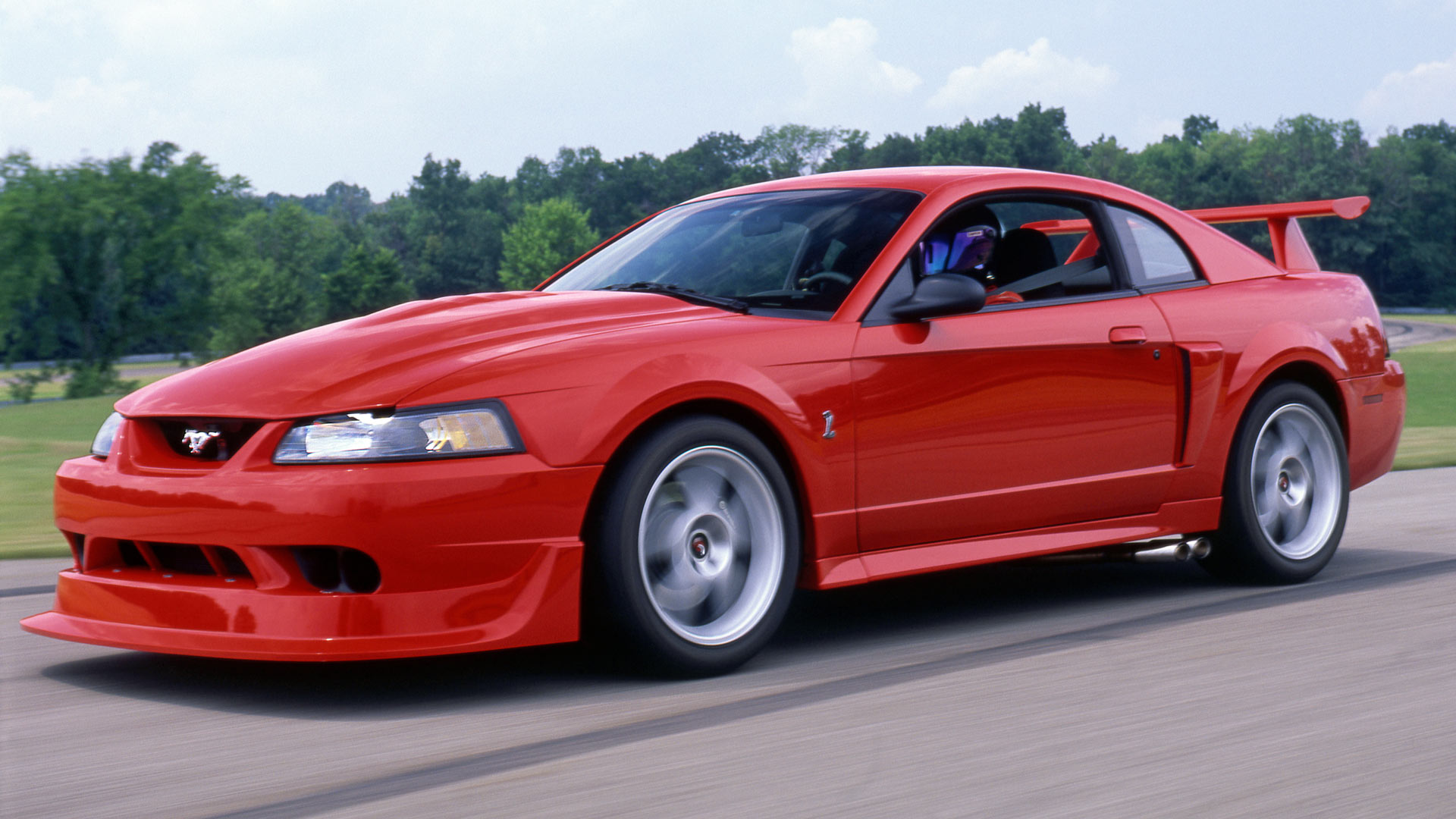
2000 Ford Mustang SVT Cobra R
© FordLimited to just 300 units, the 2000 SVT Cobra R would be the most extreme model to date. Fitted with a 5.4-litre V-8 engine, the Cobra R possessed 385 hp and underwent an intensive diet to shift unnecessary weight. Recaro bucket seats, Brembo brakes and suspension by Bilstein ticked all the major component boxes.
A deep front splitter and gigantic rear spoiler were impossible to ignore.
-
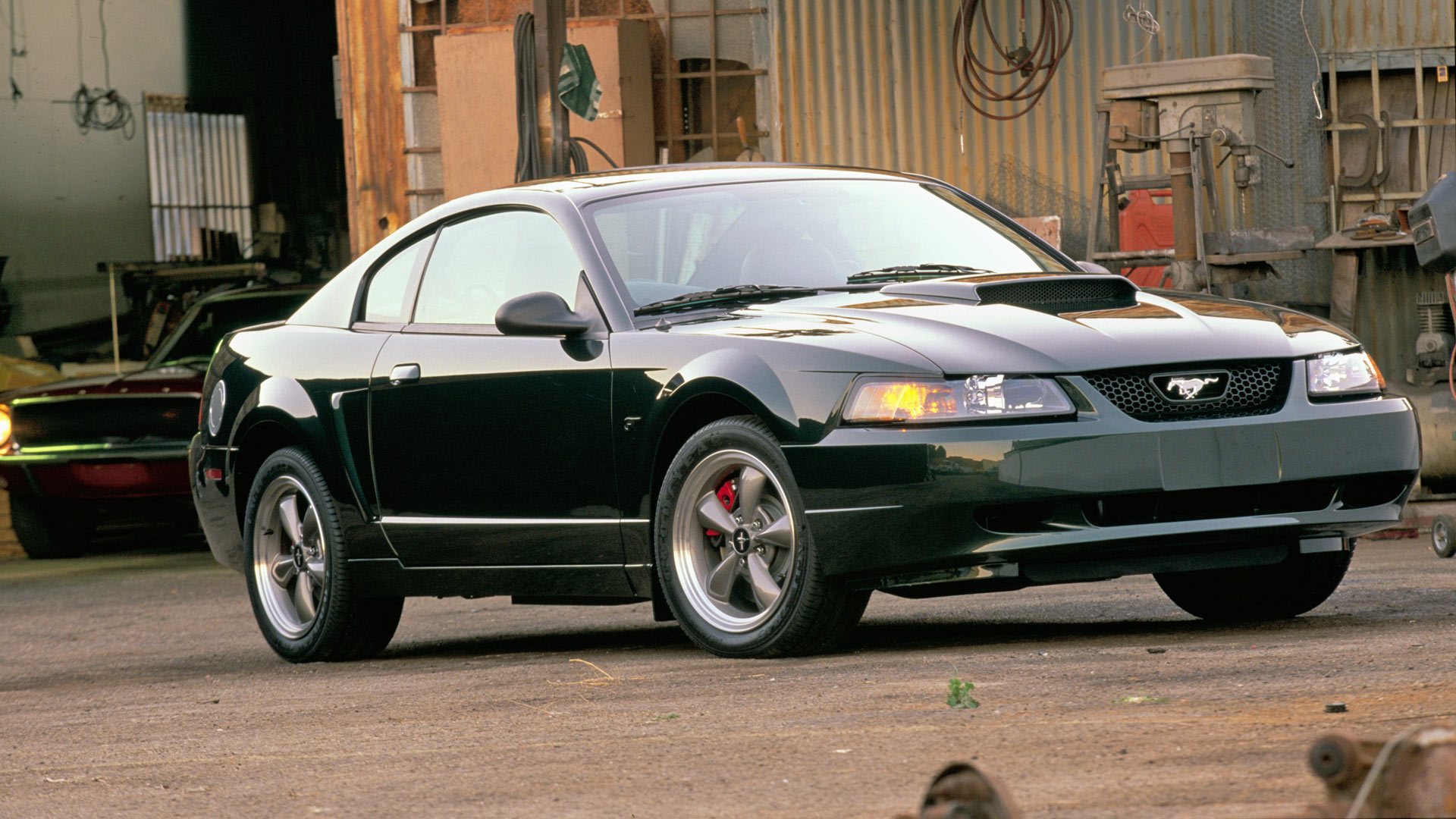
Ford Mustang Bullitt
© FordFord launched the limited edition Mustang Bullitt GT in 2001, built – as its name would suggest – to pay homage to the 1968 car driven by Steve McQueen (shown here). It was available in three colors: True Blue, Black and Dark Highland Green. This latter color was not available on any other Mustang, which is why it accounted for the lion’s share of the 5,582 sales. In 2001, it would set you back $26,320.
-
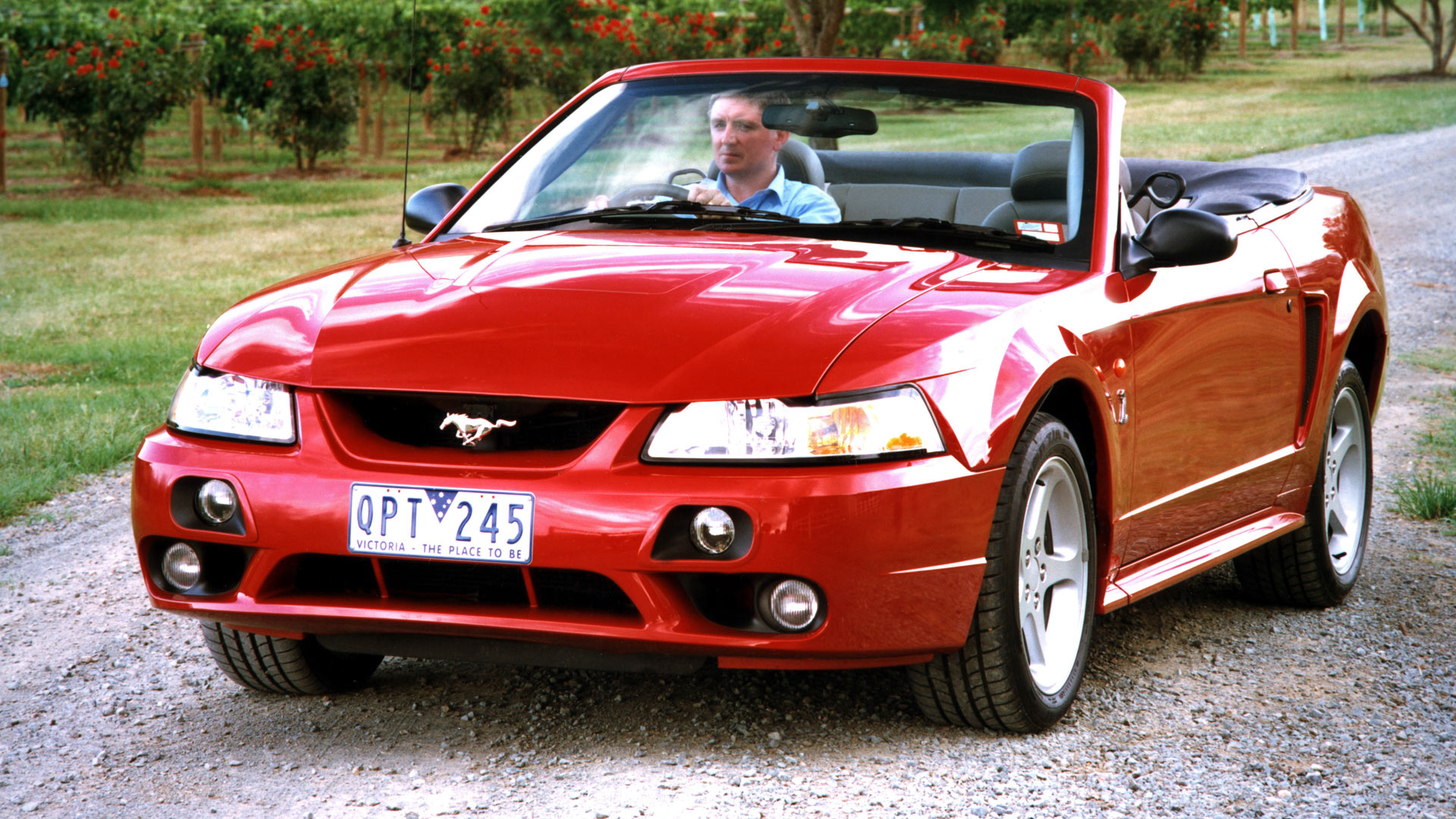
2002 Ford Mustang
© FordIn 2002, Sonic Blue was added to the list of color options, whilst Roush Performance launched a supercharged 360 hp 360R. The fourth-generation Mustang was also the first to be sold in Australia, with Ford asking Tickford to convert 250 Mustangs to right-hand drive in order to meet Australian design rules.
-
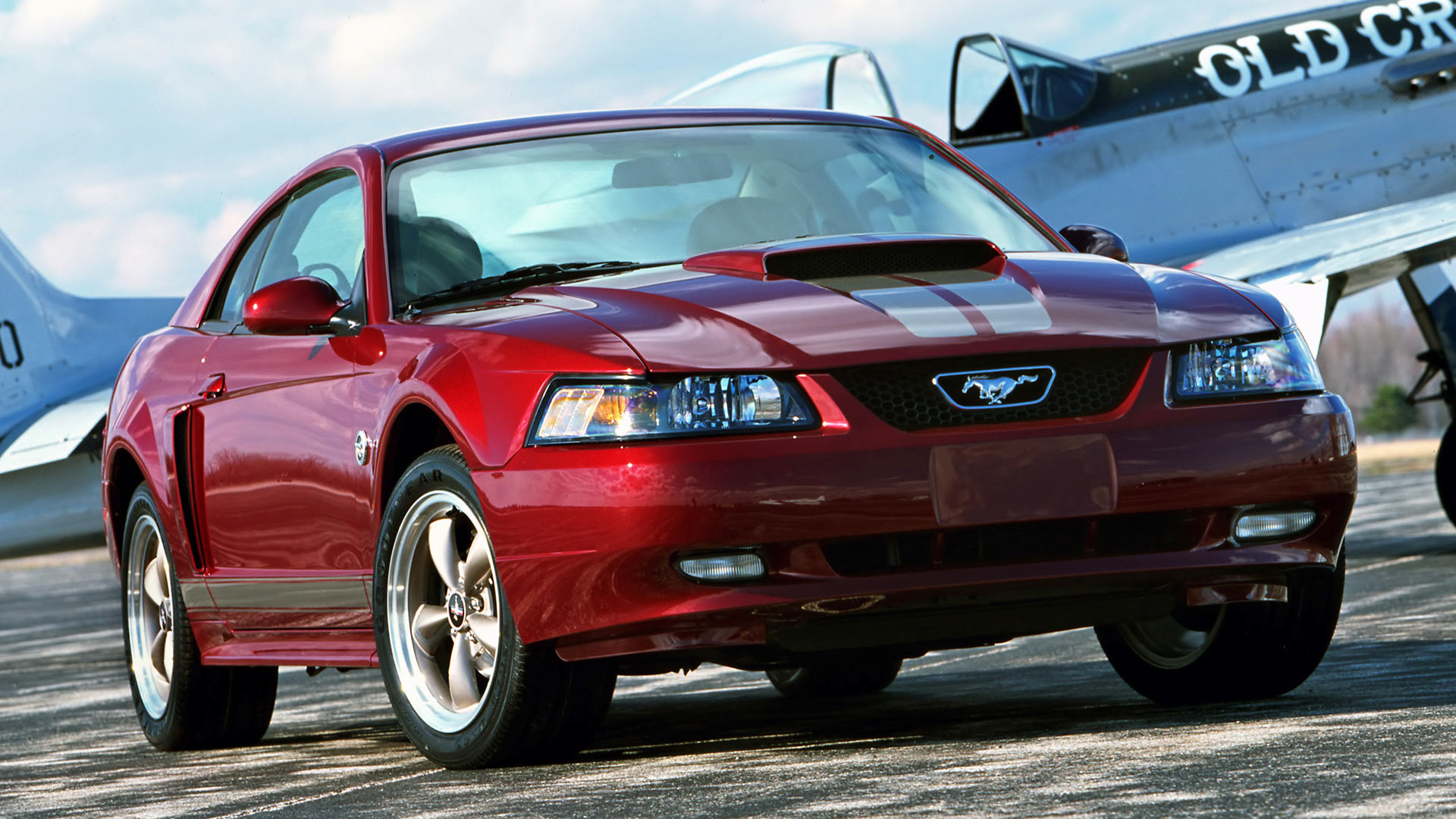
40th Anniversary of the Ford Mustang
© FordIn 2004, all Mustangs (with the exception of the Cobra models) were treated to a 40th Anniversary badge. Buyers could still choose from a range including a GT, Cobra, Roush, Saleen and Mach 1.
-
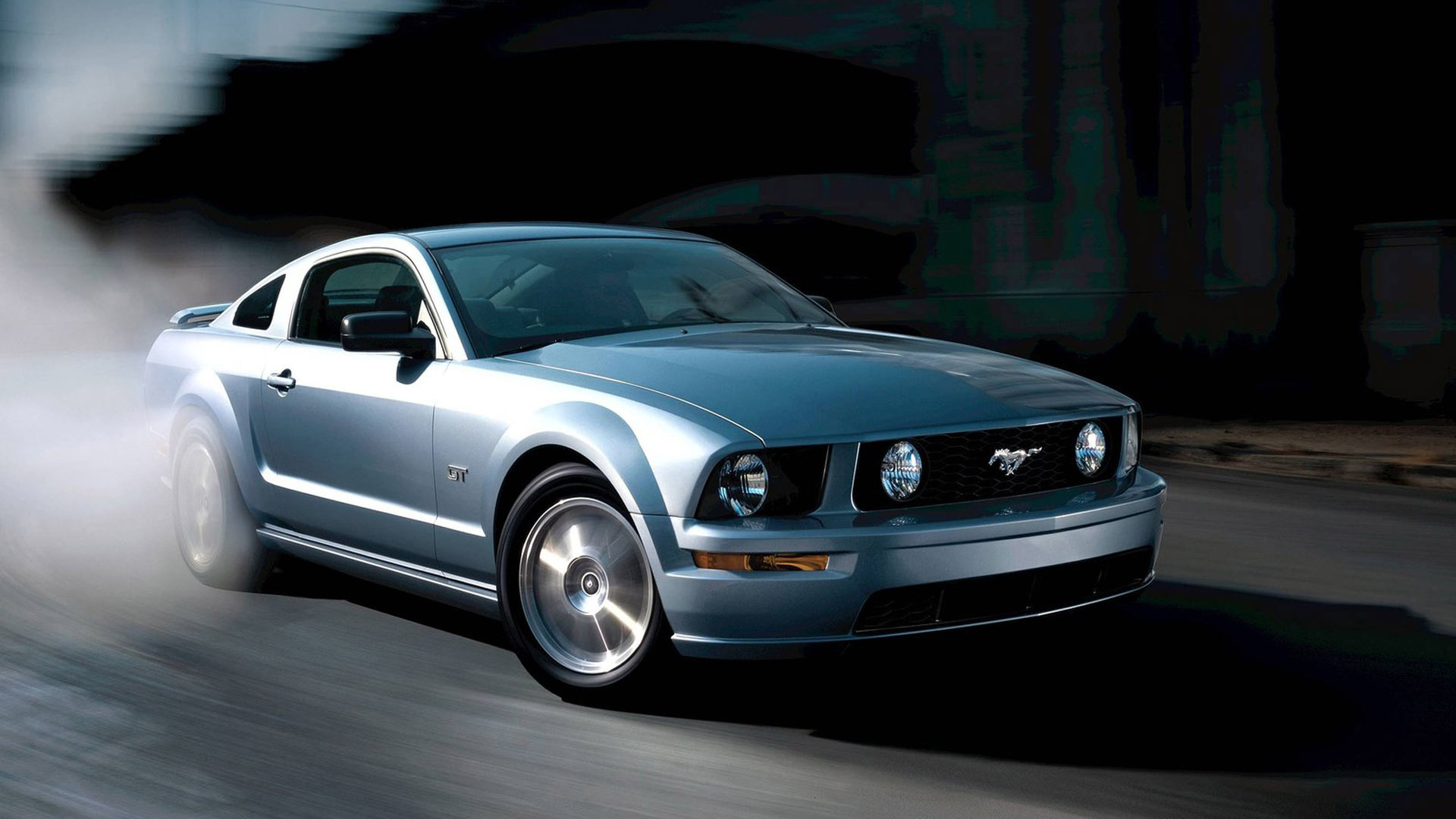
Fifth-generation Ford Mustang
© FordIf Ford had dabbled with a retro theme with the fourth generation Mustang, this time it went all-out. It was as though the previous 40 years hadn’t happened, because the fifth-generation car of 2005 looked like the original, updated. According to J Mays, Ford’s then senior vice president of design, it was “retro-futurism.”
-
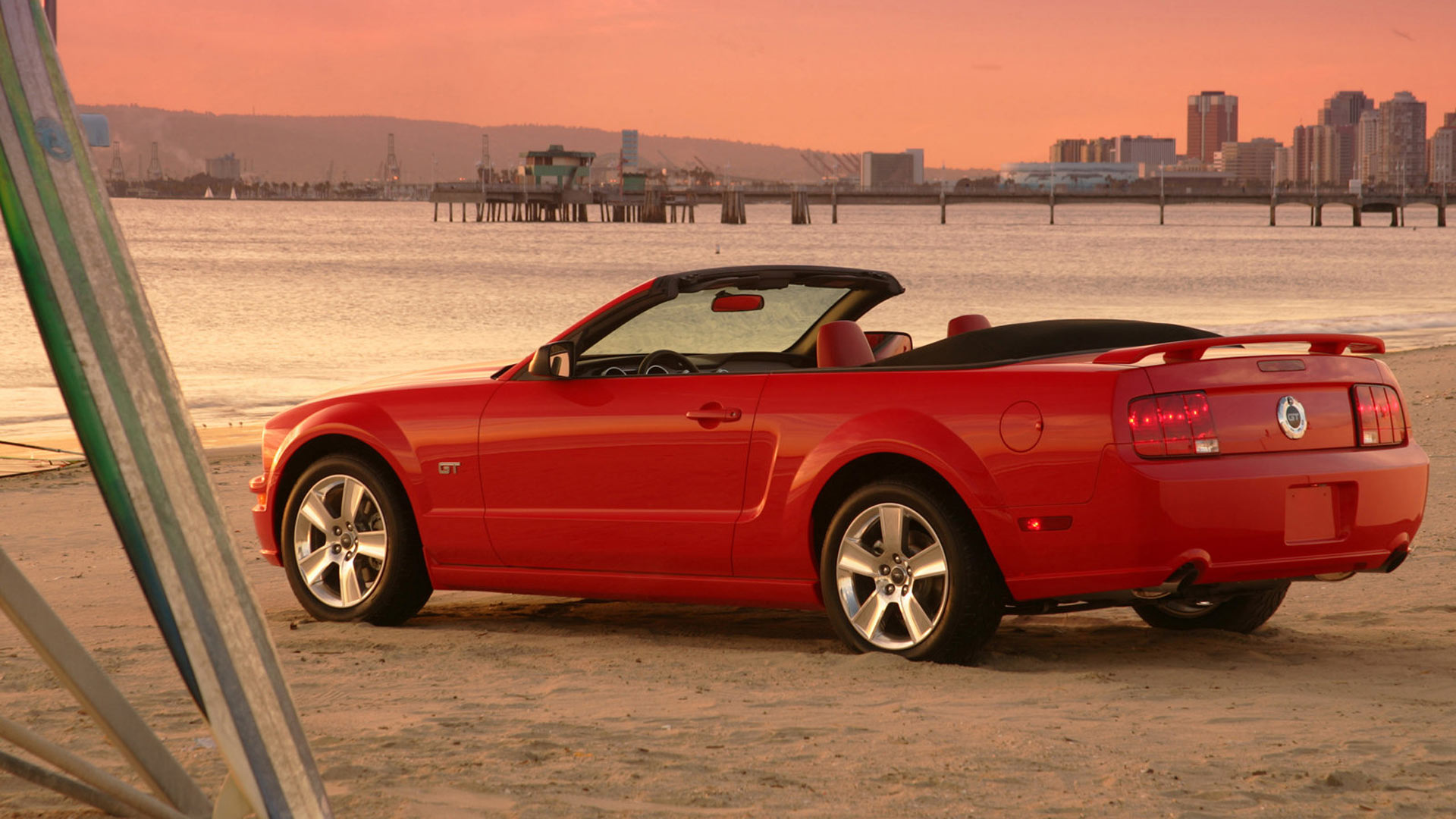
2005 Ford Mustang
© FordThe fifth-generation Mustang was built at Ford’s Flat Rock Assembly Plant in Michigan. Production cars were initially offered with either a 3.7-liter V6 or 4.6-liter V-8, with both Coupe and Convertible going on sale at the same time.
-
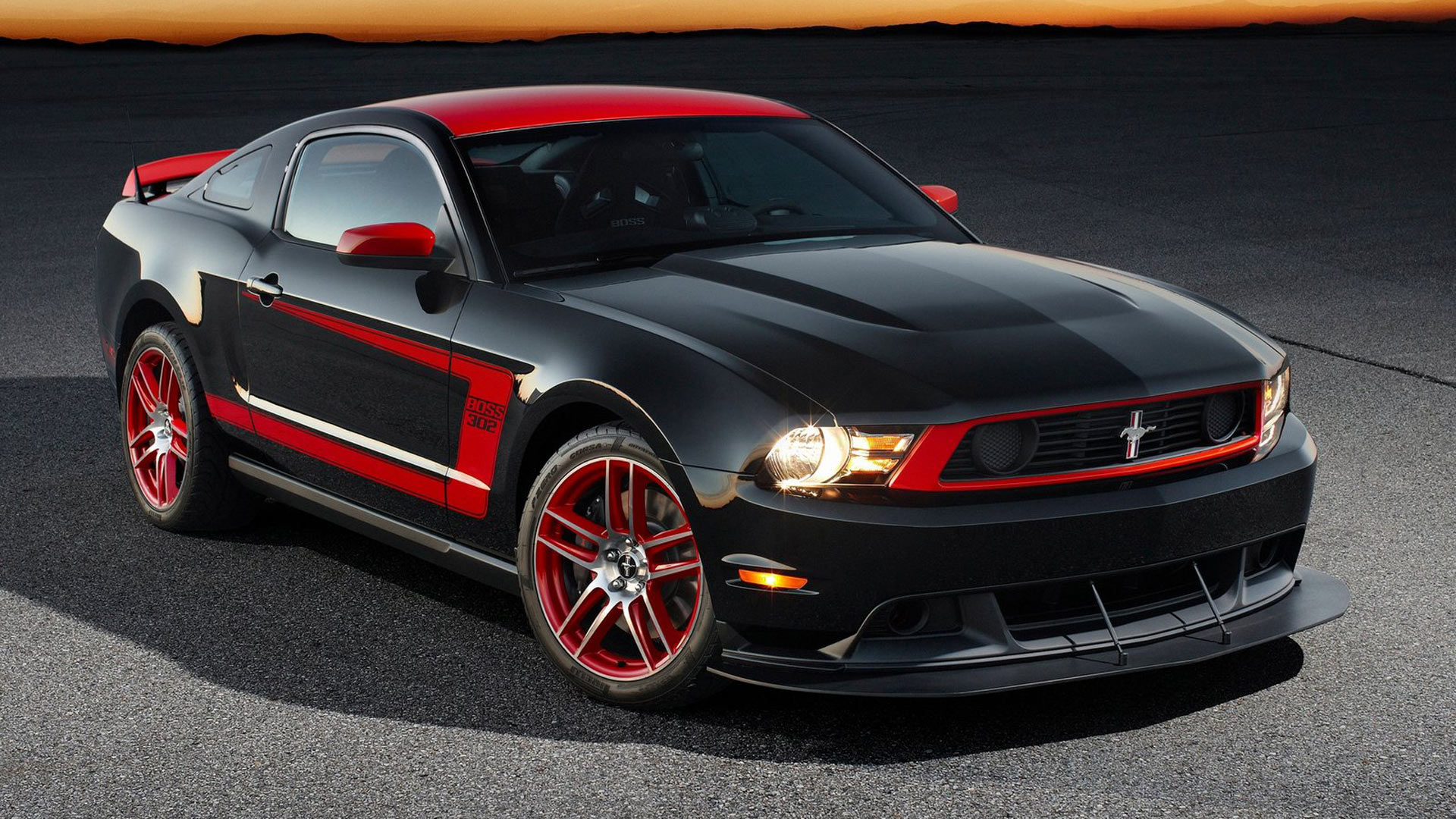
2012 Ford Mustang Boss 302
© FordIn 2012, the Boss 302 was introduced, offering 444 hp and 380 lb-ft of torque. A Laguna Seca special edition was also available, complete with additional body bracing.
-
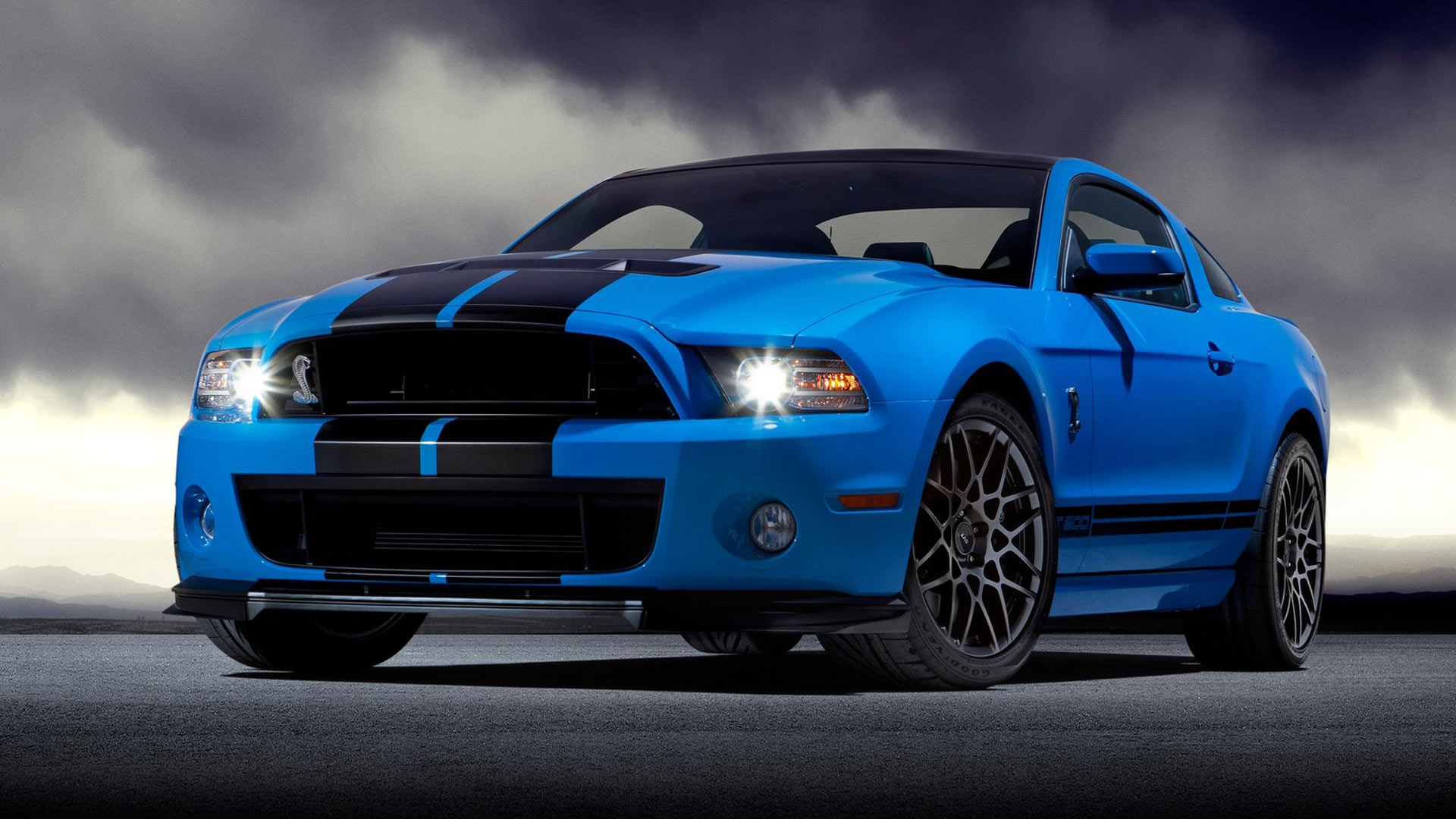
2013 Shelby Mustang GT500
© FordThe Shelby Mustang GT500 used a 5.4-liter supercharged V-8 engine, giving it 550 hp and 380 lb-ft of torque. The later 2013 car was fitted with a 5.8-liter supercharged V-8, producing 662 hp. This created the potential for the Mustang to reach a top speed in excess of 200mph.
-
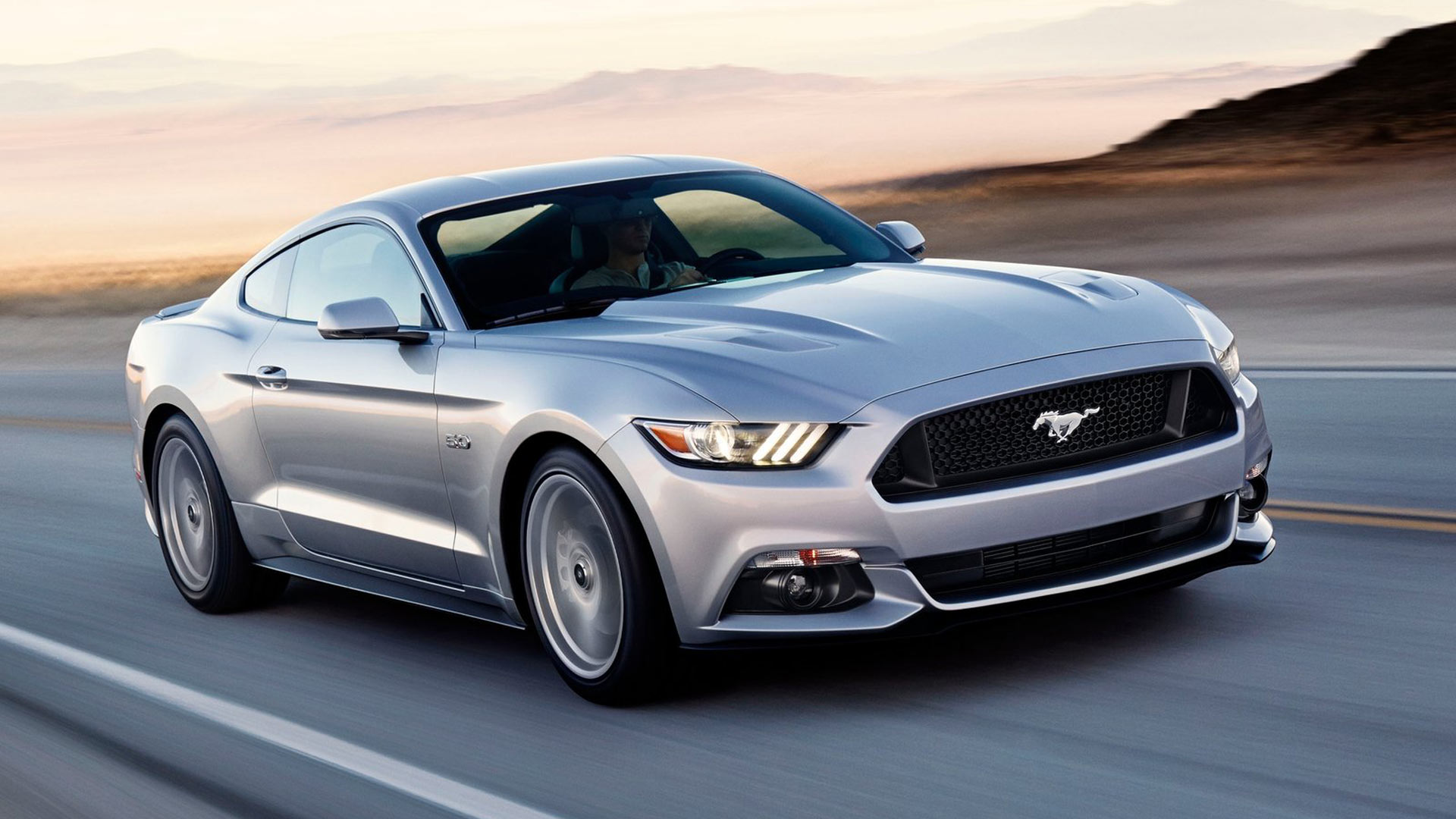
Sixth-generation Ford Mustang
© FordHelping commemorate the 50th anniversary of the Ford Mustang, a brand-new sixth-generation version was revealed in late 2013. Blending retro elements with modern touches, it was created by Ford’s design center in Cologne, Germany.
Classic features included tri-bar rear lights, like the original model, along with signature lighting at the front. This sees three illuminated light bars housed inside the headlights, replicating the details of the first-generation model.
-
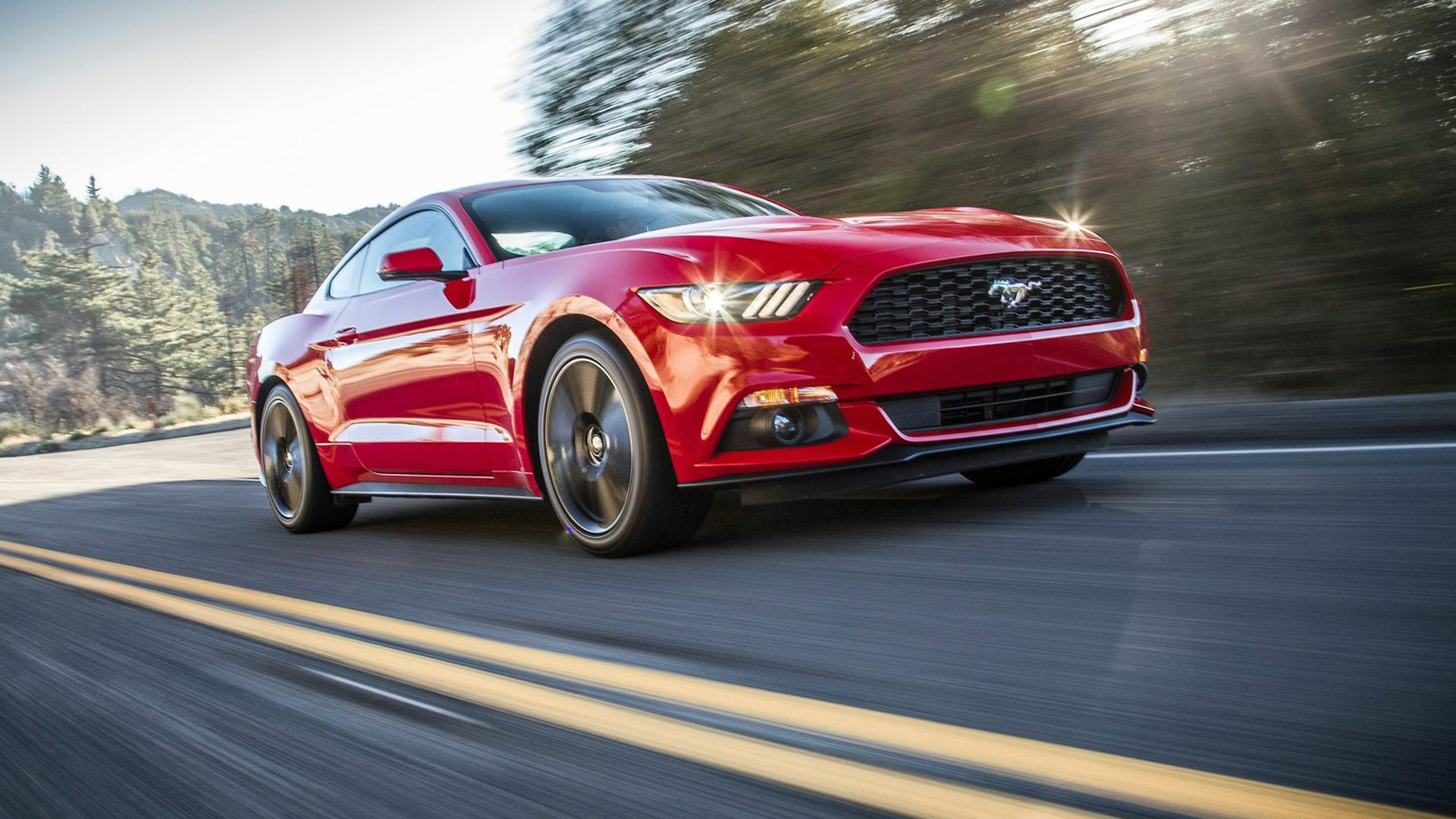
2015 Ford Mustang
© FordThe all-new sixth-generation version would become the first ‘global Mustang’, designed for countries beyond just North America. This included officially producing the Mustang in right-hand drive, making the classic machine more accessible for enthusiasts in countries like the United Kingdom.
Being built for a wider audience helped make the Mustang the world’s best-selling sports car.
-
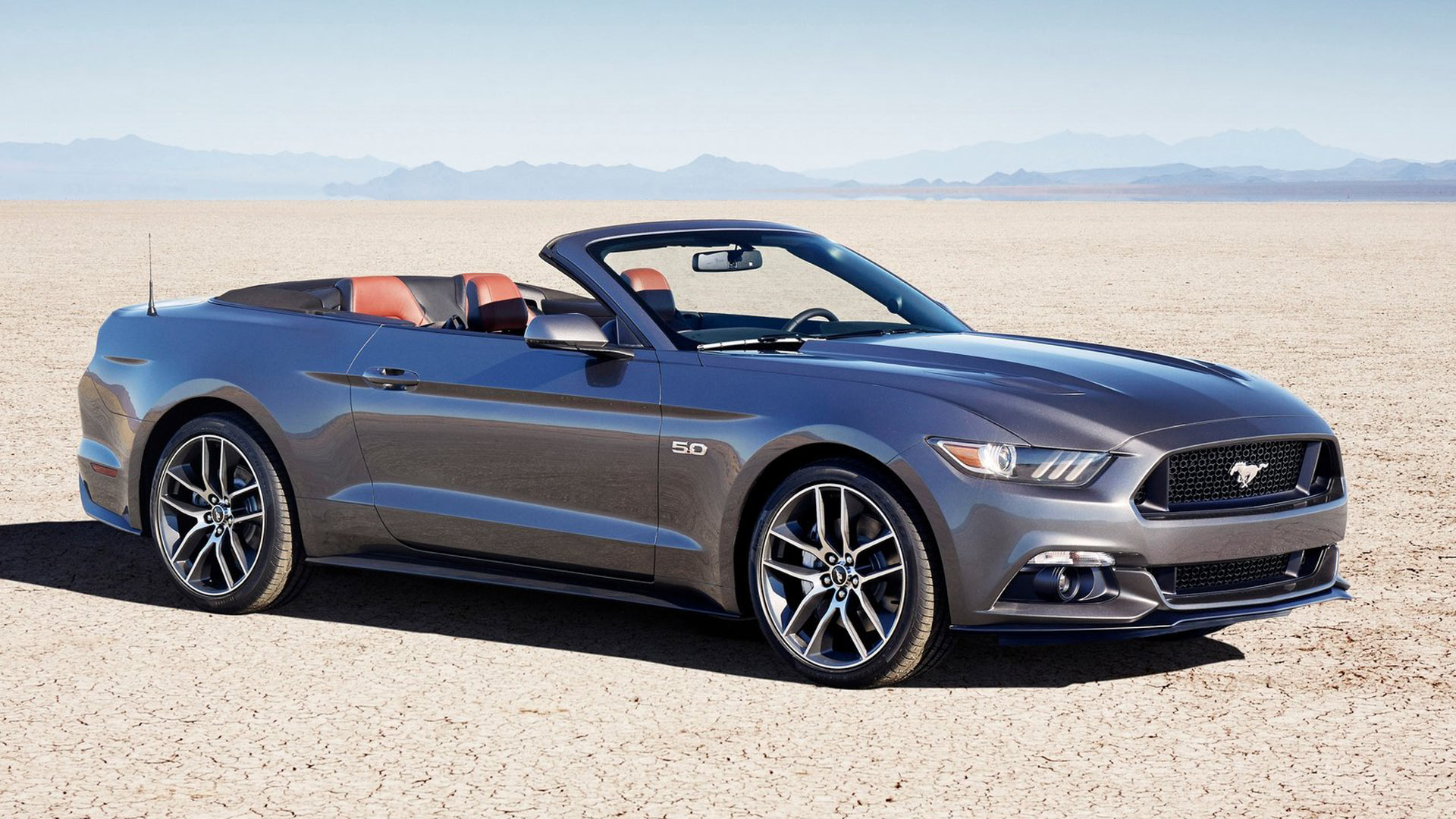
2015 Ford Mustang Convertible
© FordFord also marked a return to turbocharged engines with the sixth-generation Mustang. Alongside the classic 3.7-liter V-6 and 5.0-liter V-8, Ford also fitted the Mustang with the 2.3-liter four-cylinder EcoBoost. Producing 310 hp, the turbocharged motor was a relative of the one fitted to the Ford Focus RS performance hatchback.
Enthusiasts could initially pick between a six-speed manual transmission or a six-speed automatic. Both the Fastback and Convertible went on sale at the same time, with production cars leaving the Flat Rock Assembly plant in July 2014.
-
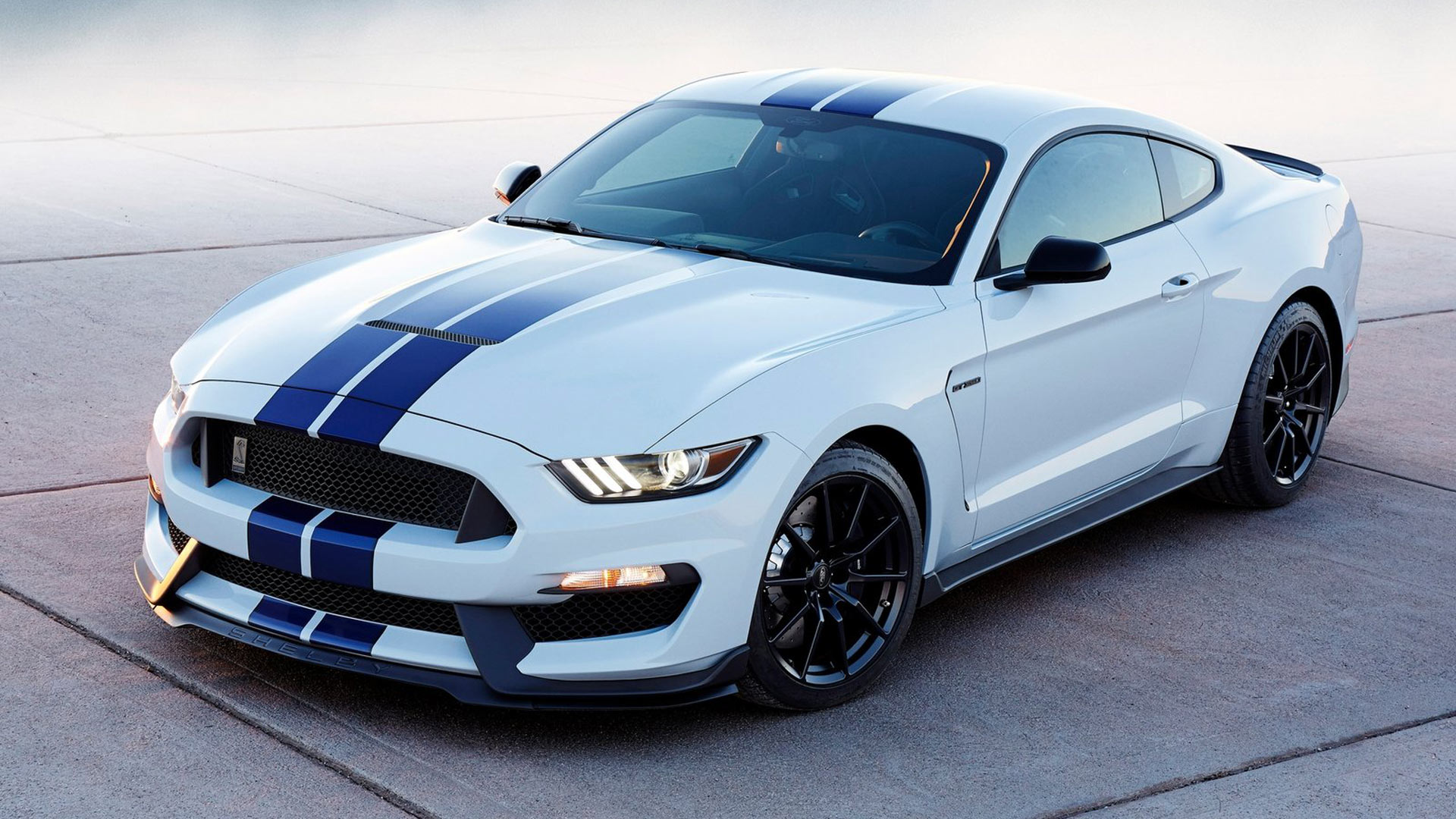
2015 Shelby GT350
© FordFord did not hang around to launch a performance Shelby version, with the GT350 launched at the 2014 LA Auto Show. At the heart of the GT350 was a radical flat-plane-crank 5.2-liter ‘Voodoo’ V-8 engine, producing a fearsome 526 hp and 429 lb-ft of torque.
The GT350 also benefited from the use of carbon fiber for various body parts, plus upgraded Brembo brakes and tuned MagneRide adjustable suspension.
-
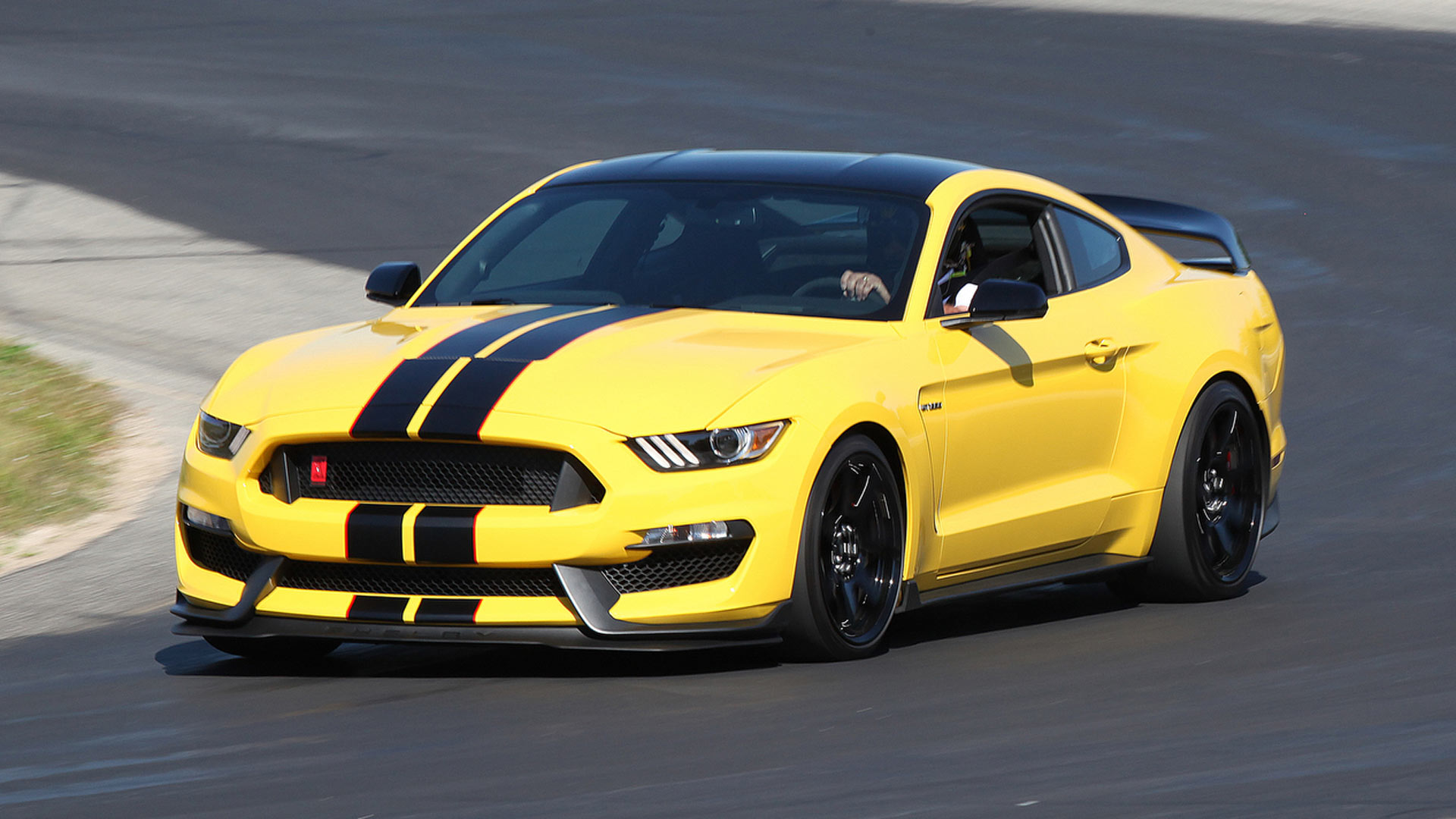
2015 Shelby GT350R
© FordFor those who wanted the ultimate in track-day performance, the Shelby GT350R pushed the Mustang to its limits. Raj Nair, Ford group vice president for global product development, said: “The Shelby GT350R Mustang is a no-compromise car in the pursuit of maximum track capability. It is a thoroughbred street car, making use of technology and ingenuity to deliver performance few enthusiasts have ever experienced.”
Along with specially tuned suspension, the GT350R boasted wheels made from lightweight carbon fiber and an aggressive aerodynamic body kit. The rear seats, air conditioning and even the carpets were ditched to help save weight.
-
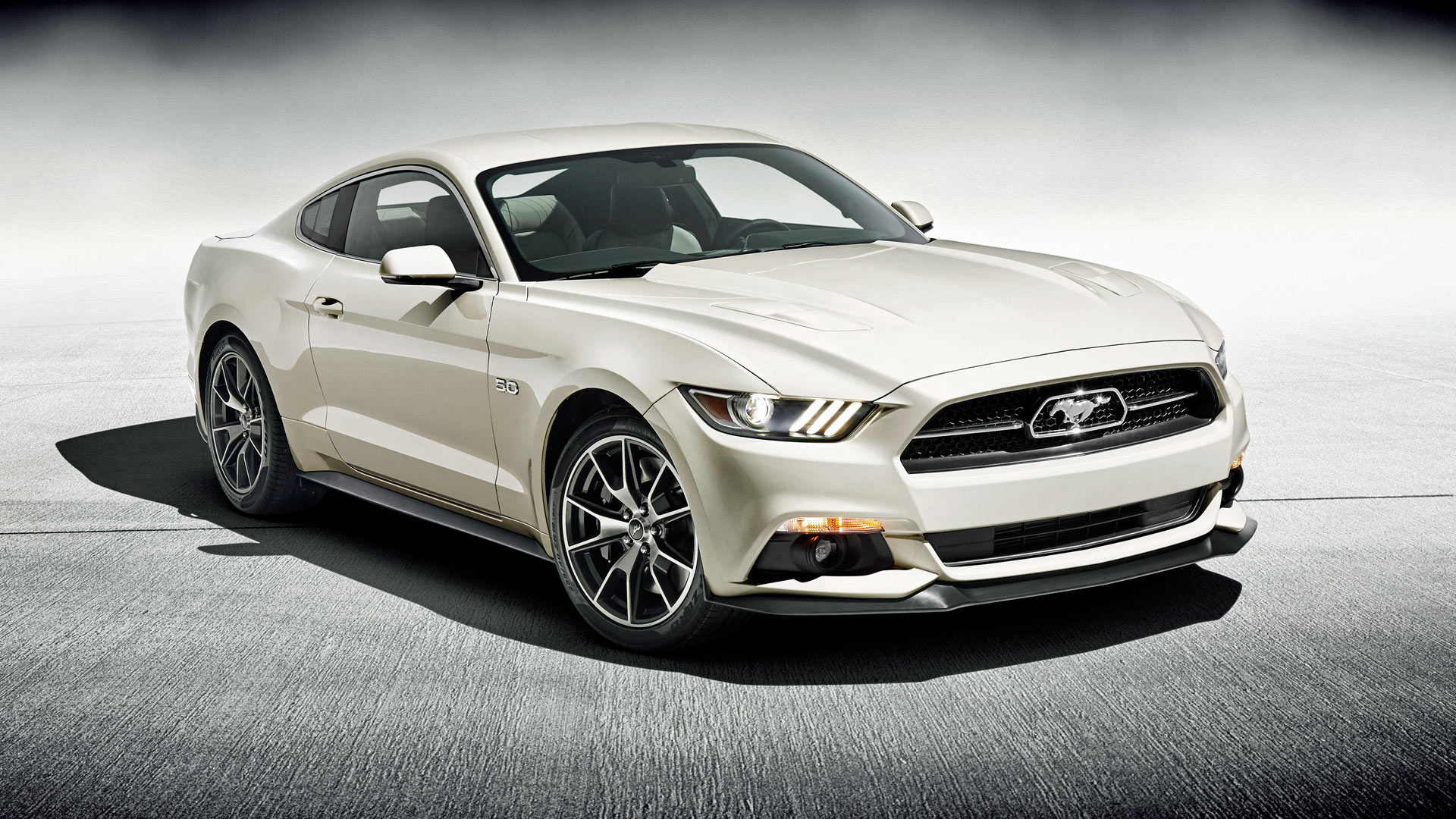
2015 Ford Mustang 50 Year Limited Edition
© FordTo help commemorate the Mustang’s 50th anniversary, Ford created a limited-edition version for the 2015 model year. Restricted to 1,964 examples, the special car was based upon the Mustang GT with the Performance Pack fitted.
Buyers were only offered the choice of Kona Blue or Wimbledon White paint colors, with the front grille featuring a traditional Mustang corral. Louvered rear quarter windows were an additional retro touch.
-
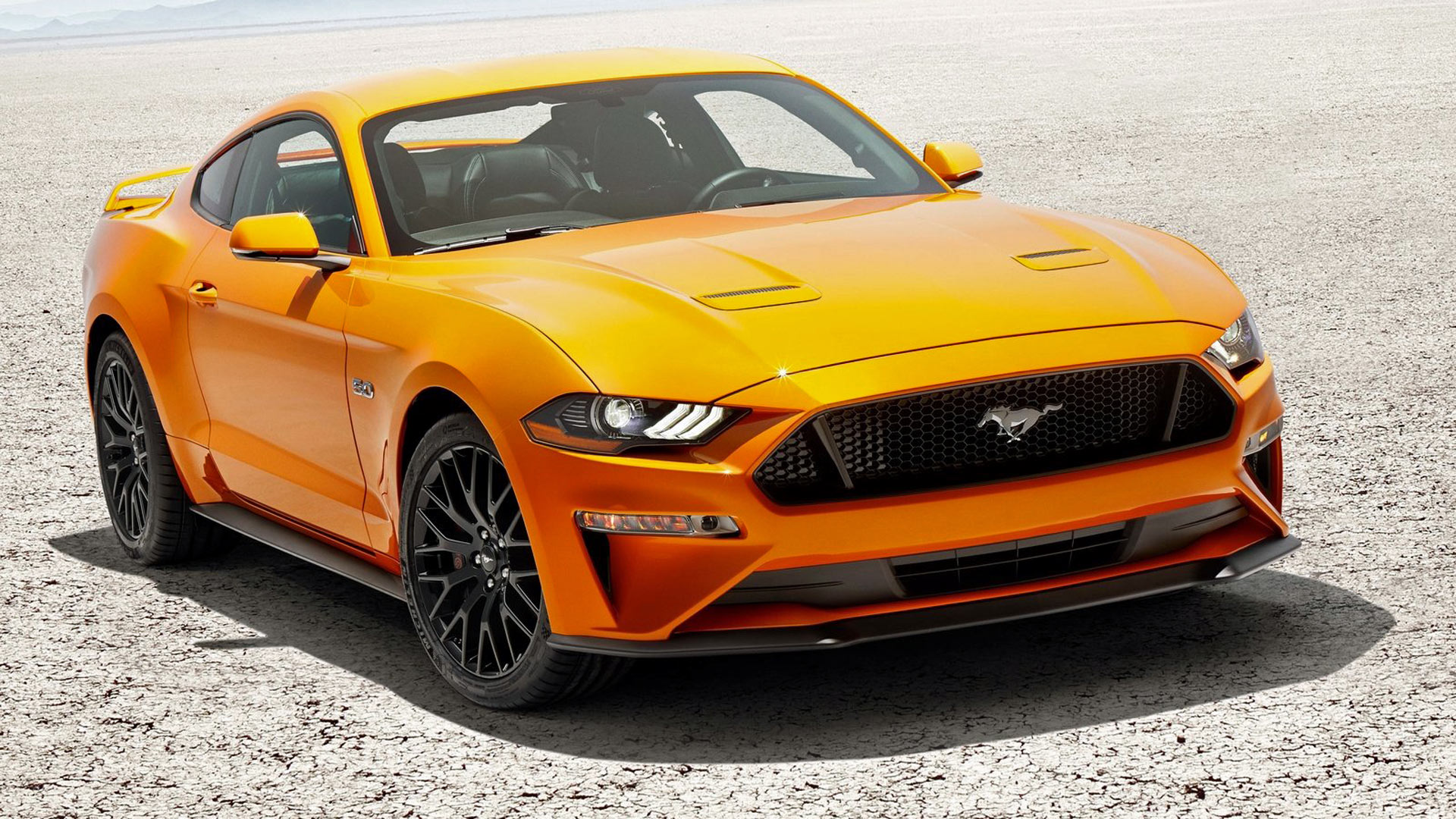
2018 Ford Mustang
© FordFor the 2018 model year, Ford opted to give the Mustang a mid-life facelift. On the outside, this meant a redesigned hood and front bumper, with the full range gaining all-LED headlights. New color choices include the bold Orange Fury option, with a choice of alloy wheel designs.
On the inside, a 12-inch digital dashboard transformed the Mustang’s interior. Owners could tailor the layout to their preferred look, with three different modes offered.
A new 10-speed automatic gearbox was added, while the exhaust note could be tuned to avoid upsetting the neighbors in the morning.
-
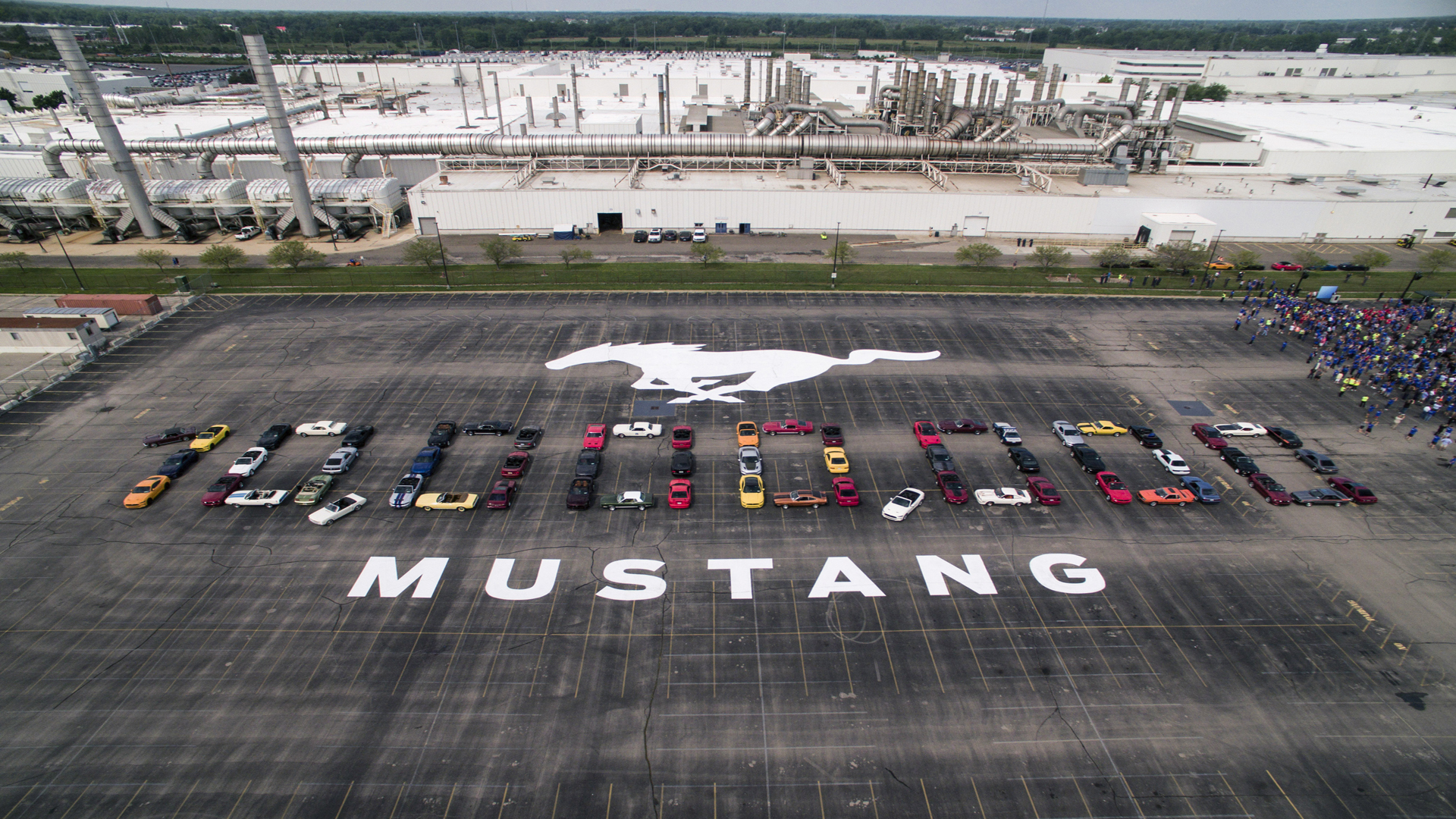
Ten-millionth Mustang
© FordIn August 2018, Ford celebrated production of its 10-millionth Mustang at the Flat Rock Assembly Plant in Michigan.
The particular model leaving the line was a 2019 Mustang GT V8 Convertible, finished in Wimbledon White and equipped with a six-speed manual transmission. This was the same color as the very first VIN 001 Mustang, produced back in 1964.
-
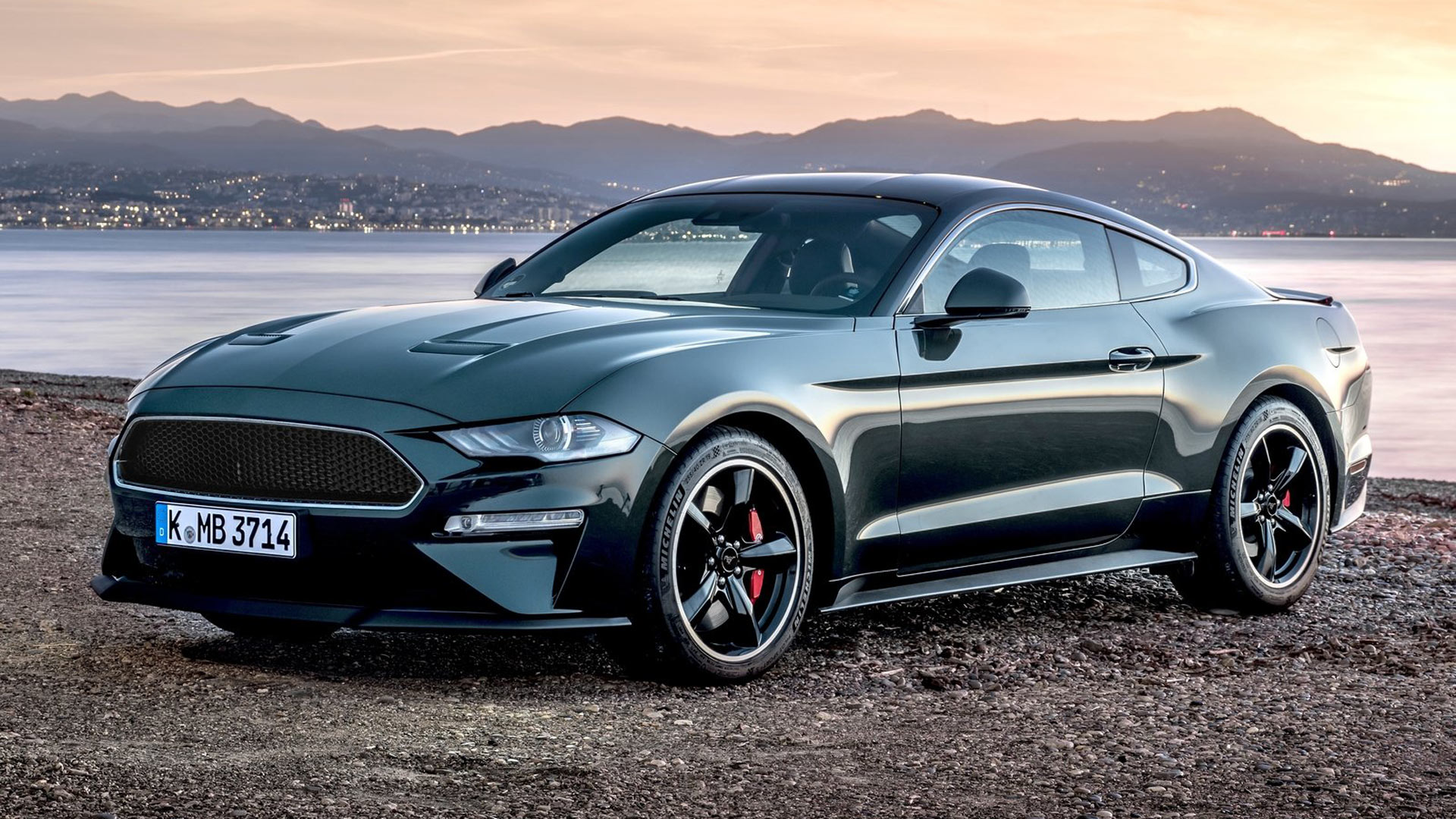
2019 Ford Mustang Bullitt
© FordThe 2019 model year also saw the release of a new Ford Mustang Bullitt special edition. This coincided with the 50th anniversary of the Bullitt movie, and saw a number of important alterations made for the new machine.
Ford upped the performance of the 5.0-liter V8 to 480 hp, while a standard six-speed manual transmission featured a cue ball-style shift knob. All Performance Package options were fitted, along with parts from the Shelby GT350.
Exterior paint choices were limited to Shadow Black and trademark Highland Green, with the leather-trimmed interior gaining green highlights. A bespoke instrument panel, unique front grille design, and a set of 19-inch alloy wheels were also added.
-
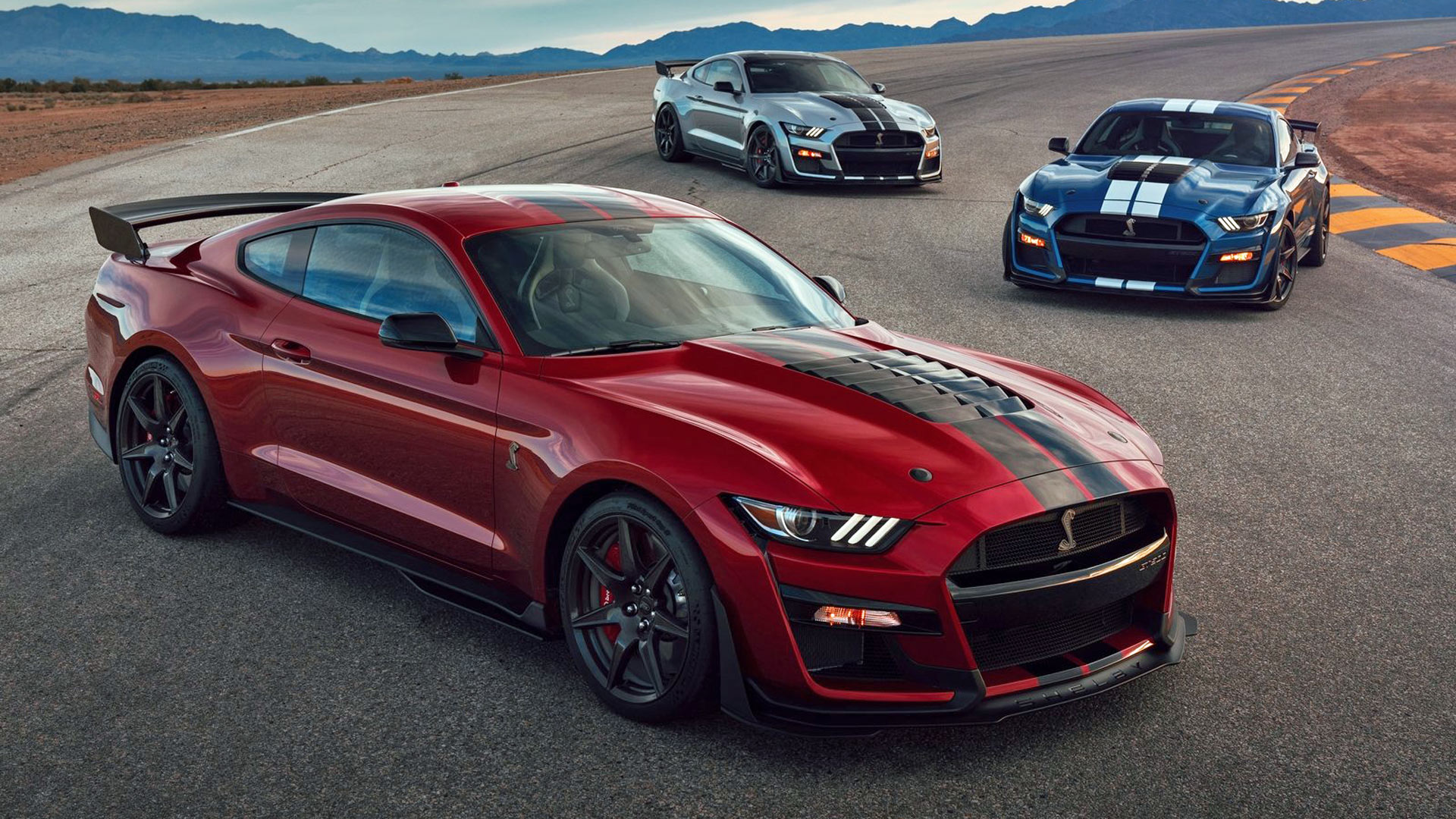
2020 Shelby GT500
© FordFor 2020, Ford brought back the Shelby GT500 badge to the Mustang range. The name would be applied to the fastest street-legal Mustang ever produced, thanks to a hand-built 5.2-liter supercharged V-8 engine beneath the hood.
Producing an incredible 760 hp, the GT500 was combined with a seven-speed dual-clutch transmission for maximum performance. Upgraded suspension, and the largest brake rotors fitted to a domestic sports car, ensured the GT500 handled and stopped as well as it went.
-
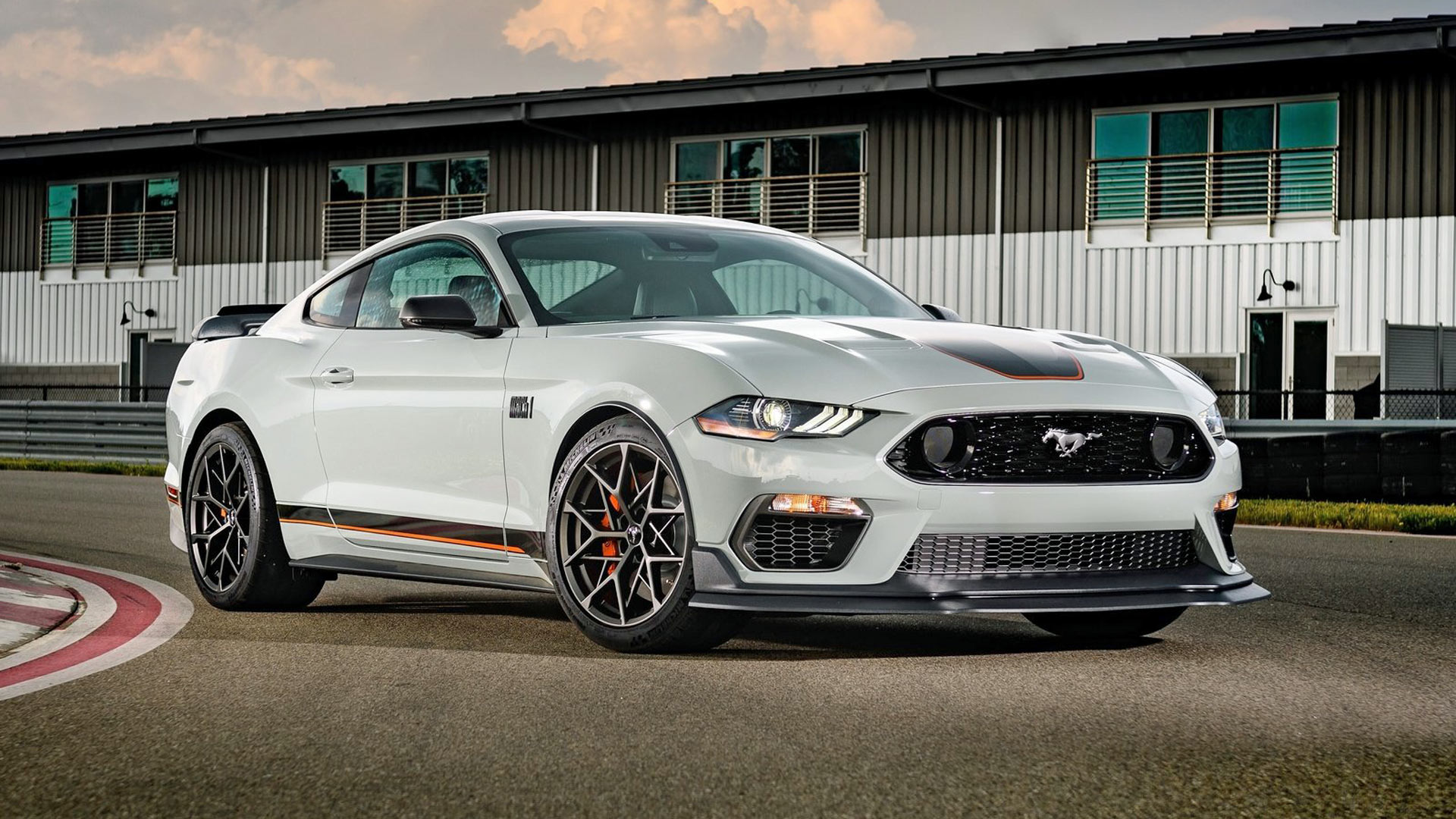
2021 Ford Mustang Mach 1
© FordThe Mach 1 name made a comeback for 2021, marking the first time it had been used since 2004. Notably, the all-new Mustang Mach 1 would be sold in global markets for the very first time. Like the earlier Bullitt version, the Mach 1 used a 480 hp version of the 5.0-liter V-8 engine.
An optional Handling Package saw the addition of a larger high-downforce front splitter, plus a special rear spoiler with a Gurney flap for extra downforce. Buyers could opt for an exclusive Fighter Jet Gray paint finish.
-
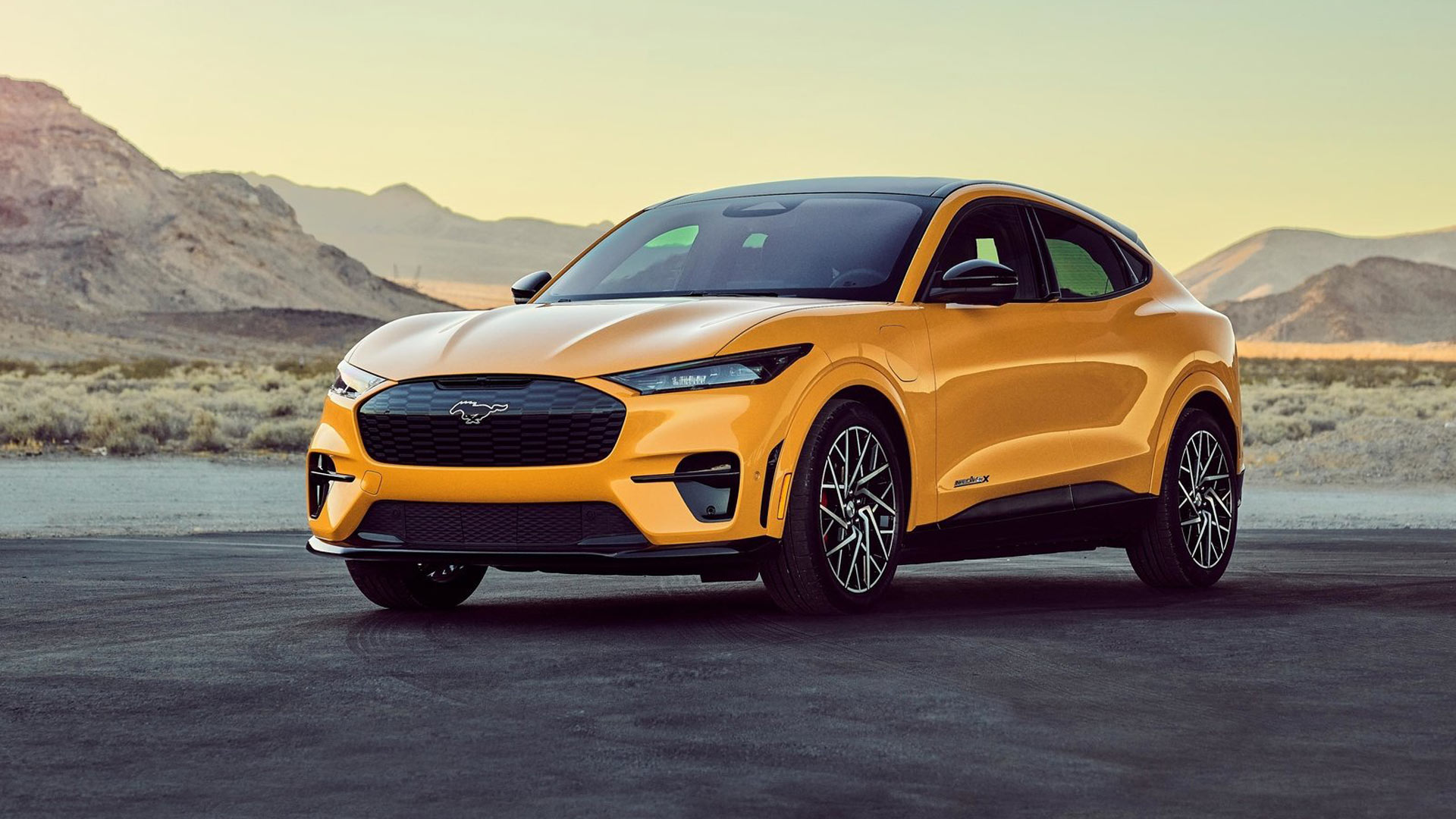
2021 Ford Mustang Mach-E
© FordFord then shocked purists by applying the Mustang name to the company’s first all-electric crossover SUV. The name was justified by the fact the Mustang Mach-E GT version offers more torque than any other road-going Ford vehicle.
Generating 480 hp, plus a huge 634 lb-ft of torque in the GT Performance Edition, the Mach-E is capable of accelerating from 0-60 mph in just 3.5 seconds. Aiding this rapid acceleration is a standard all-wheel-drive system, with features optimized for use on a race track.
-
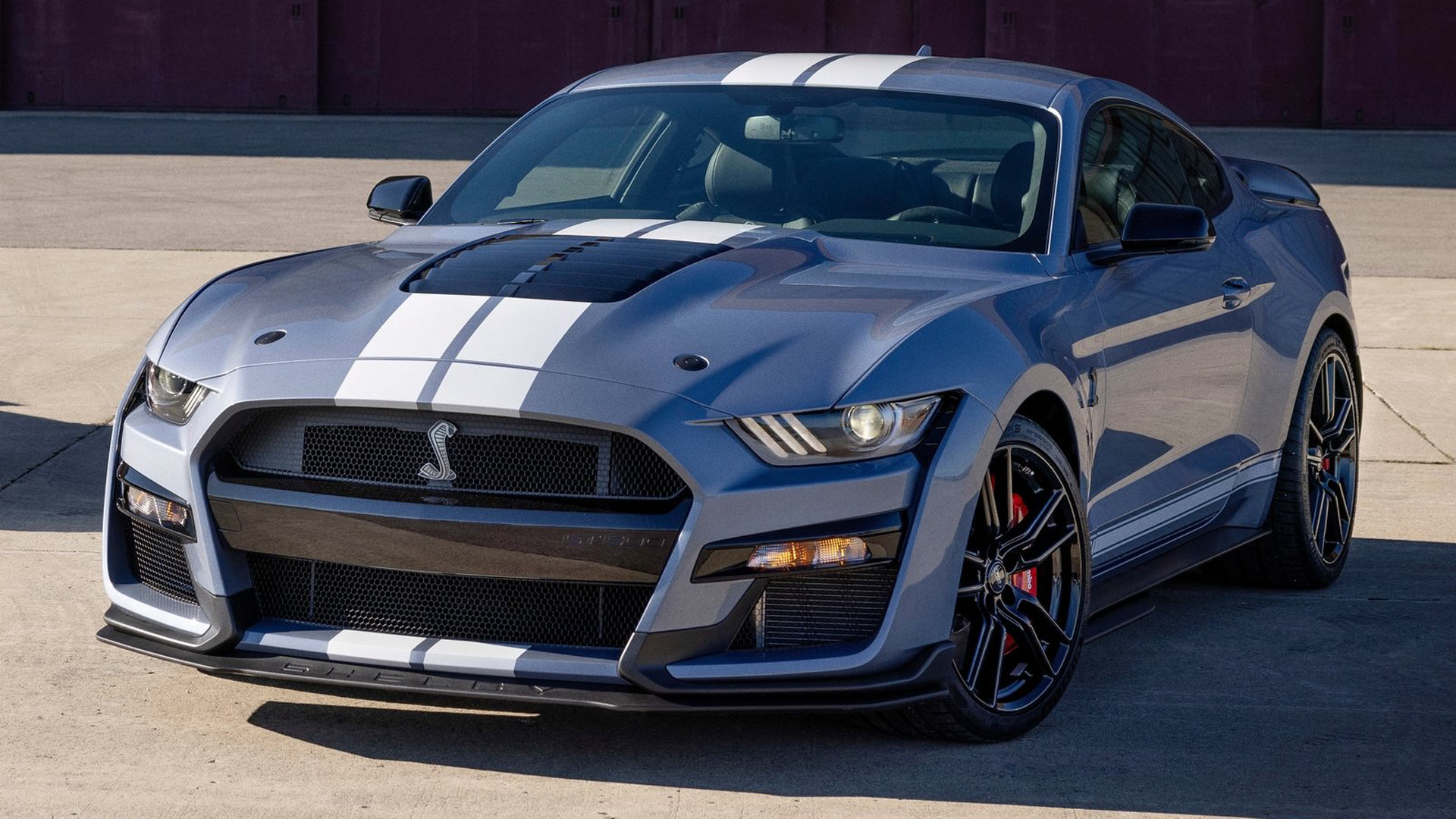
2022 Shelby GT500 Heritage Edition
© FordWith the sixth-generation of the Mustang drawing to a close, Ford revealed a number of special editions for the 2022 model year. An Ice White Edition paid homage to the 1993 Triple White Fox body Mustang, while Europe received a California Special convertible version for the first time.
At the top of the performance ladder, the Shelby GT500 gained a new retro-inspired Heritage Edition. The limited-production model paid homage to the first 1967 GT500, with the option of an exclusive Brittany Blue paint color with Wimbledon White body stripes.
-
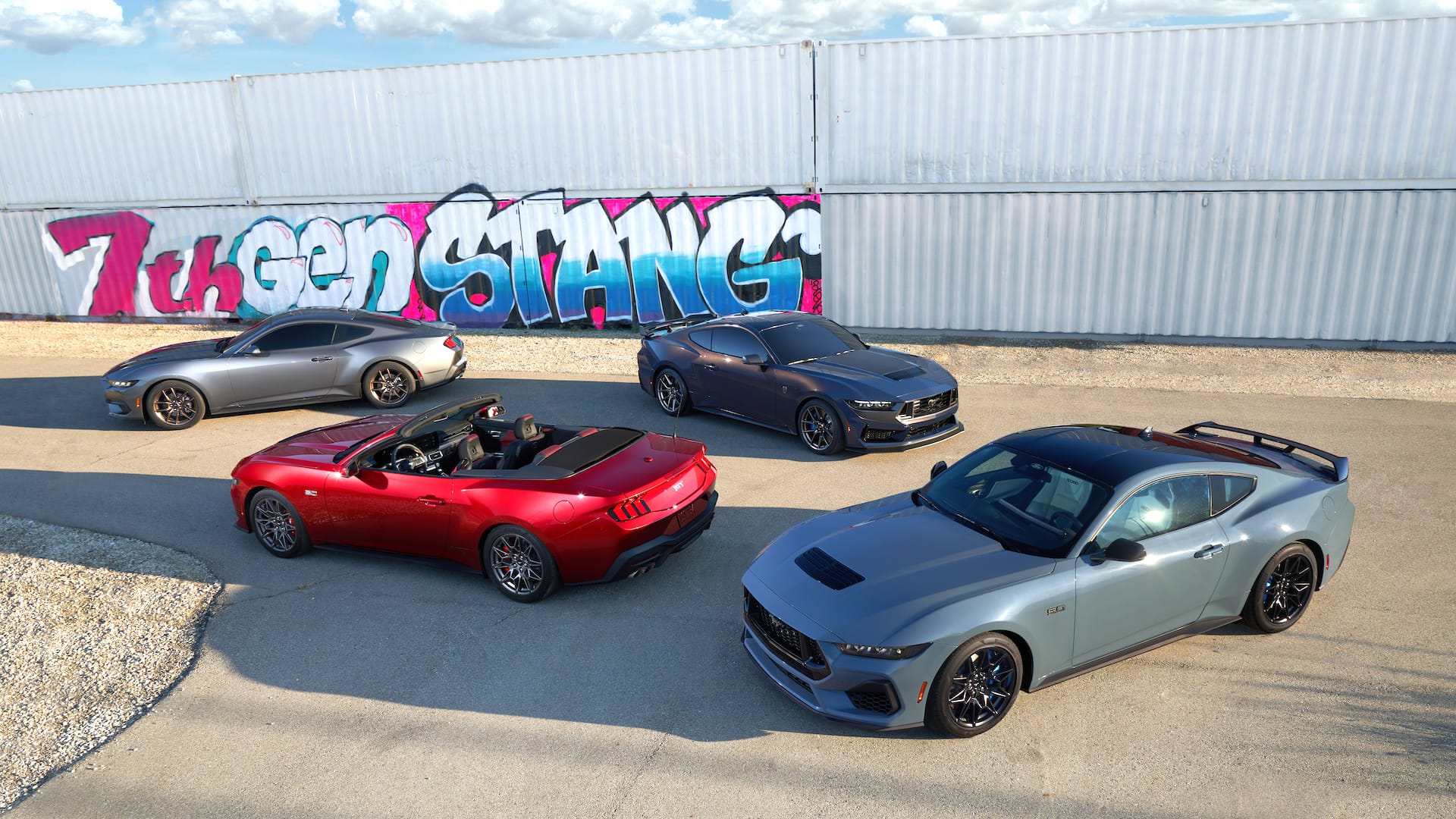
Seventh-generation Ford Mustang revealed
© FordAs part of a special event for the 2022 Detroit Auto Show, Ford revealed the all-new seventh-generation Mustang. Described as being the ‘most exhilarating and fun-to-drive’ version of the ’Stang ever made, Ford has high hopes for its new model.
From bold new looks, to a thoroughly modern interior and updated technology, the latest Mustang represents a major leap forward.
-
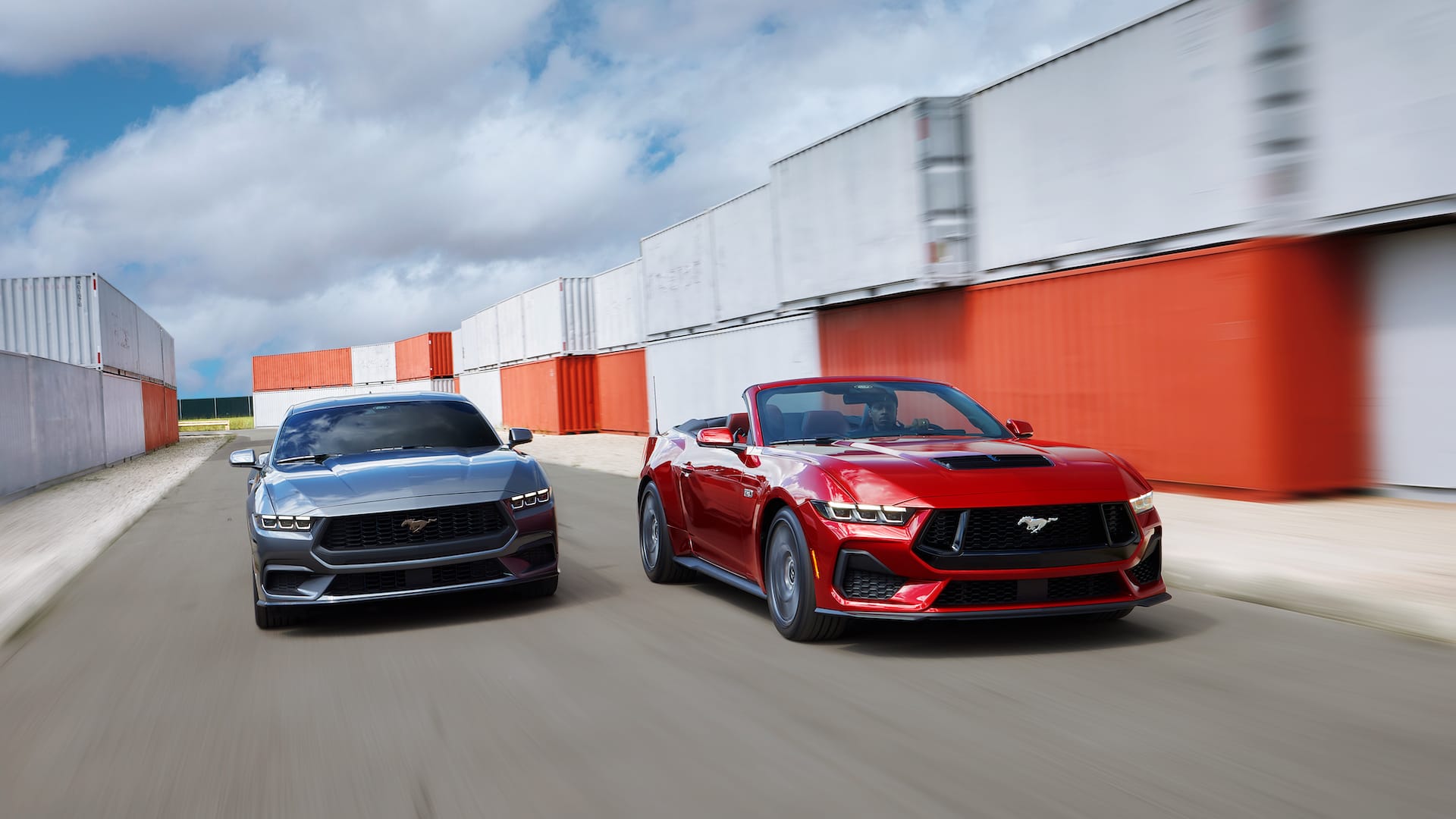
2024 Ford Mustang
© FordFord notes that the new Mustang’s exterior design is intended to be ‘edgier yet timeless’, blending classic details with an updated shape. Trademark tri-bar headlights are present, with each model gaining a different front grille style.
Aerodynamics have also been improved, with the GT model getting an extra front splitter and bespoke hood vents for better airflow
A total of 11 paint colors will be offered from the factory, with buyers able to customize wheel finishes and brake caliper colors, plus add exterior stripes.
-
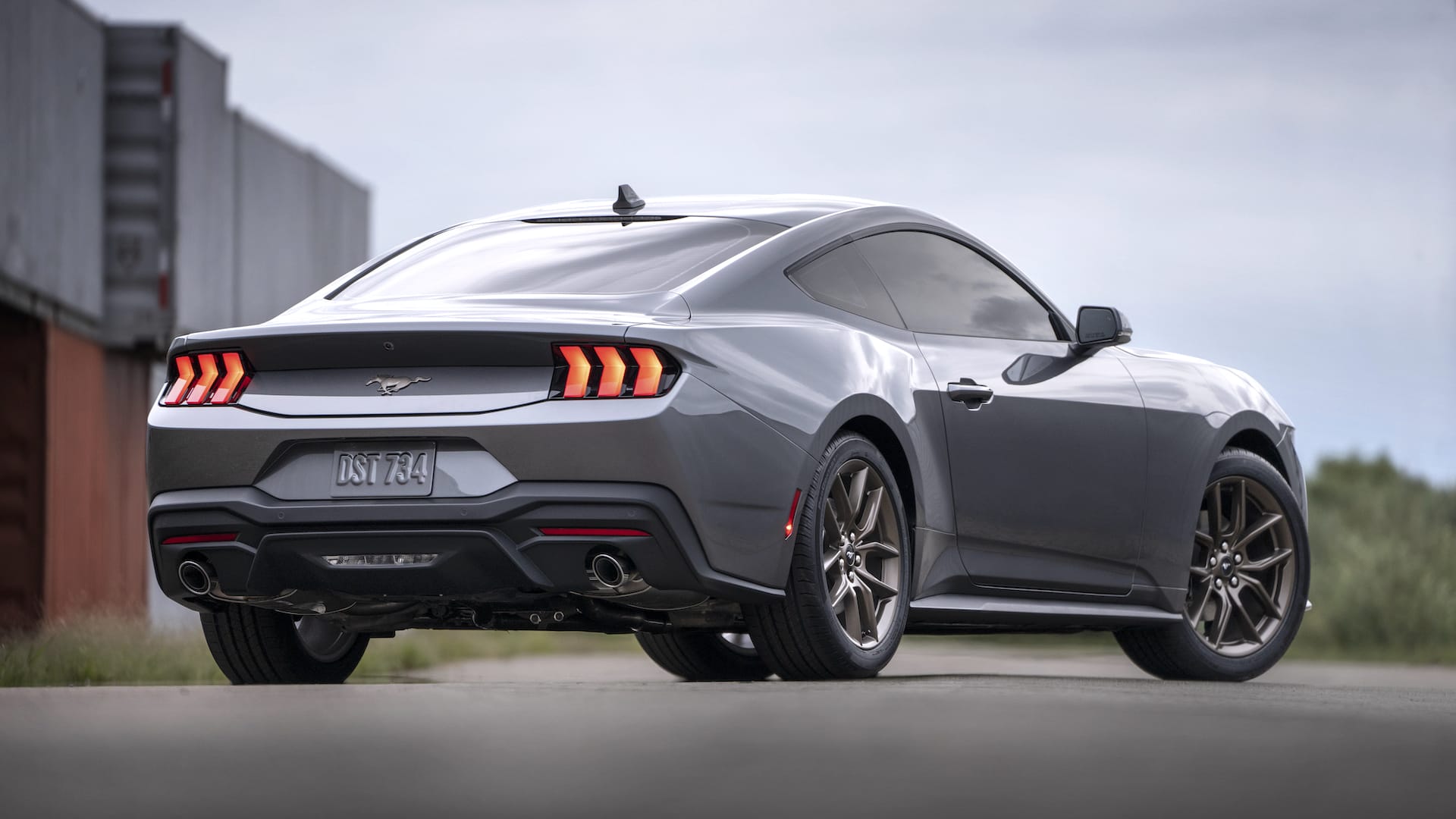
2024 Ford Mustang
© FordPowering the new 2024 Ford Mustang will be enhanced versions of a familiar pair of engines. The range will start with the 2.3-liter EcoBoost four-cylinder, with the classic 5.0-liter V-8 also making a return.
The 5.0 V-8 is promised to be the most powerful version in the Mustang’s history, and purists will be pleased to know that a six-speed manual transmission remains available. A 10-speed automatic returns from the sixth-gen model.
Rev-matching technology is included with the manual transmission for perfect downshifts. Owners can also rev the engine of their Mustang from the key fob, using new Remote Rev technology.
-
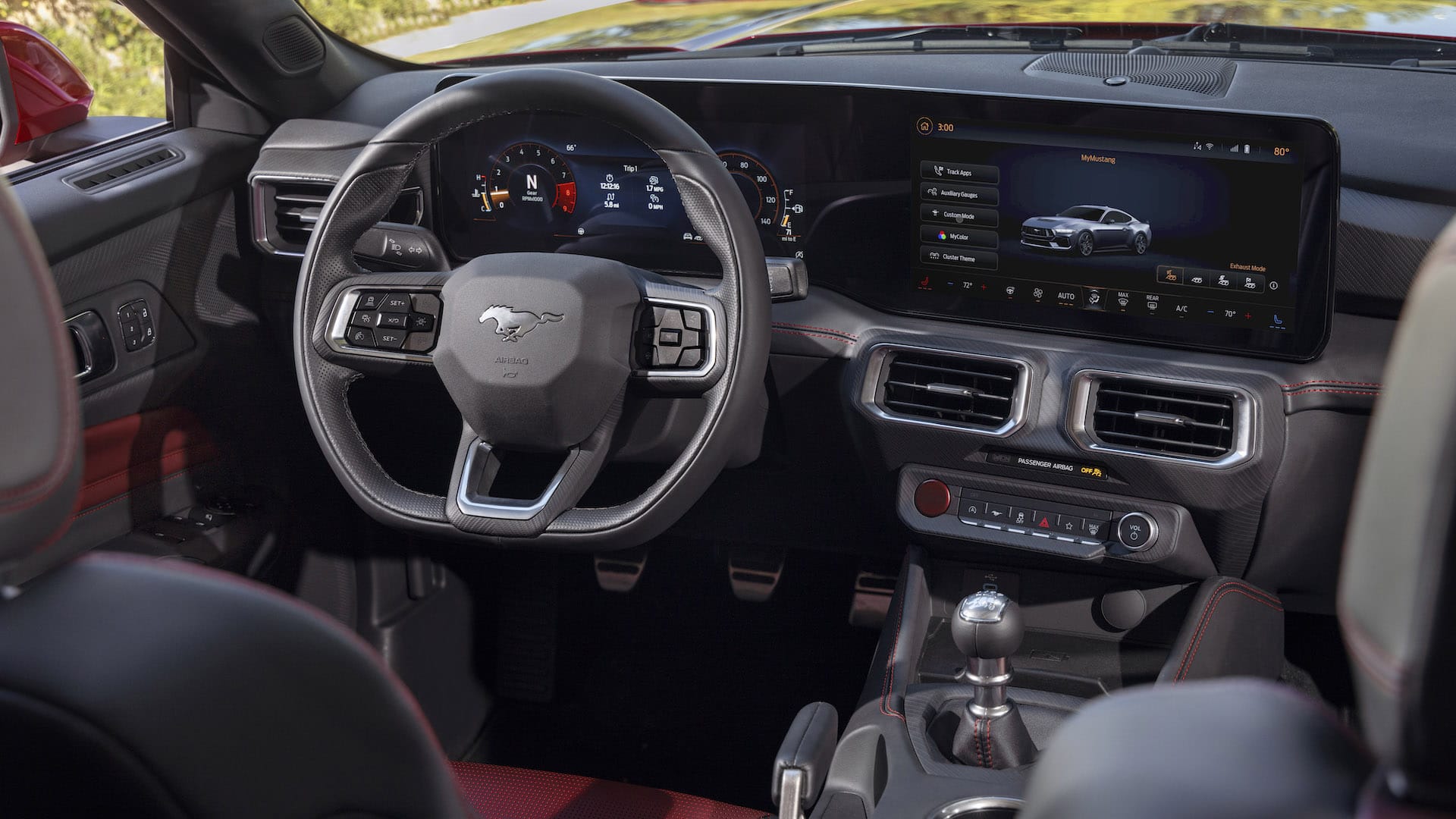
2024 Ford Mustang
© FordThe most dramatic change for the new Mustang can be found in the completely new interior. Inspired by the layout of a fighter jet cockpit, the seventh-generation Mustang’s cockpit uses two large display screens.
A 12.4-inch digital instrument panel can be customized to give owners their preferred style, with bespoke animations and drive mode effects. These have been created through the Unreal Engine 3D creation tool, also used in modern video games.
The digital dashboard can be configured to flow into the new 13.2-inch central multimedia display. Ford has followed modern trends by integrating most functions, including climate control, into the touchscreen system.
-
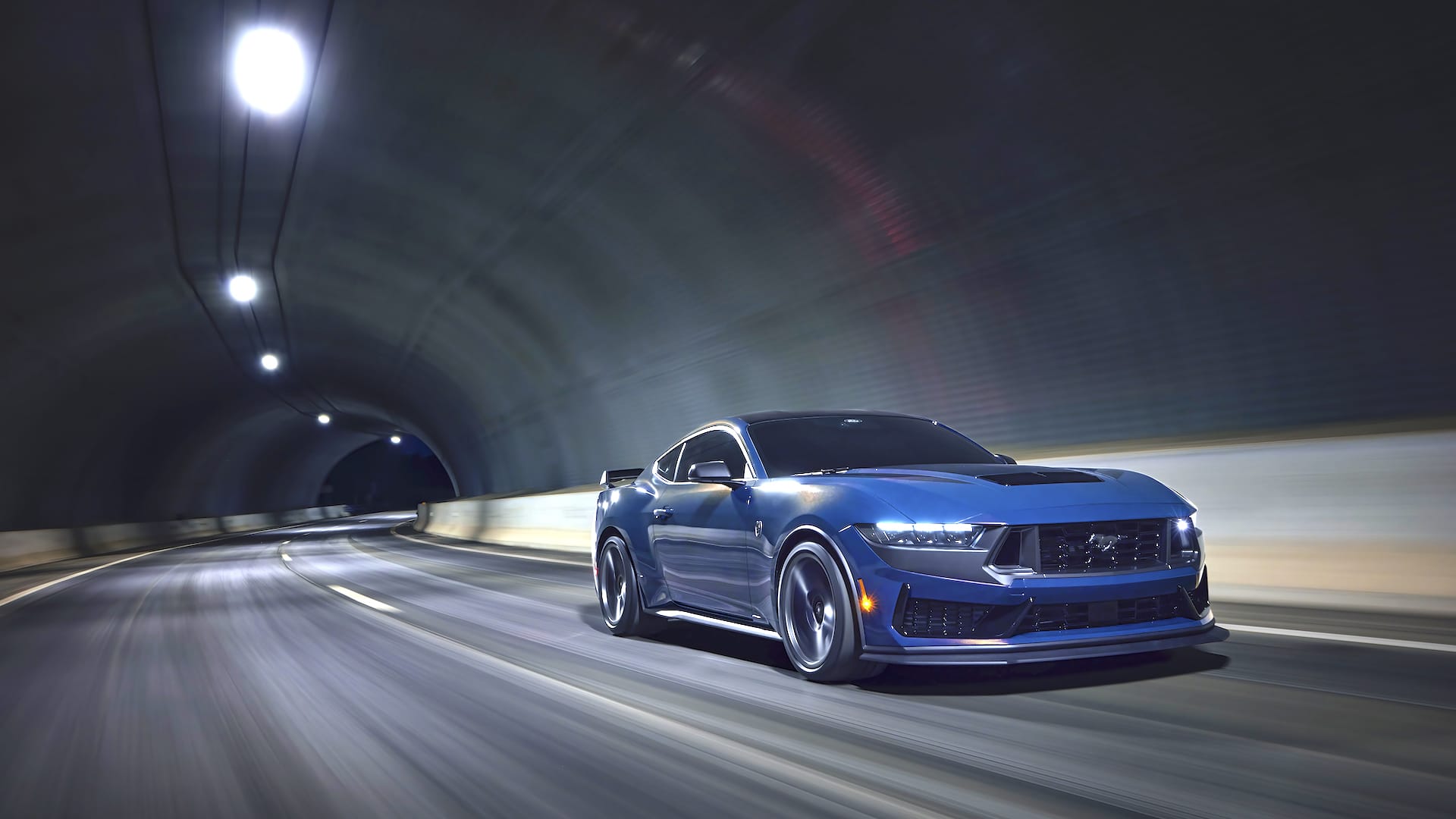
2024 Ford Mustang Dark Horse
© FordFord has given the new car the Mustang’s first new performance series for the first time in 21 years. The all-new Dark Horse range will be optimized for maximum ability on the street and race track, with more than 500 hp expected from the 5.0-liter V-8 engine.
Dark Horse Mustangs use a new dual throttle-body air intake, along with numerous exterior vents and grilles for peak airflow. A six-speed manual transmission will be standard, along with 19-inch Brembo brakes, upgraded suspension and bespoke interior details.
Carbon fiber wheels and an improved Handling Package are on the options list.
-

Ford Mustang to return the brand to Le Mans
© FordDriving development of the Dark Horse models is Ford’s desire to return to the Le Mans 24 Hour race with the new Mustang. A GT3 version of the latest, seventh-generation model is just one of several motorsport arenas the Mustang will enter into.
A GT4 version will also be developed for entry-level sports car racing, offering a cheaper alternative to the Mustang GT3.
In addition, the new S650 Mustang will appear in NASCAR, Australian Supercars and NHRA drag racing.
-

2024 Mustang starts new NASCAR pace car career
© FordFord has guaranteed the new seventh-generation Mustang will be a NASCAR leader during 2023. The new model will be the official pace car for seven NASCAR races during the year, including the new street course event in Chicago.
Finished in Grabber Blue with eye-catching graphics, the Mustang GT pace car has been left stock underneath. However, with 480 horsepower, the Mustang already has the ability to lead the NASCAR field effectively.
-

New Ford Mustang takes first Australian Supercars victory
© FordFord wasted no time in continuing the Mustang’s success Down Under, and the seventh-generation model has already claimed its first win in the Australian Supercars series.
Tickford Racing’s Cam Waters took victory, driving the Monster Energy-sponsored Mustang. His win came in the opening round of the season, as part of the Newcastle 500 event.
The previous Mustang won two Supercars Championships, and the Blue Oval will be looking for more success with its new Generation 3-specification race car.
-

Seventh-generation Mustang creates new RTR drift model
© FordThe all-new Ford Mustang has even convinced drift legend Vaughn Gittin Jr. to return to competition. In collaboration with RTR Vehicles, Ford has created three Mustang RTR Spec 5-FDs for use in Formula Drift.
Each of the RTR competition models produces more than 1,300 horsepower, and benefits from bespoke suspension upgrades. The development work with RTR has also led to a special add-on for the street Mustang.
The seventh-generation Mustang is now available with a segment-first – and track-only – electronic drift brake. As part of the optional Mustang Performance Pack, this emulates the hydraulic drift brake found in RTR’s Formula Drift Mustang.
-

Ford unveils new Mustang GT3 at Le Mans
© FordAhead of the 2023 24 Hours of Le Mans endurance race, Ford took the opportunity to reveal the FIA GT3-specification version of the seventh-generation Mustang.
Based on the Mustang Dark Horse, Ford Performance has worked with Multimatic and M-Sport to produce the new race car.
The announcement confirmed that the new Mustang will compete in multiple GT3 championships during 2024, campaigned by various customer racing teams. The highlight will be an entry into Le Mans 2024, where Ford hopes to emulate its previous success with the GT supercar.
-

Coyote engine to power Mustang GT3 Le Mans racer
© FordFord’s relationship with Multimatic led to the success of the GT race car, and the same company will build and support the Mustang GT3.
M-Sport, Ford’s long-term partner in the World Rally Championship, is responsible for assembling the Mustang GT3’s engine. A Ford Performance-developed 5.4-liter Coyote V-8 will power the new Mustang.
The Mustang GT3 race car also features a bespoke suspension setup, rear-mounted transaxle gearbox, carbon fiber body panels and a unique GT3 aero package.
-

Ford versus everyone with new Performance logo
© FordThe unveiling of the new Mustang GT3 also saw Ford reveal a new global Ford Performance logo and livery design. It will be used across a host of racing models – and appear on merchandise and accessories, too.
At the unveiling event, Ford CEO Jim Farley said: “Ford and Le Mans are bound together by history. And now we’re coming back to the most dramatic, most rewarding and most important race in the world.
“It is not Ford versus Ferrari anymore. It is Ford versus everyone. Going back to Le Mans is the beginning of building a global motorsports business with Mustang, just like we are doing with Bronco and Raptor off-road.”
Ford is determined to keep the Mustang at the cutting edge, whether that is on track or on the street.